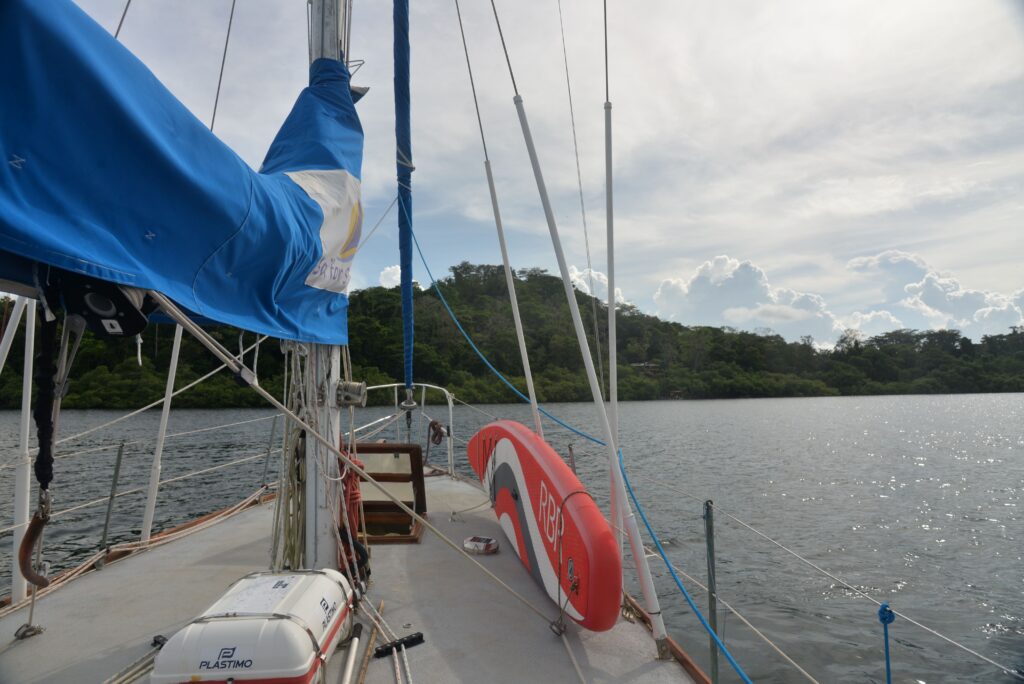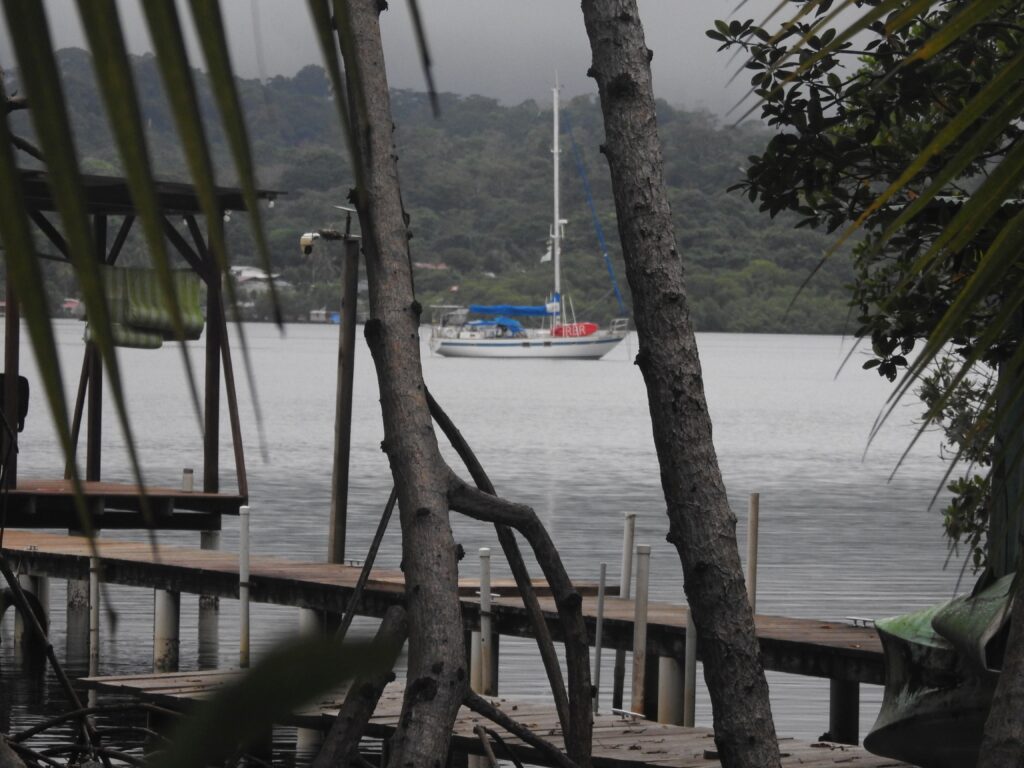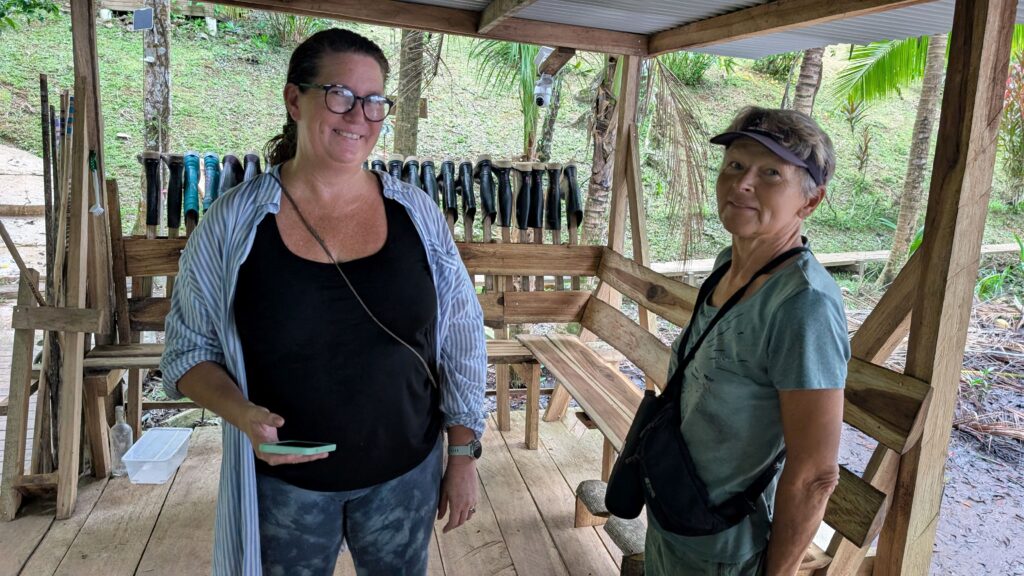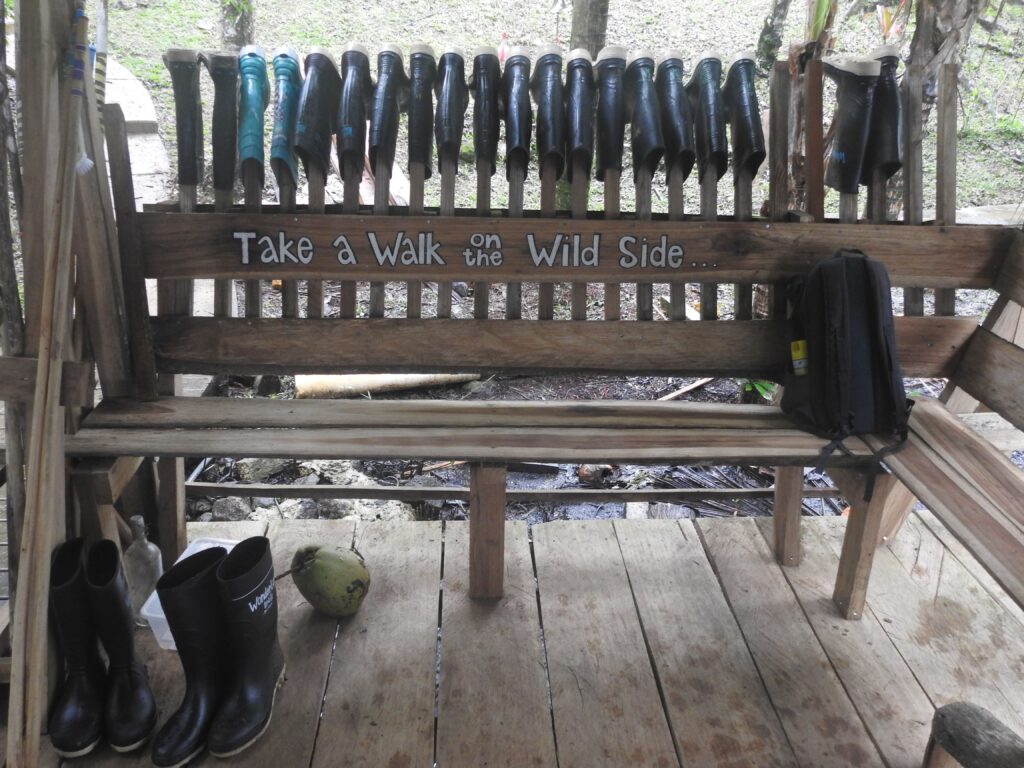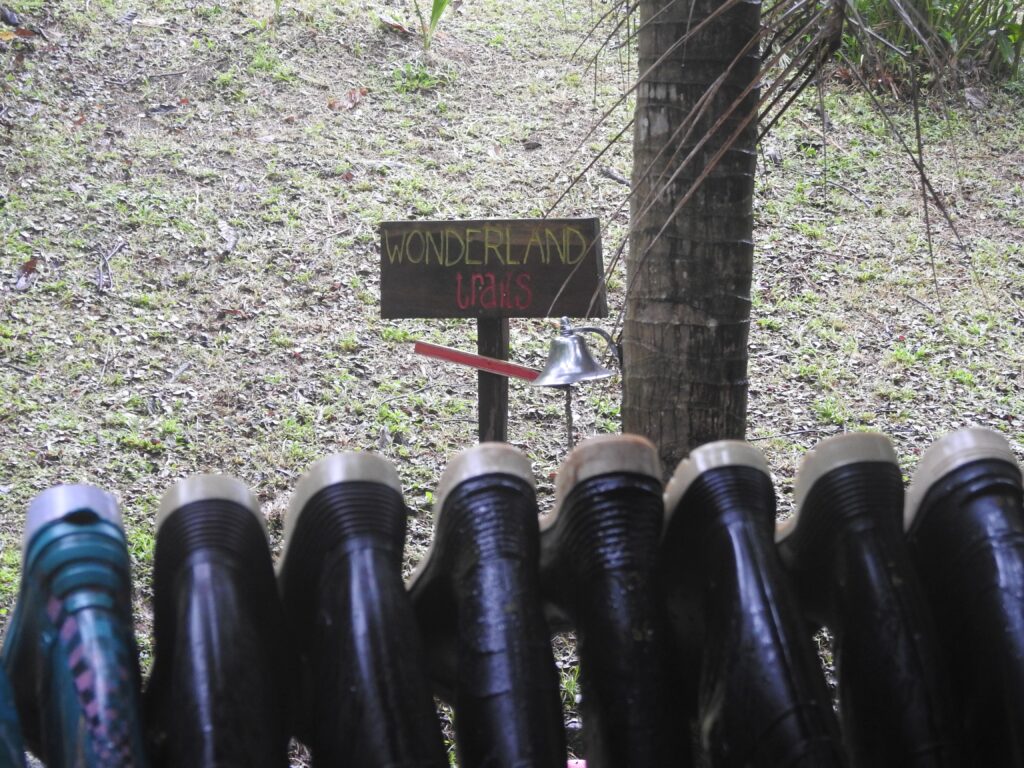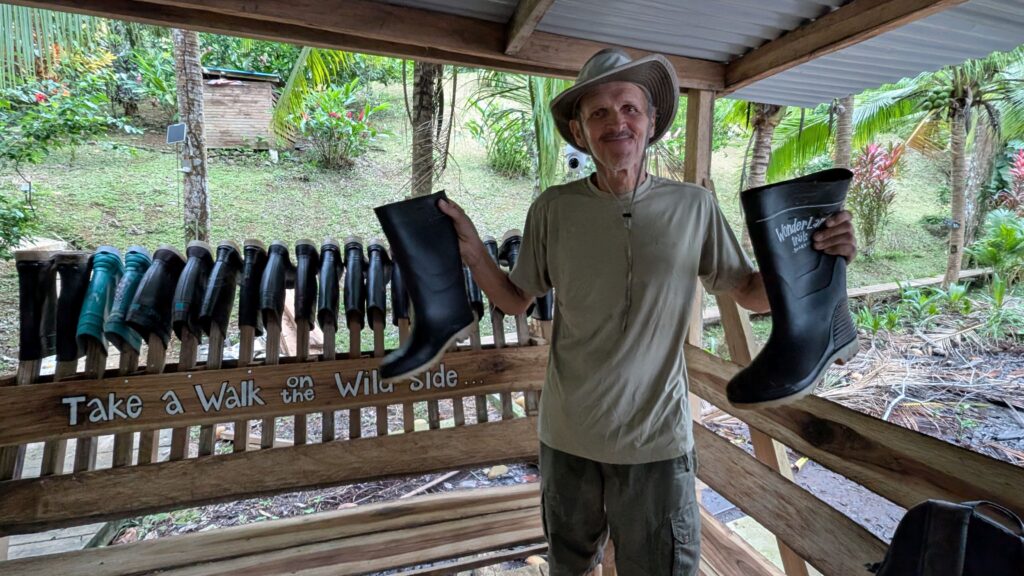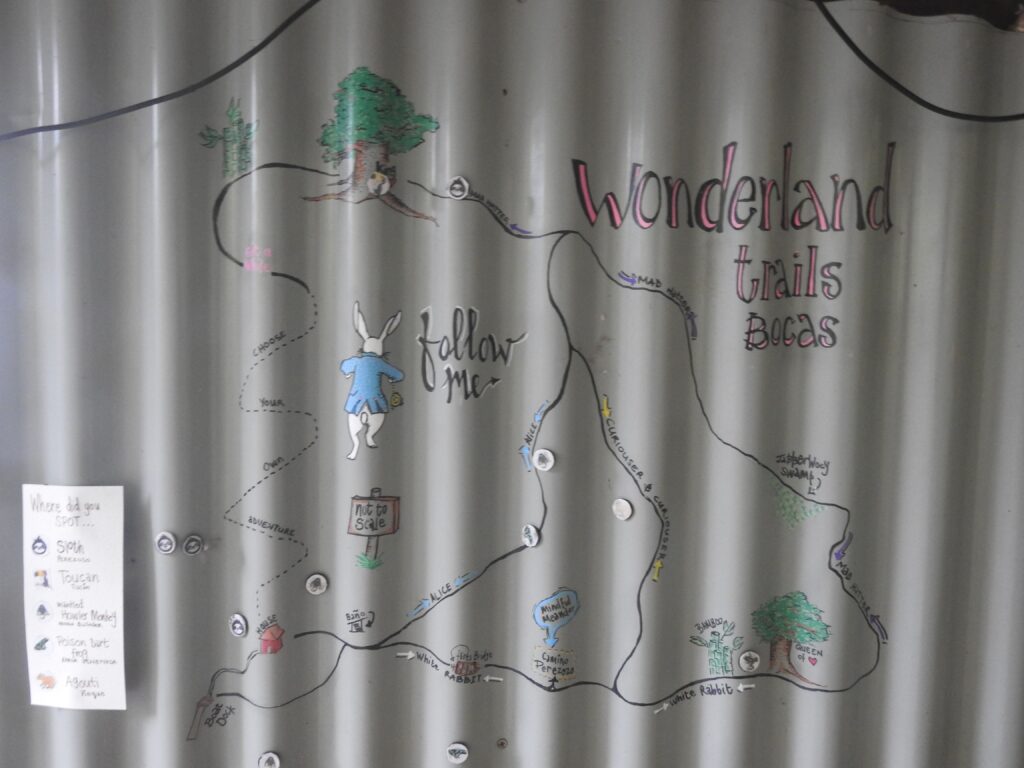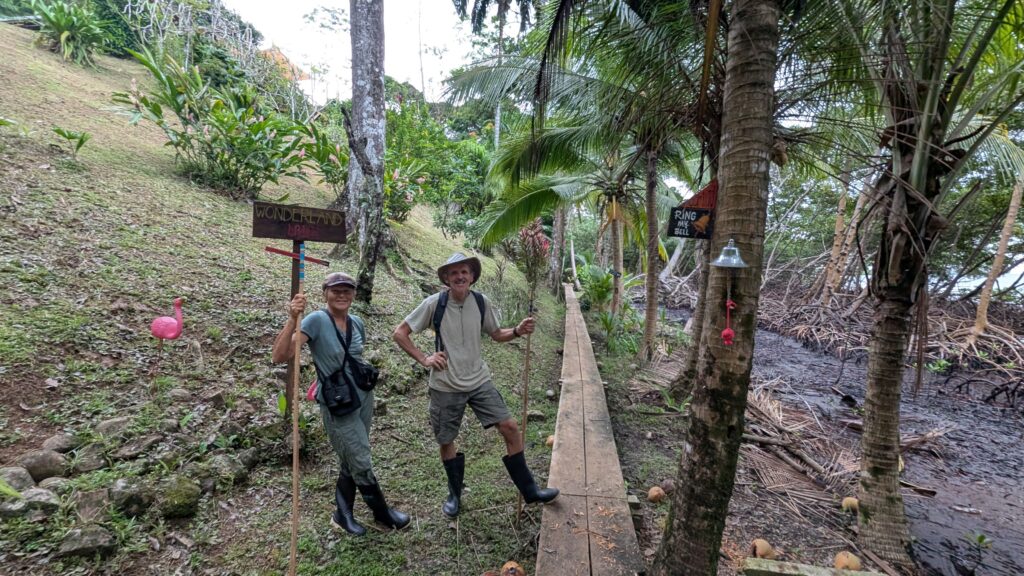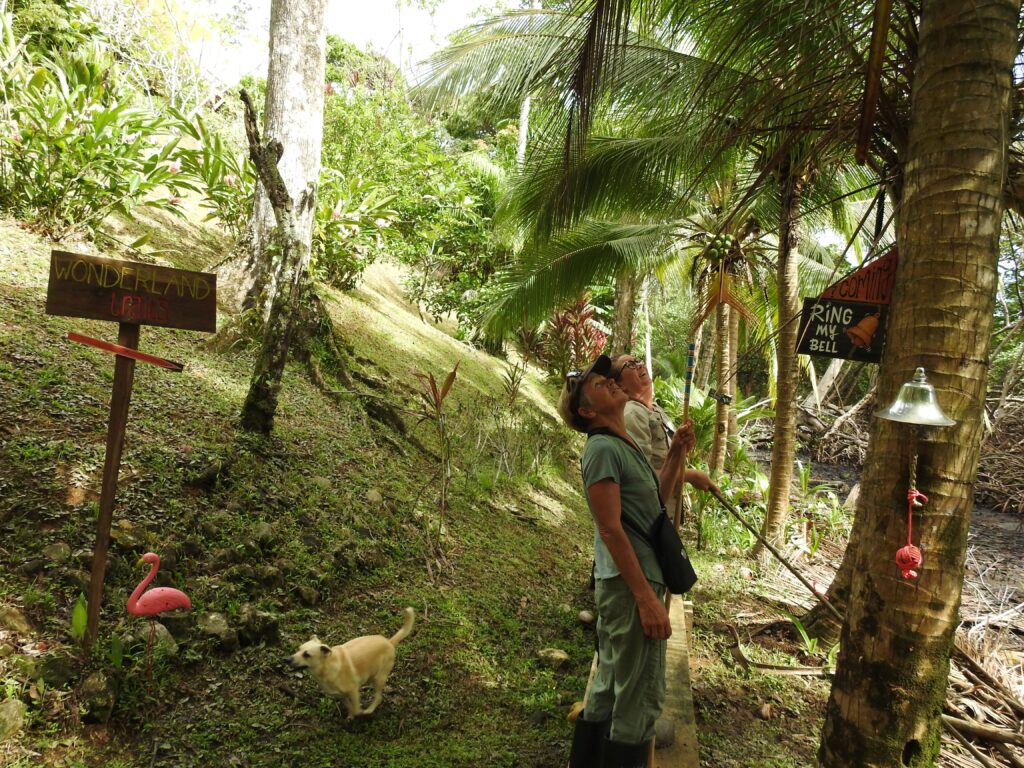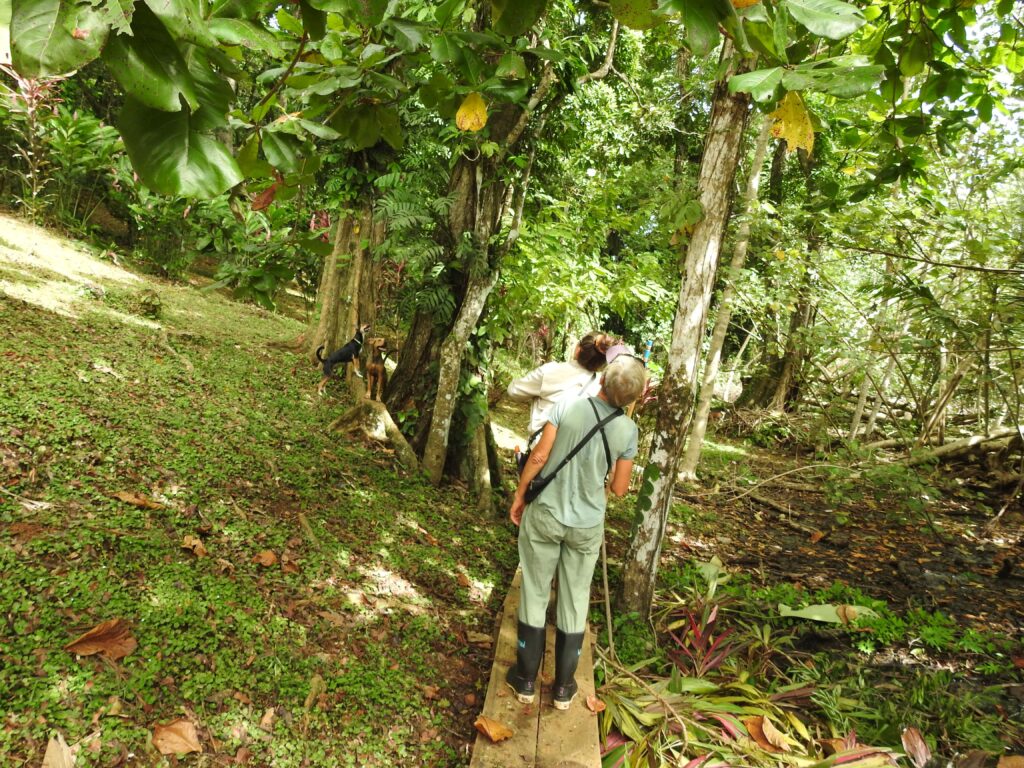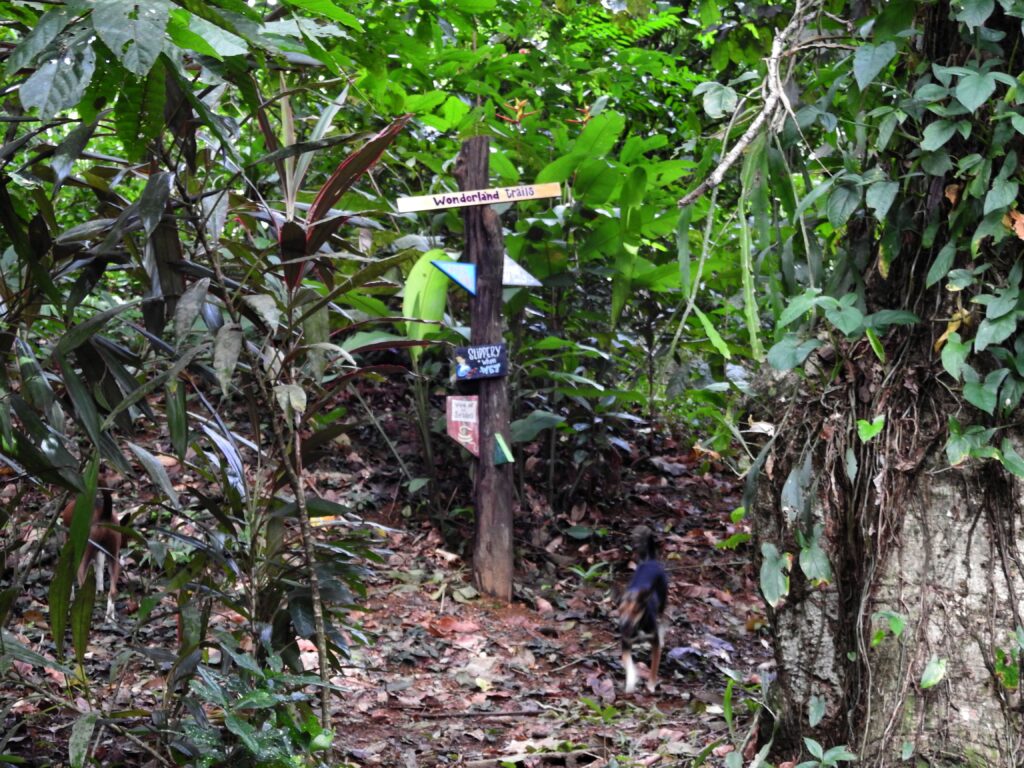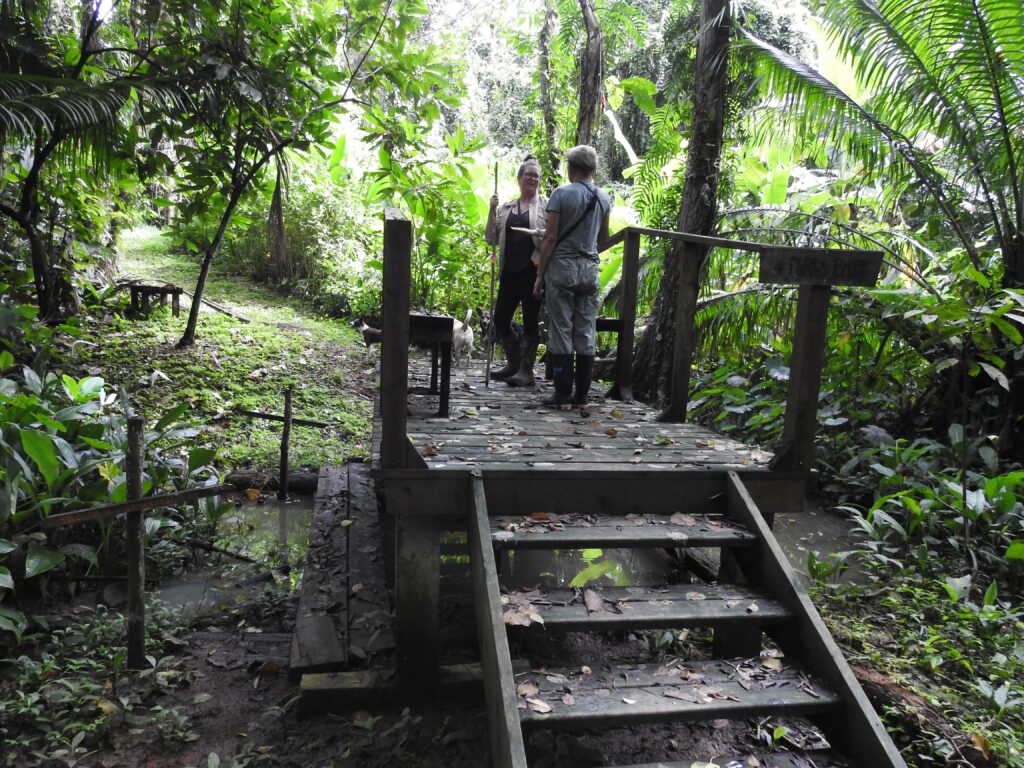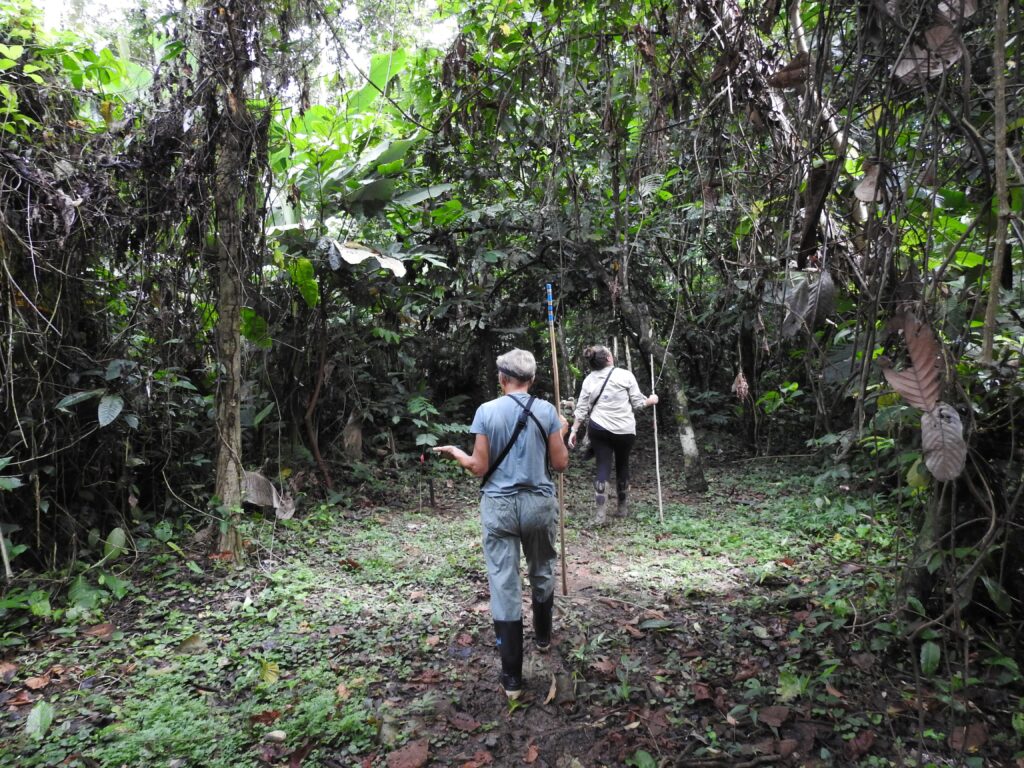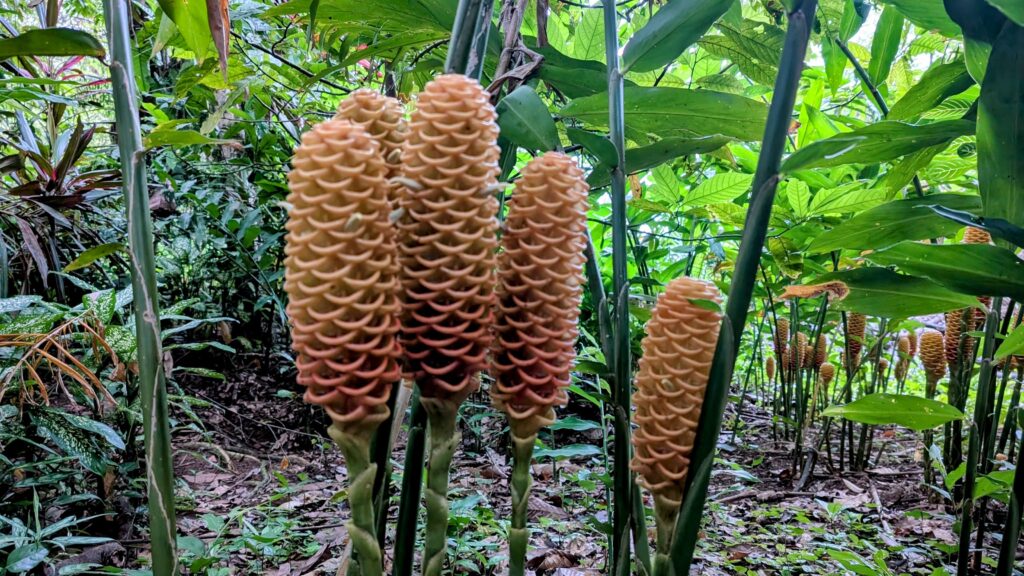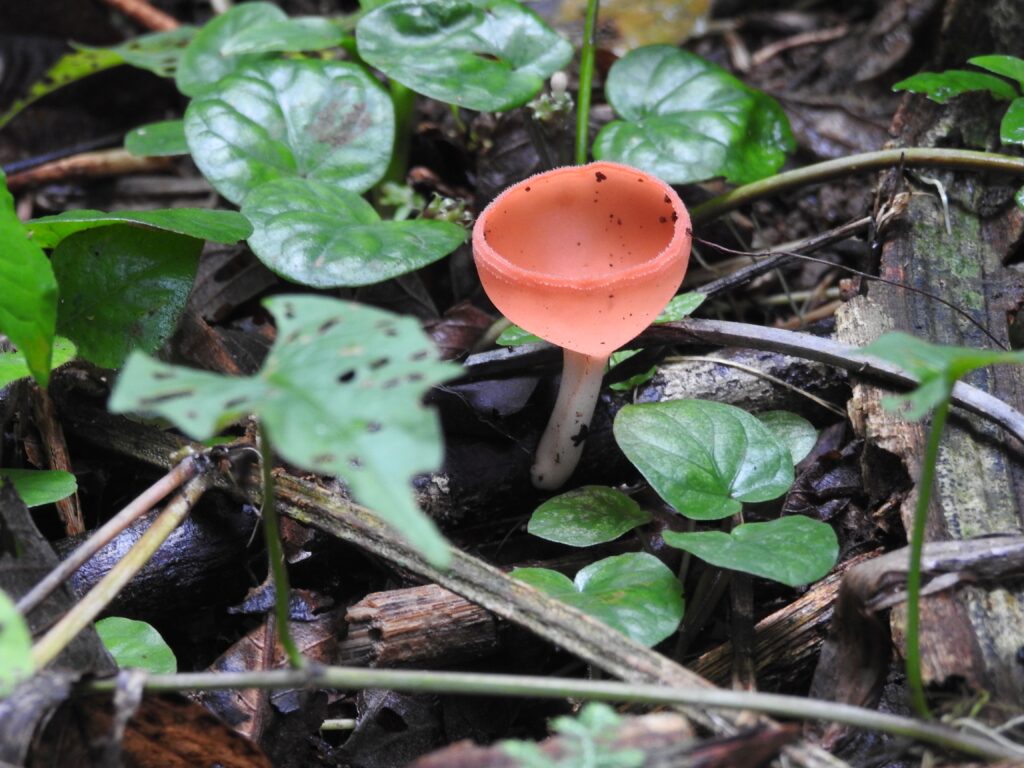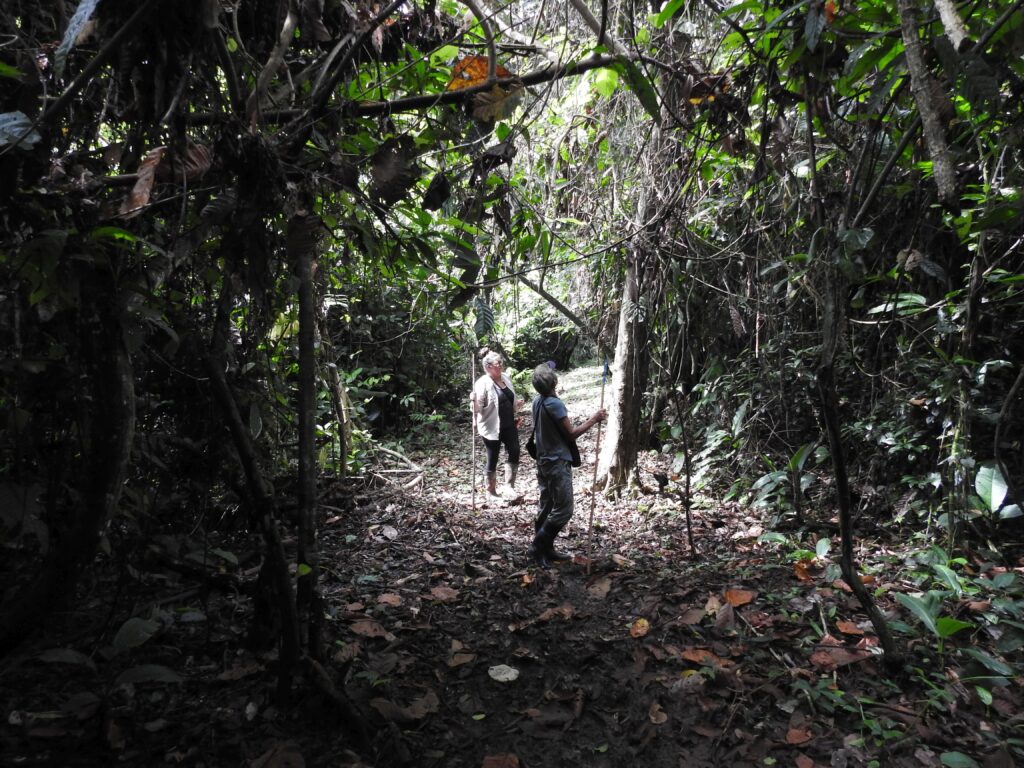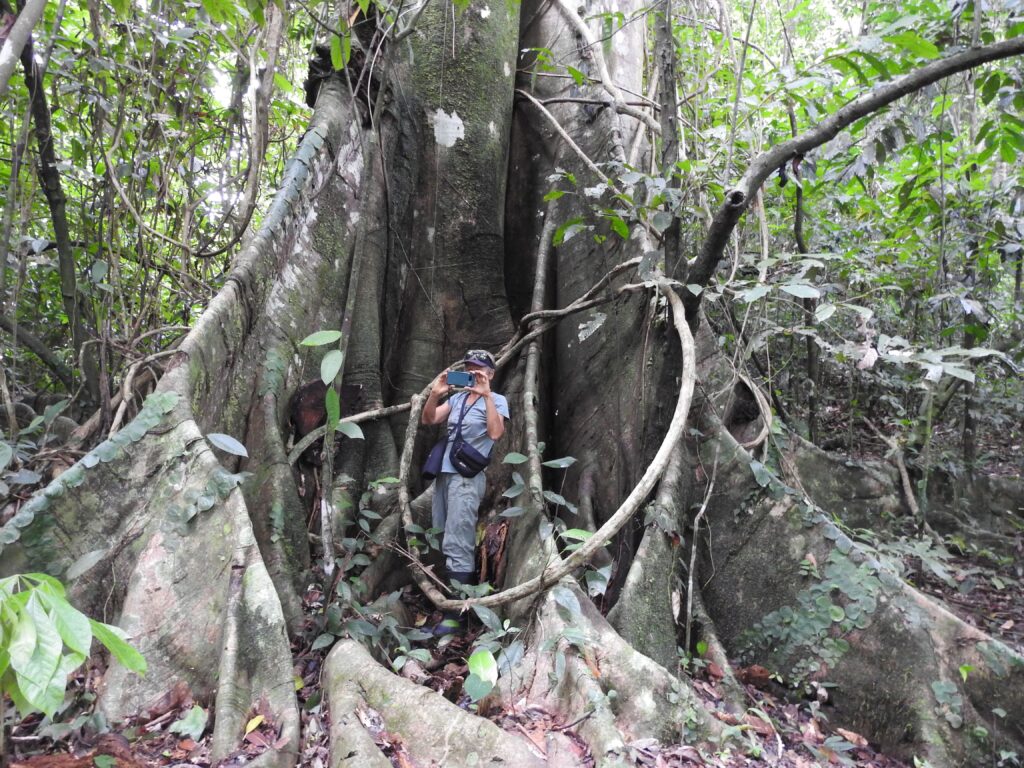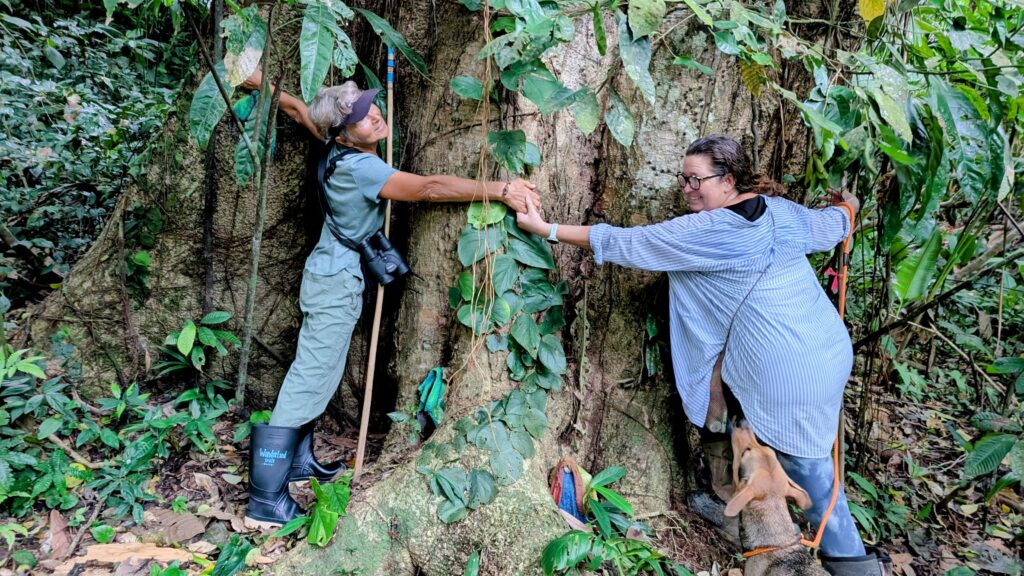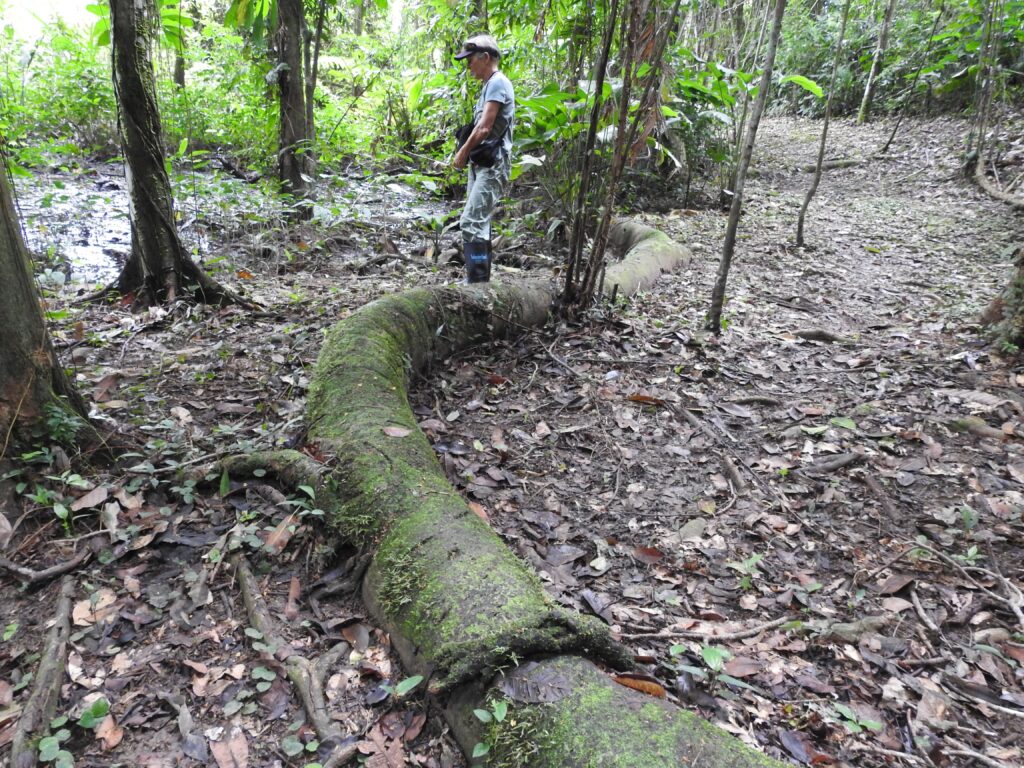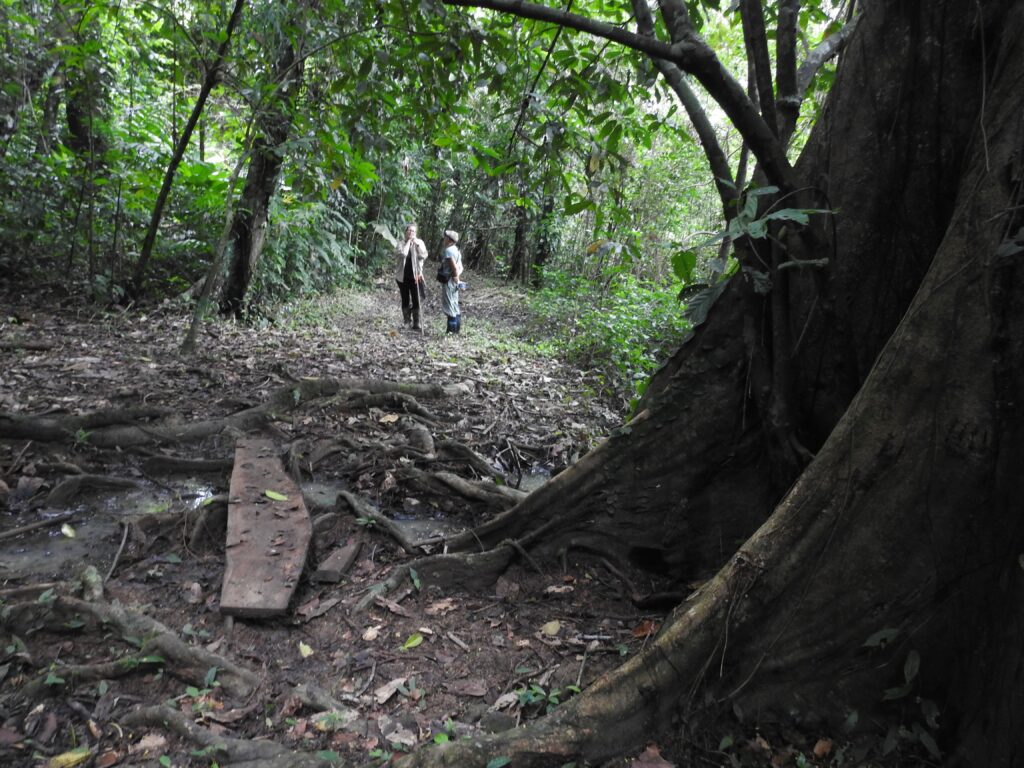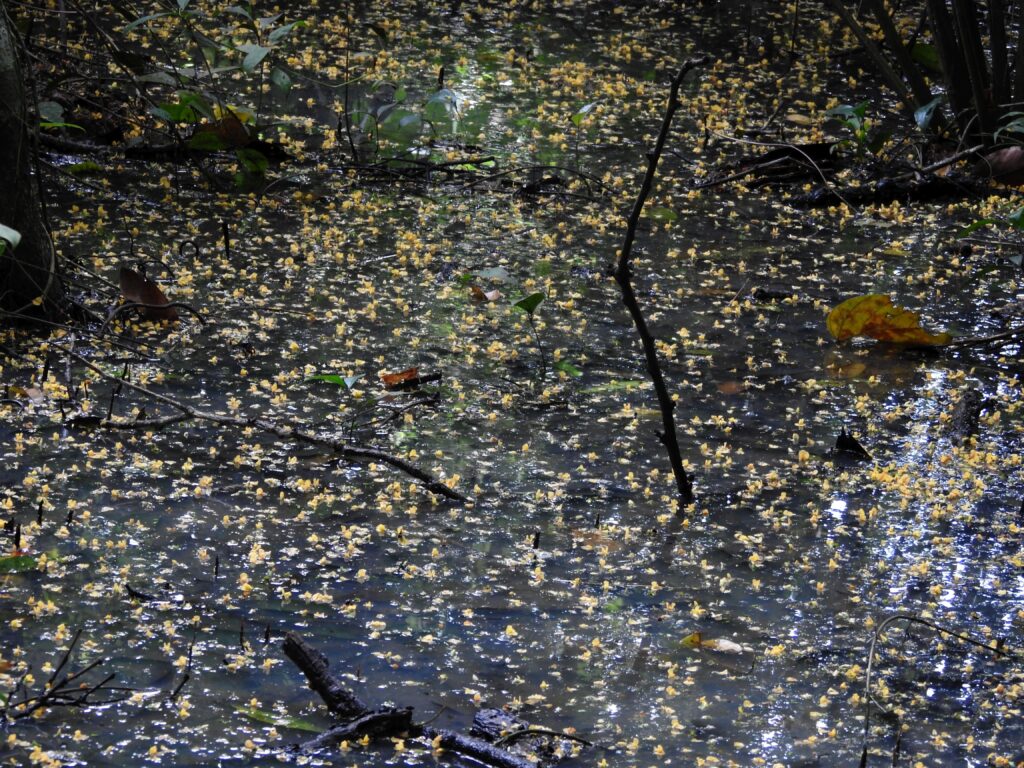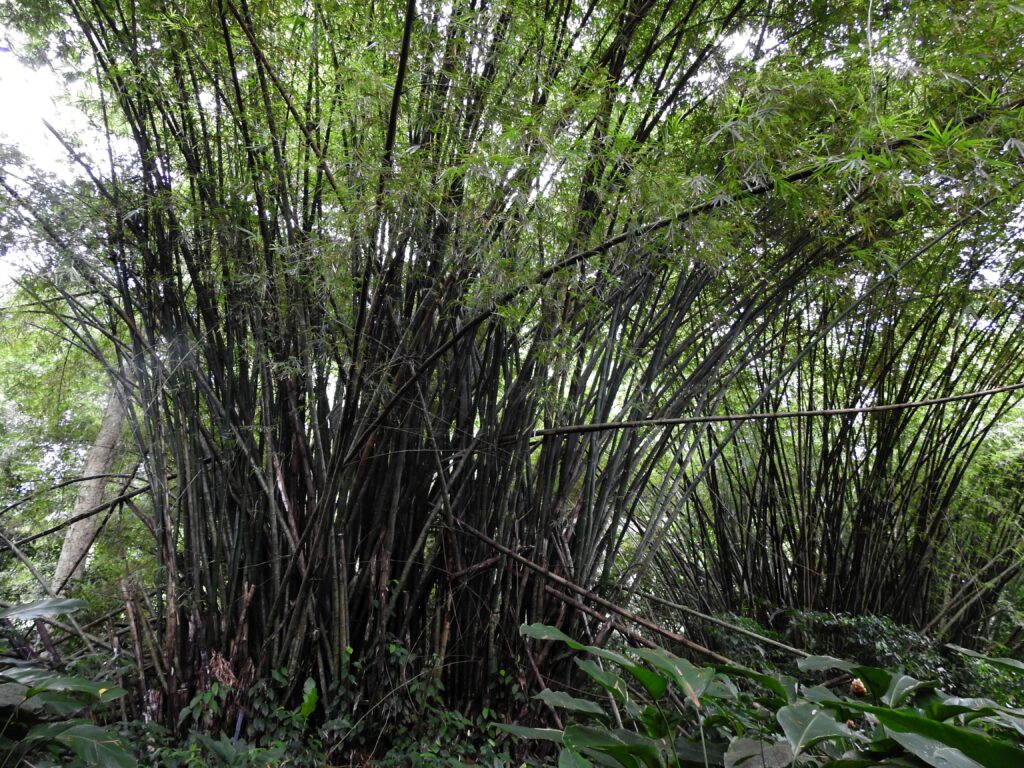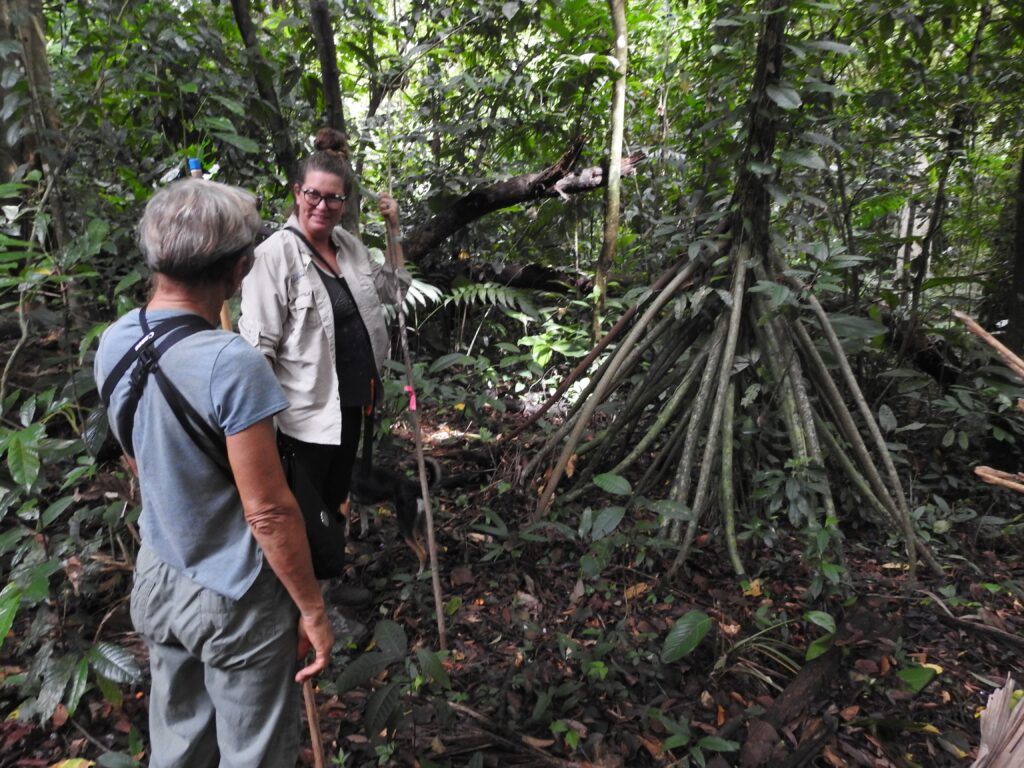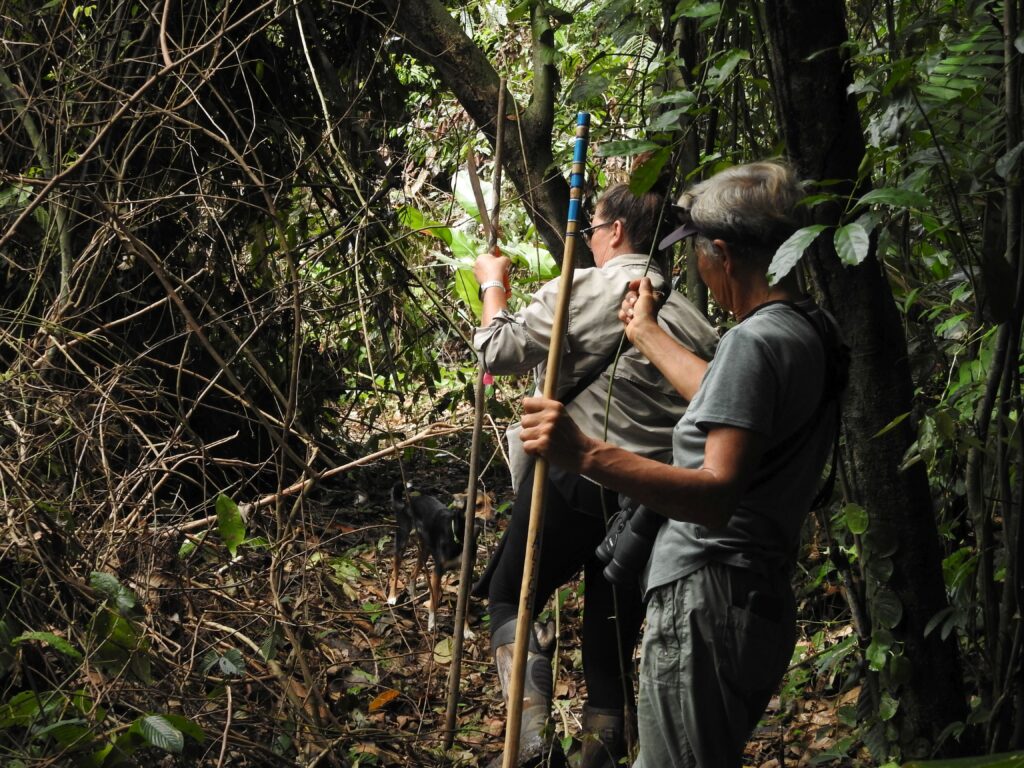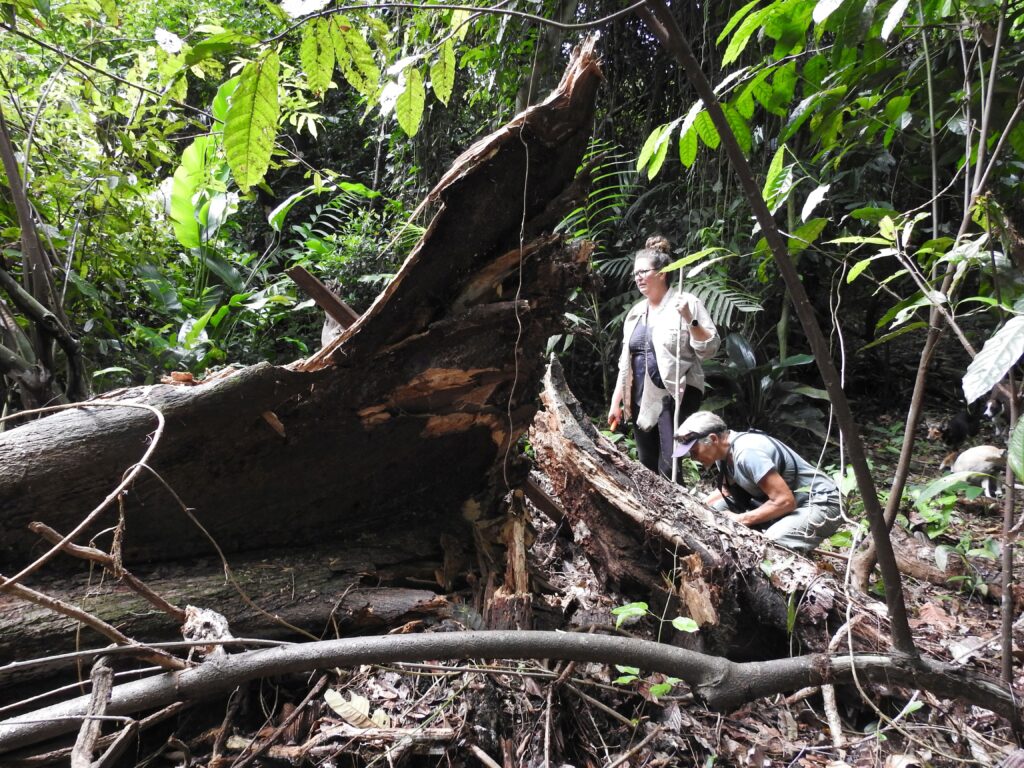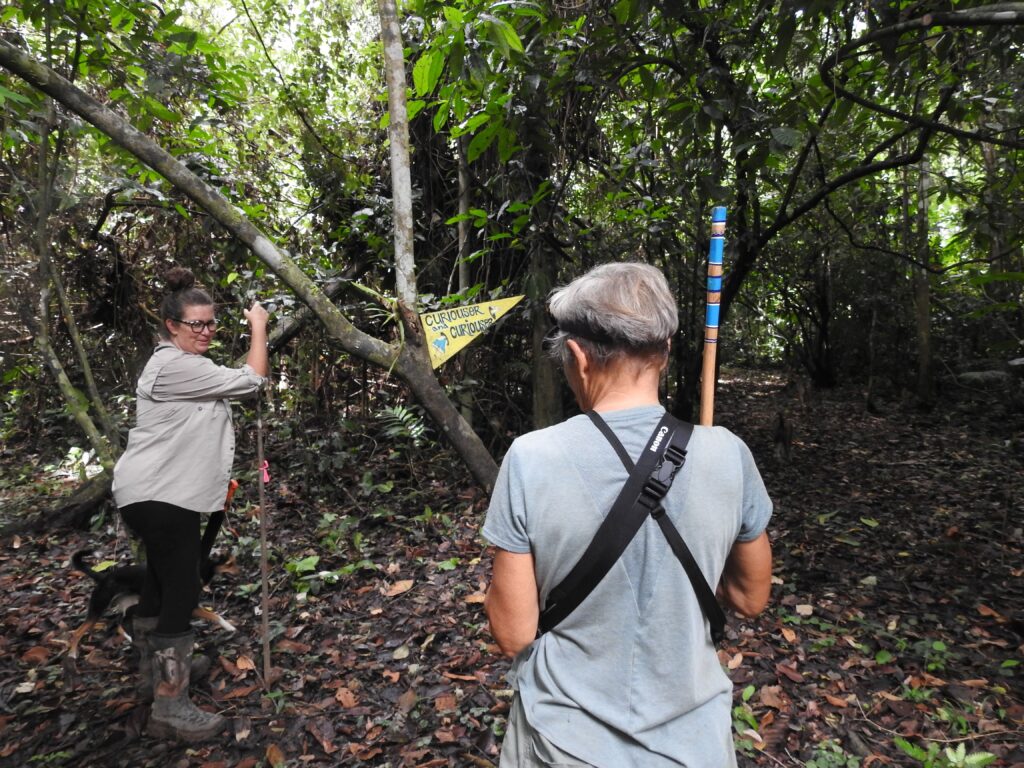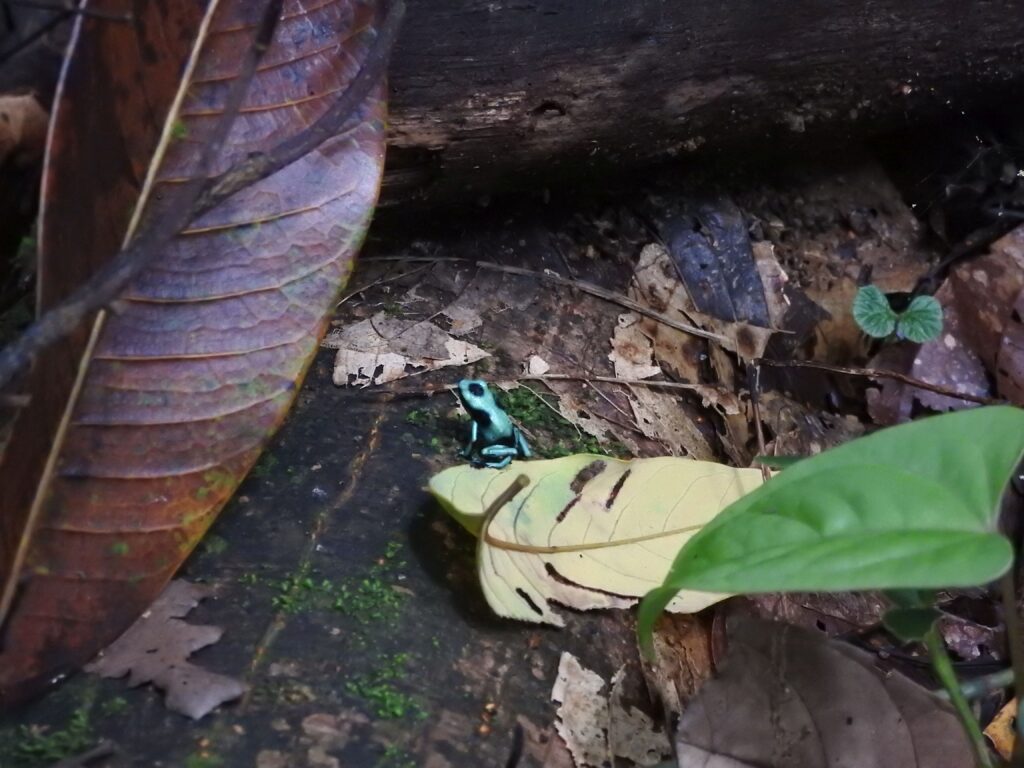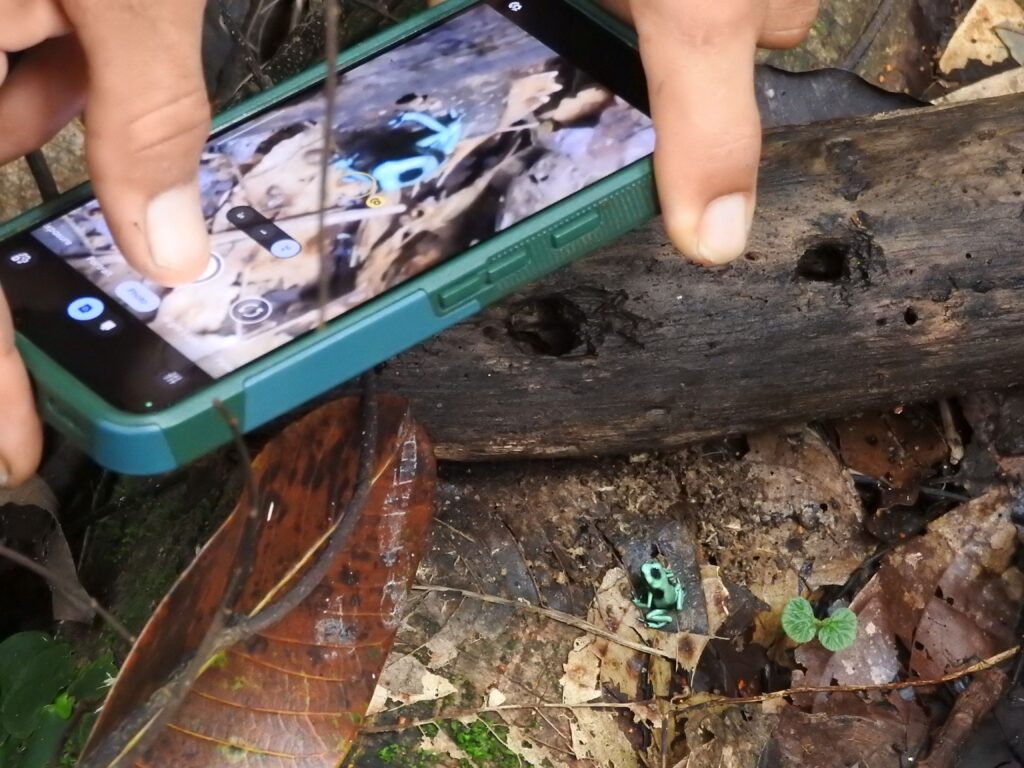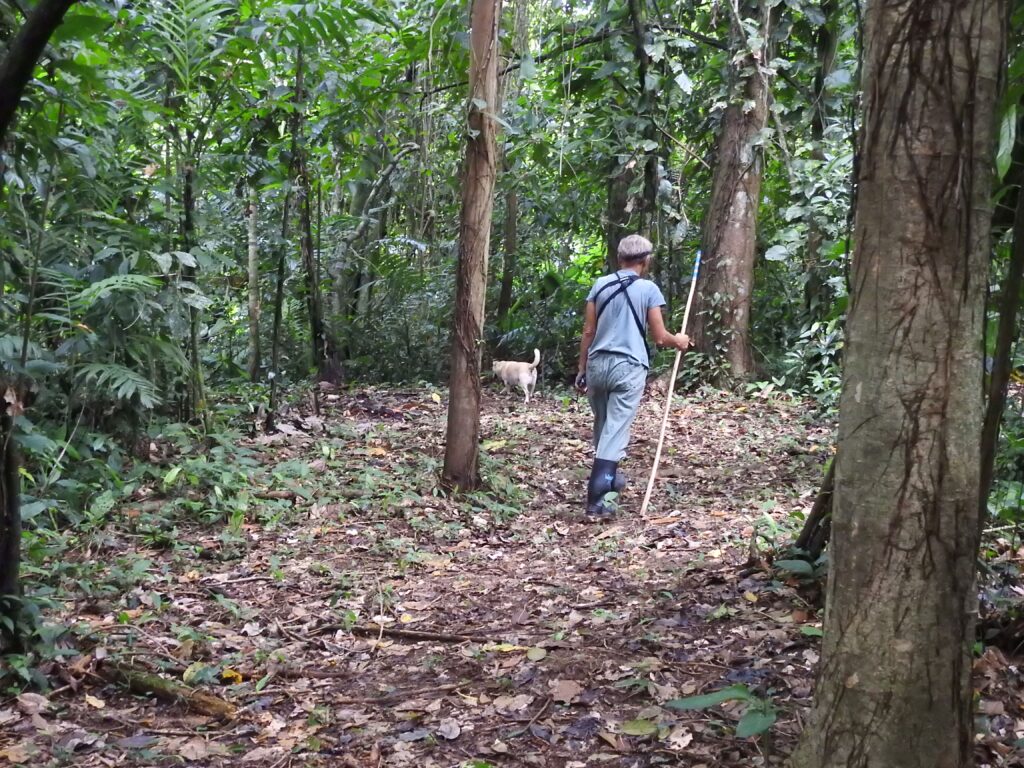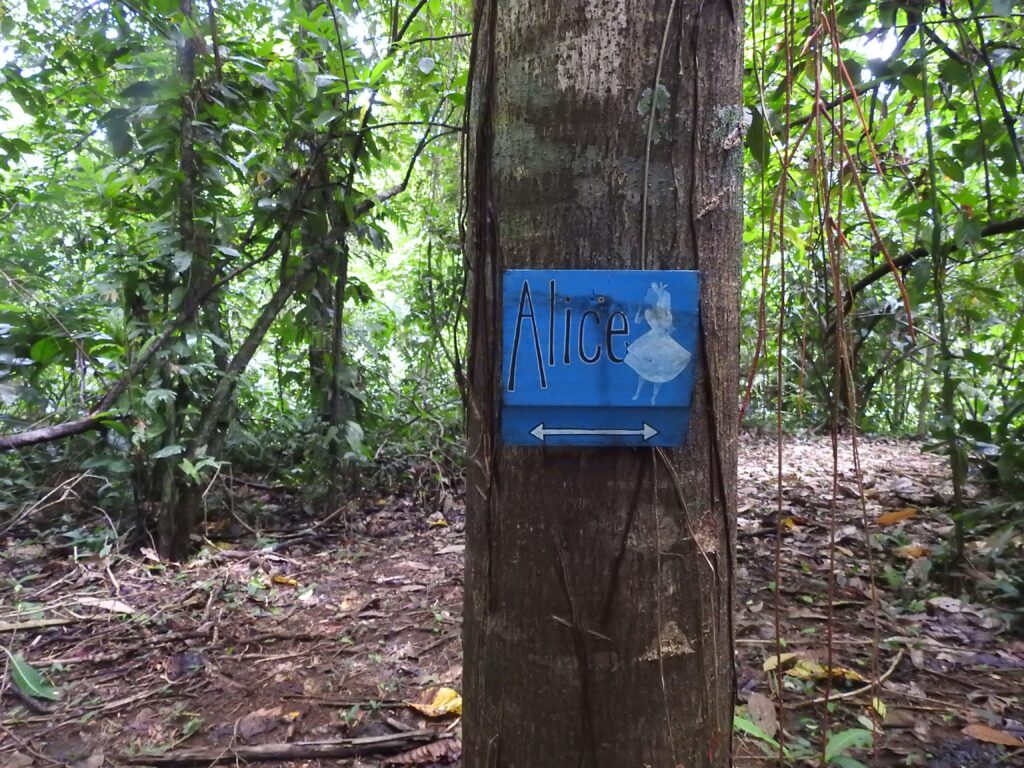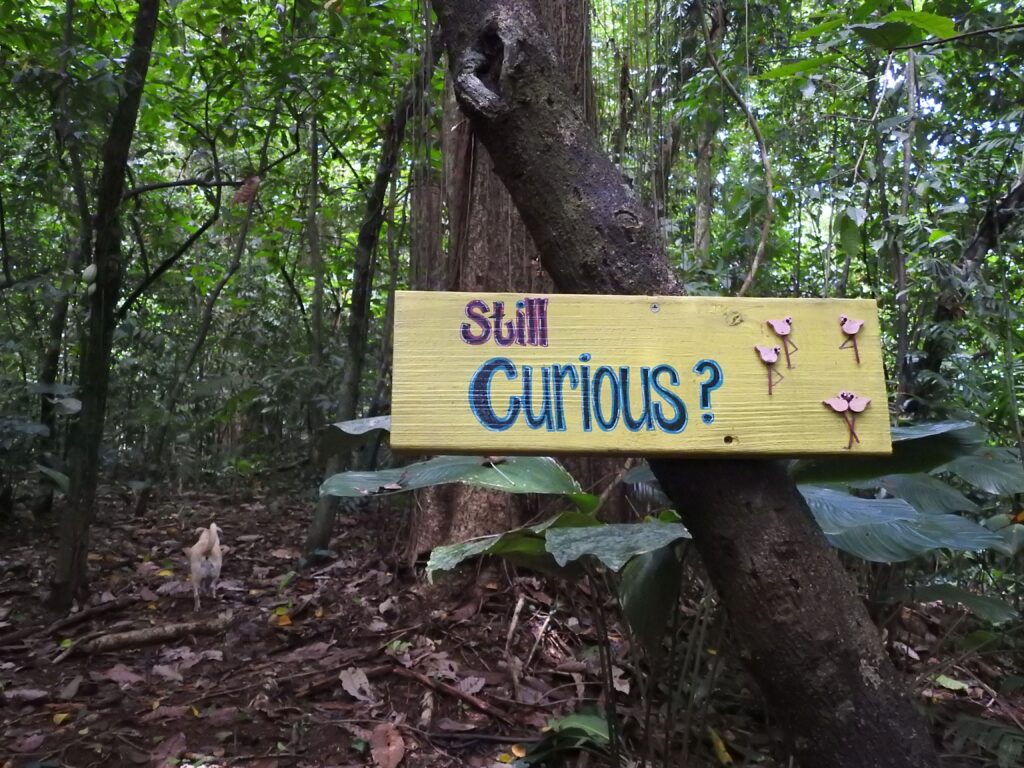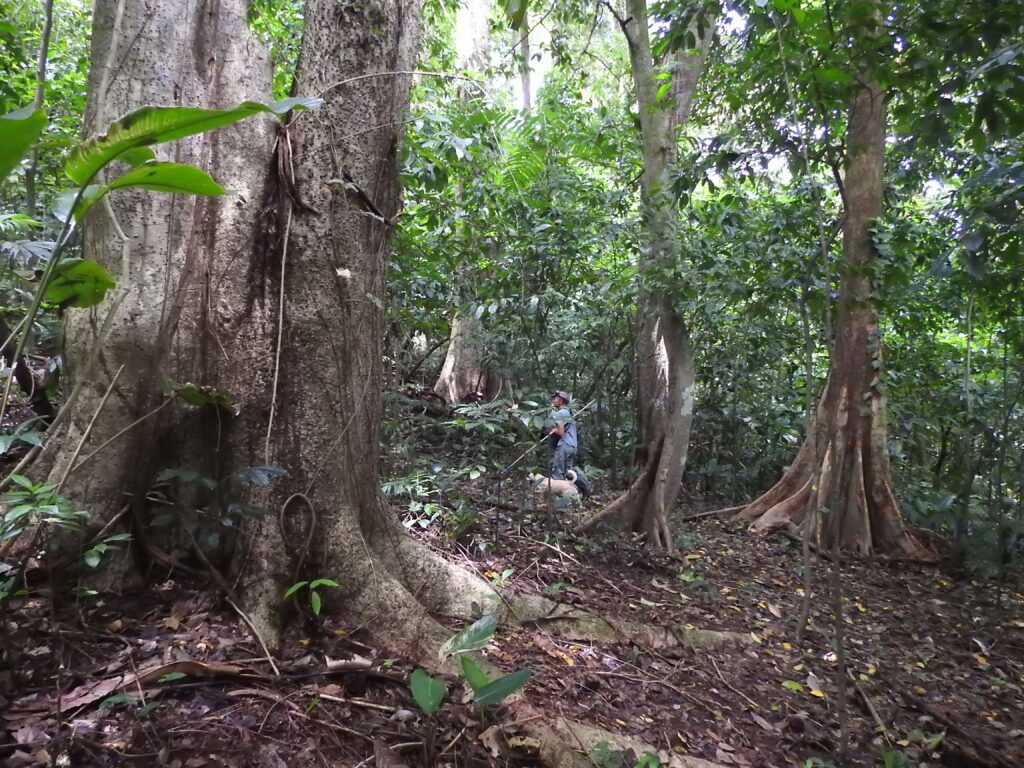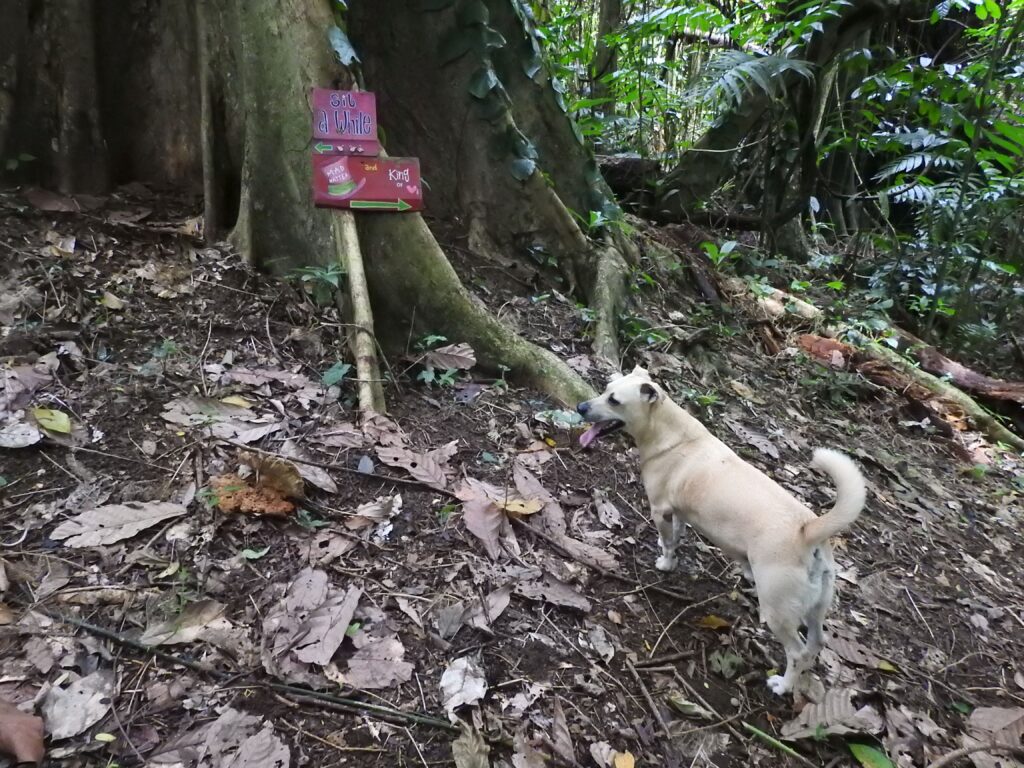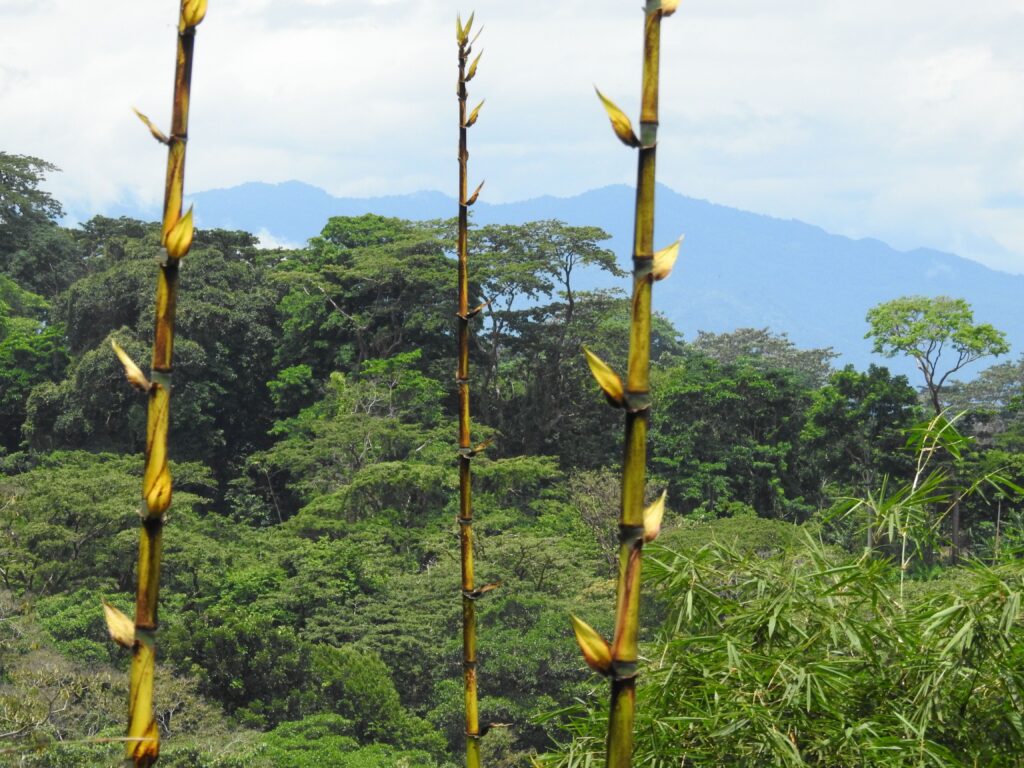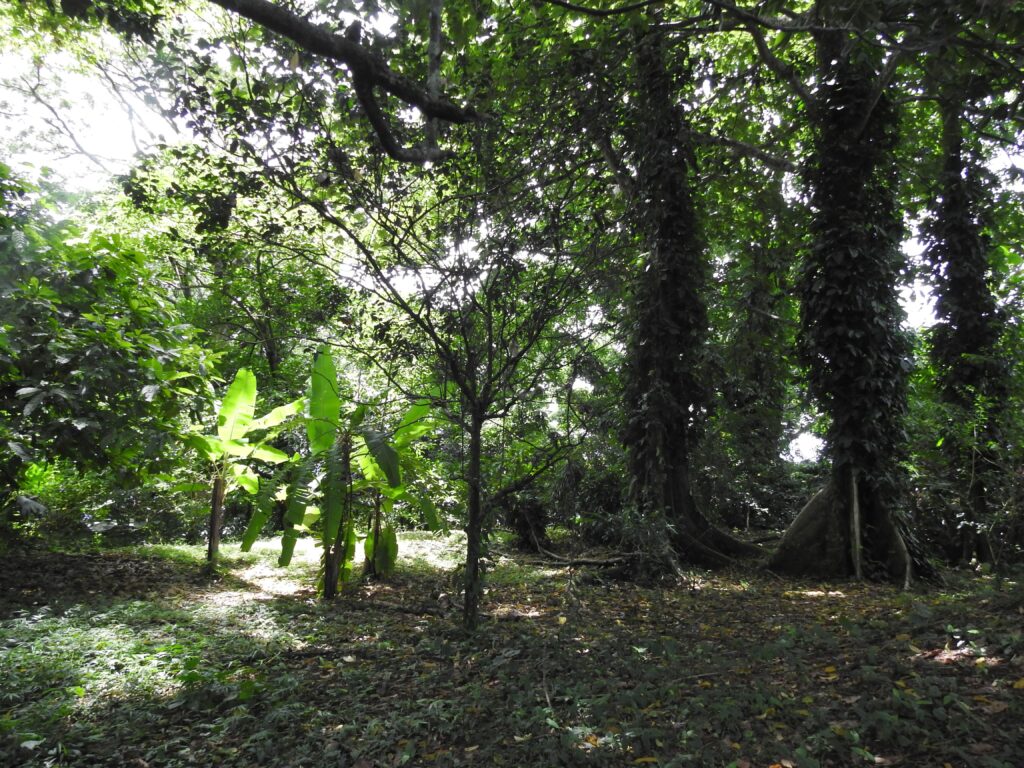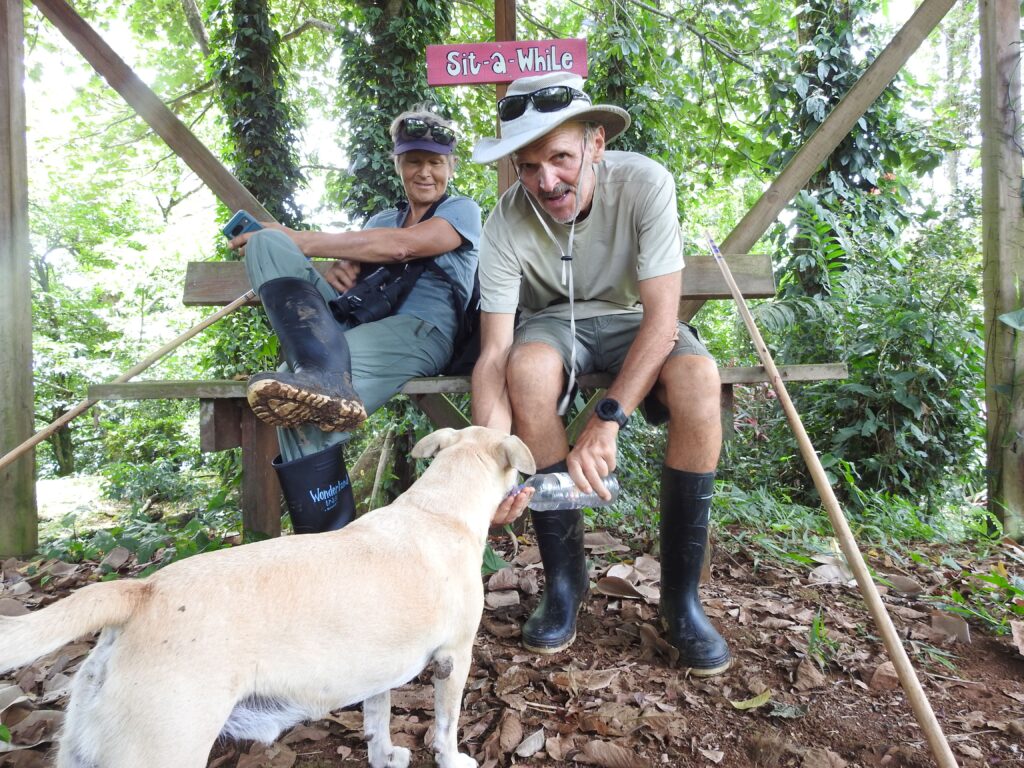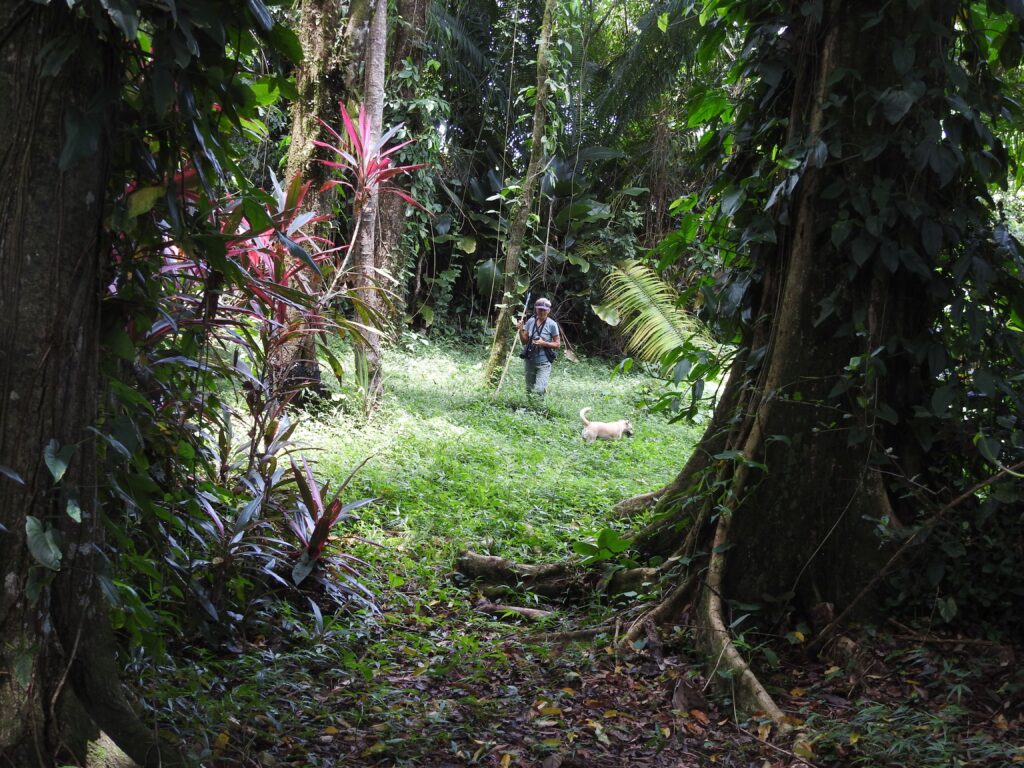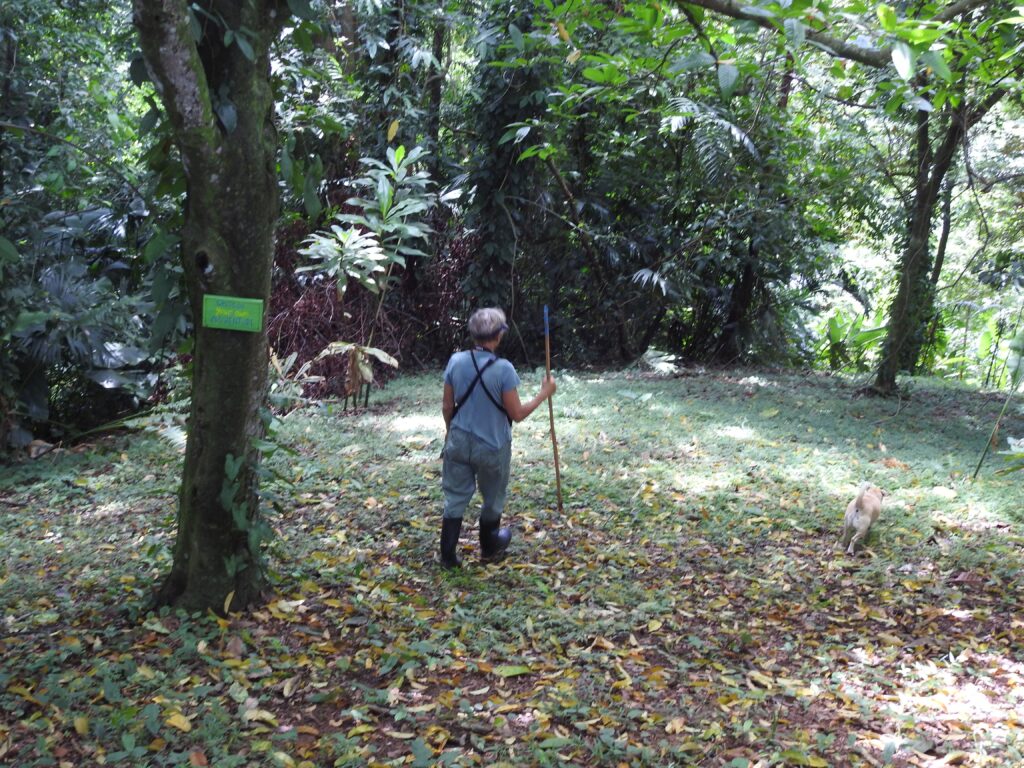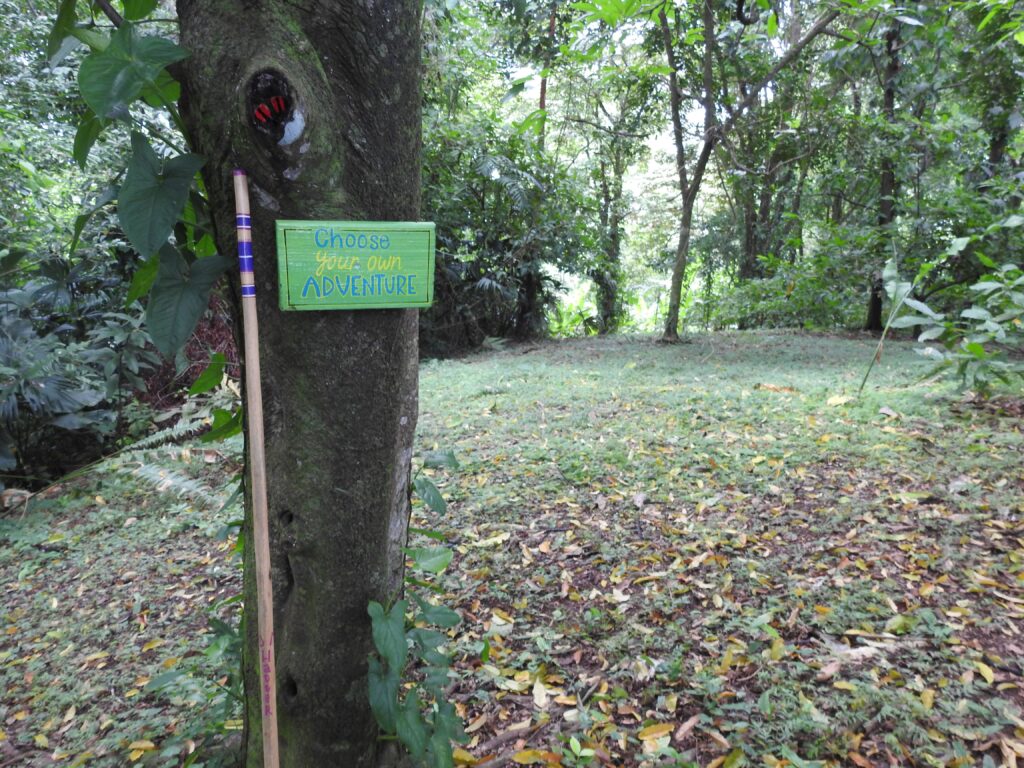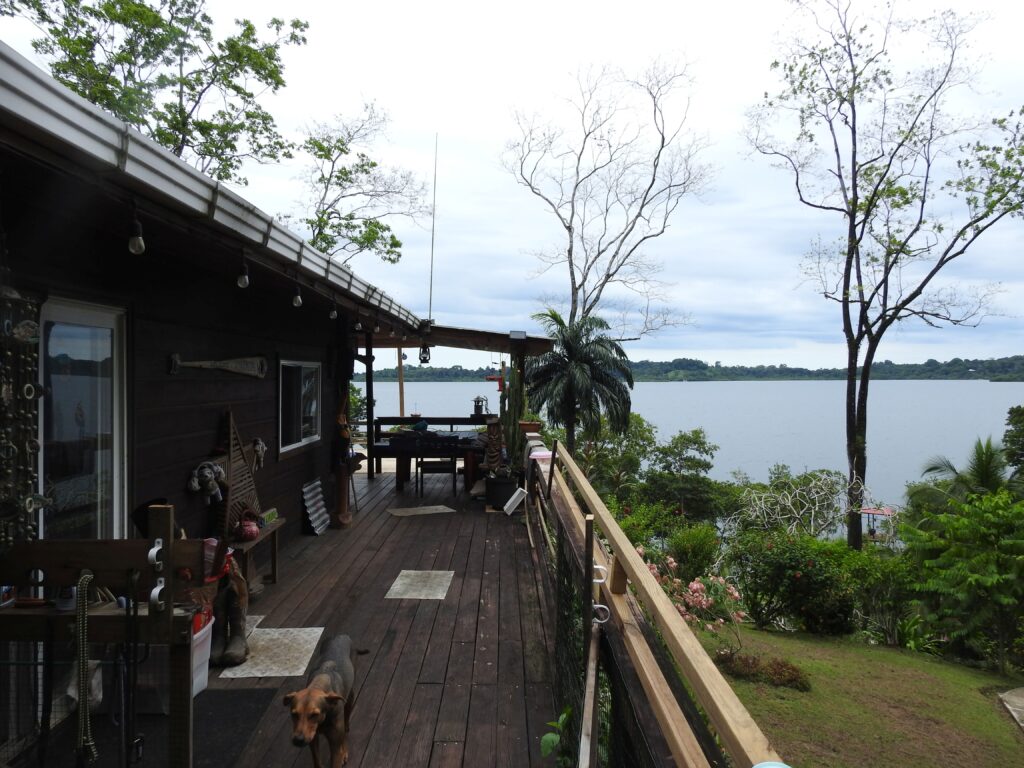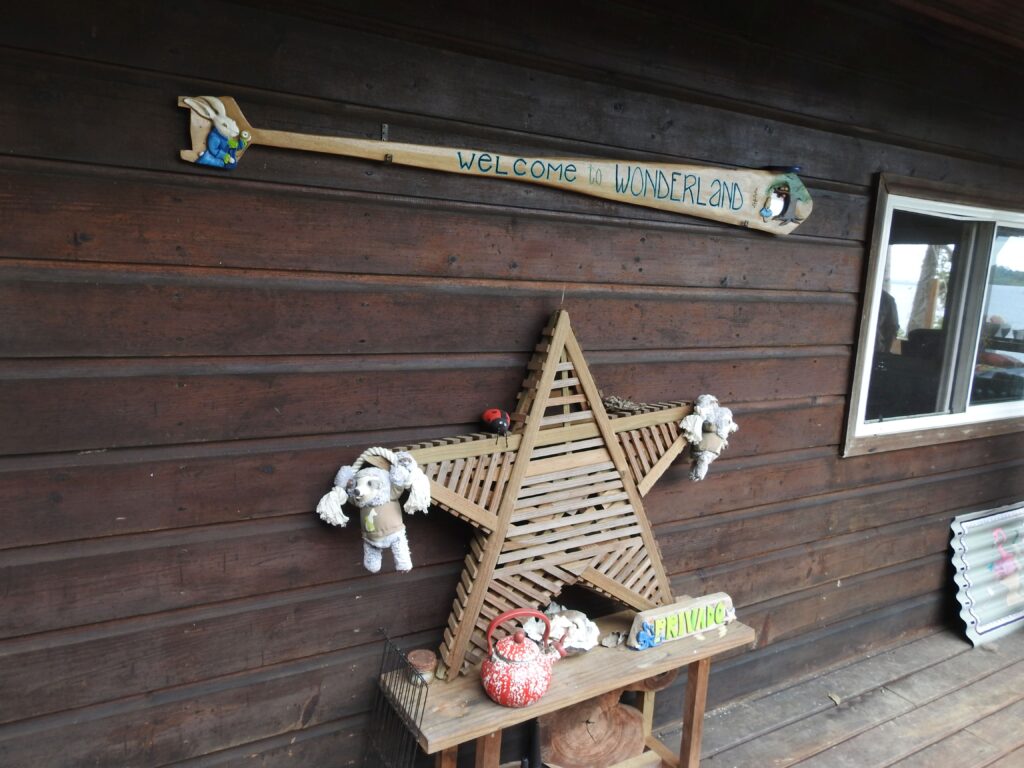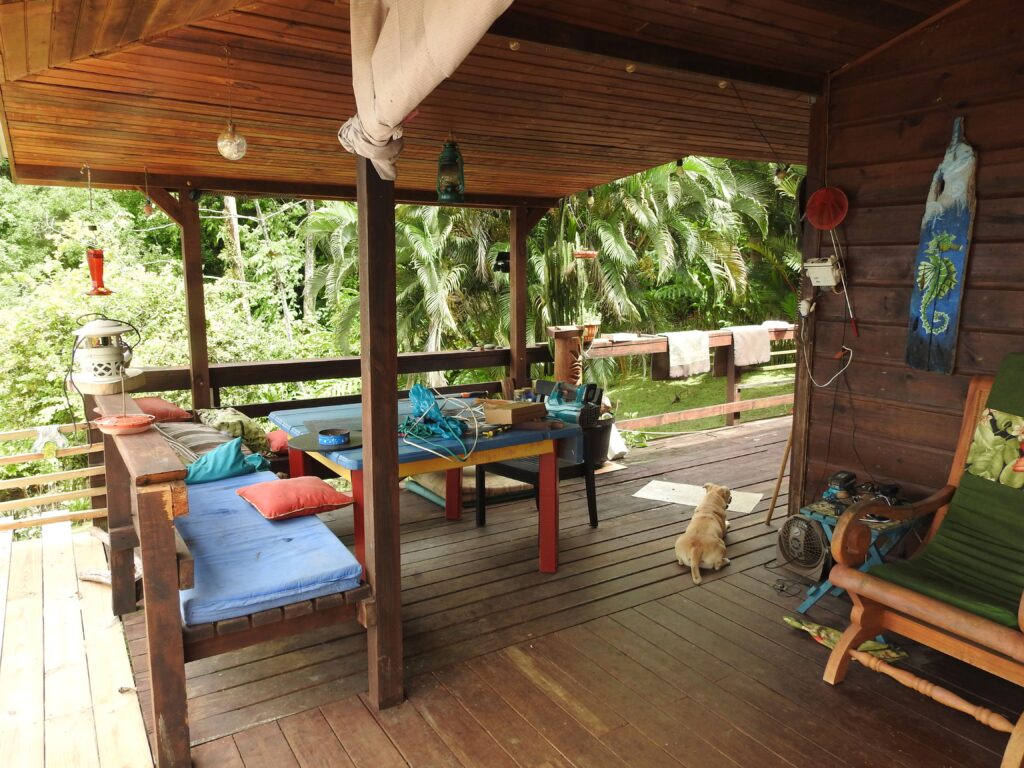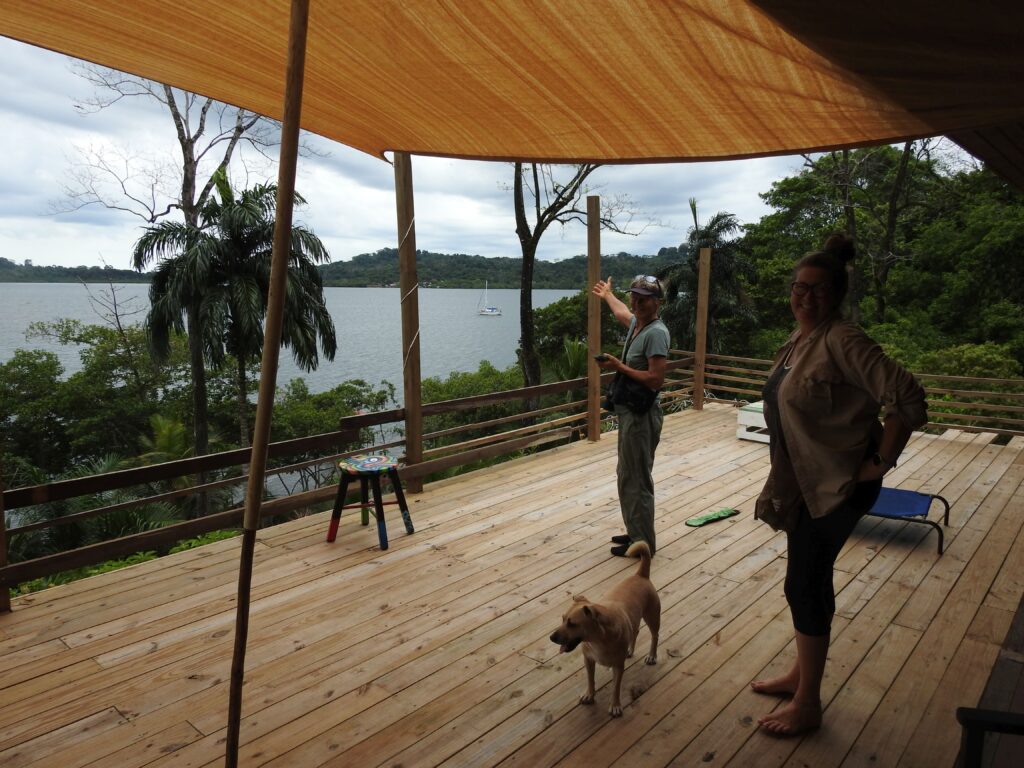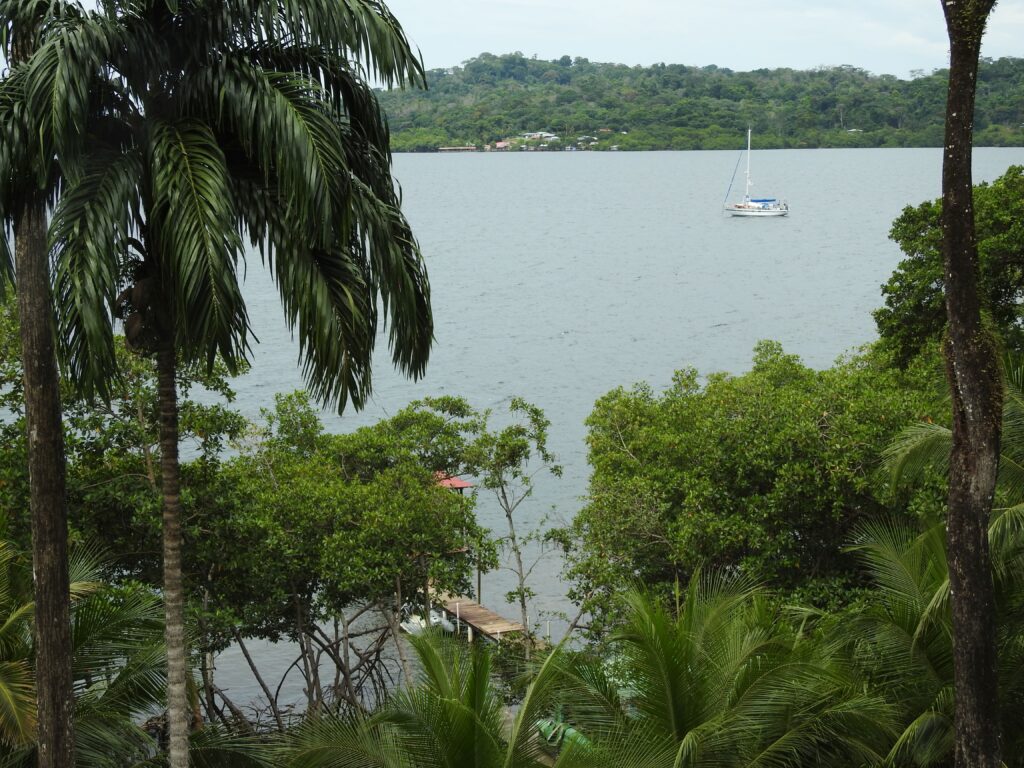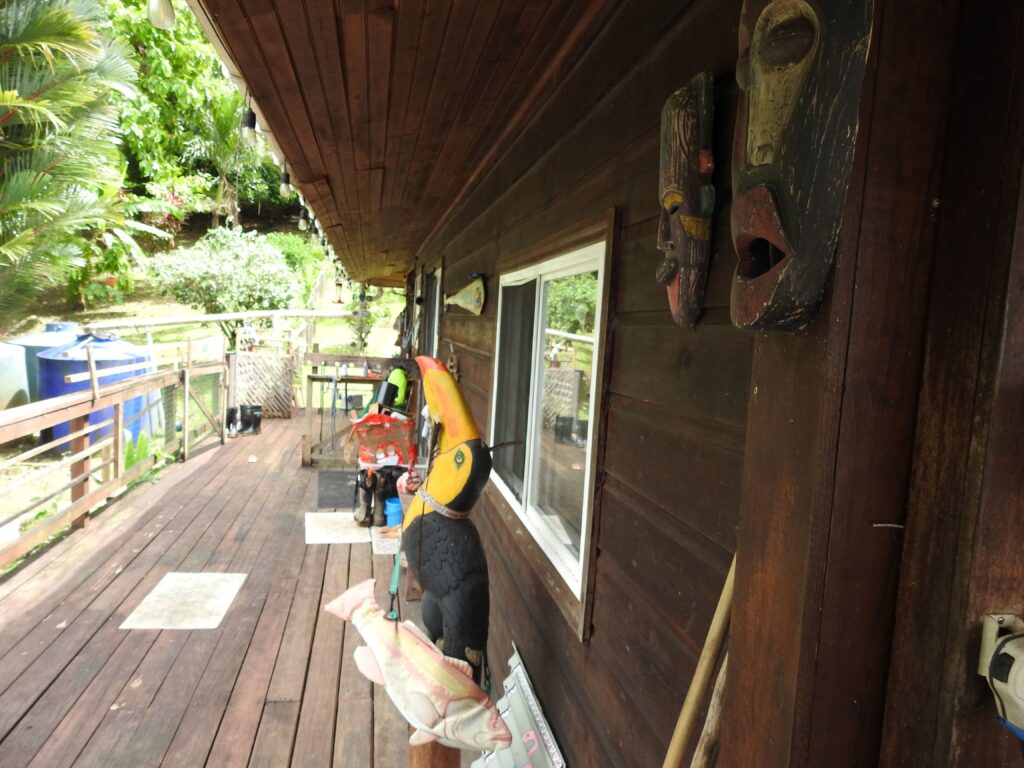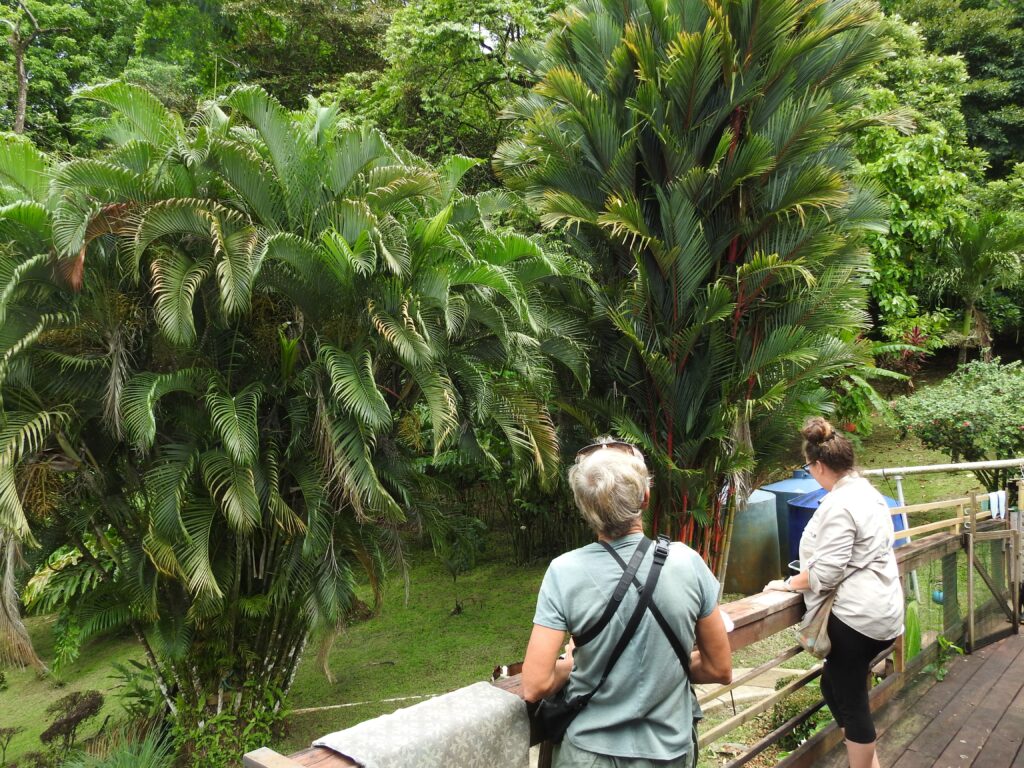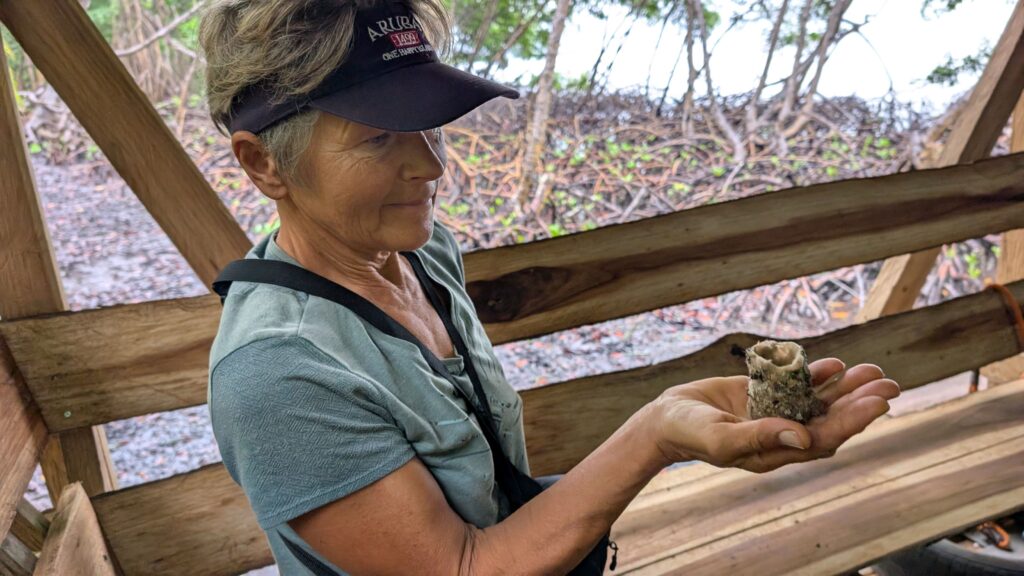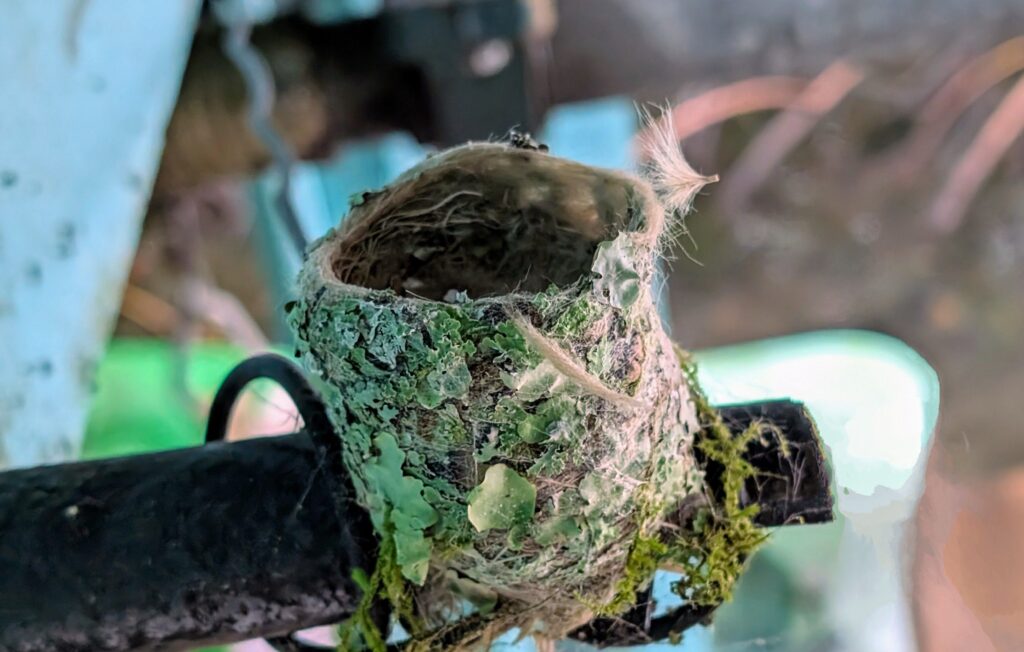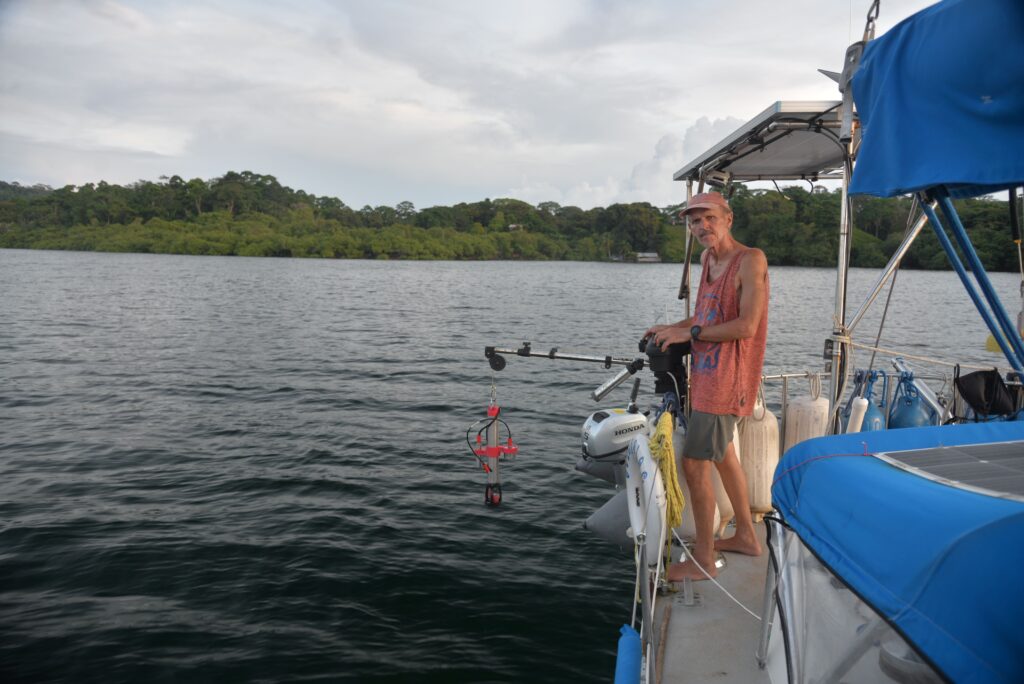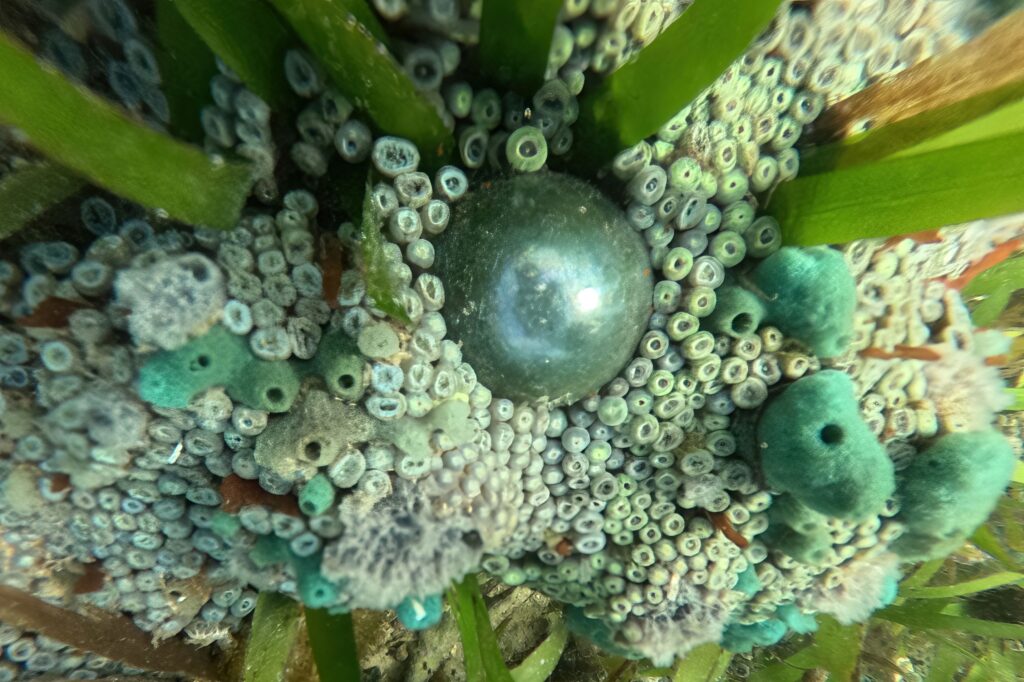
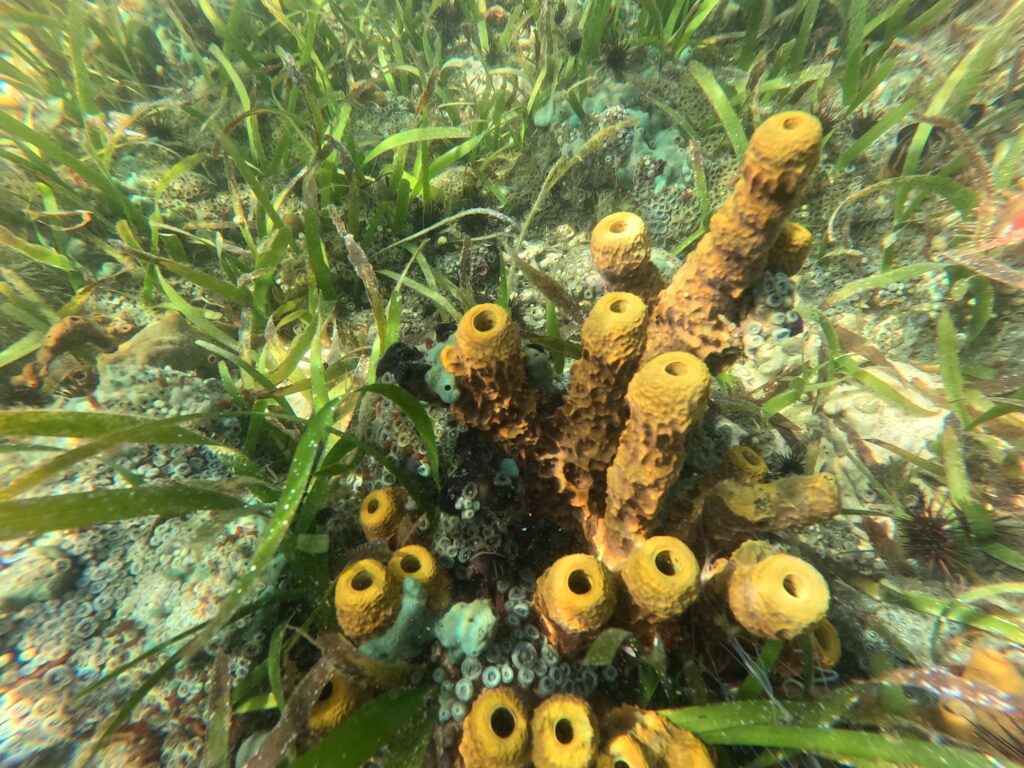
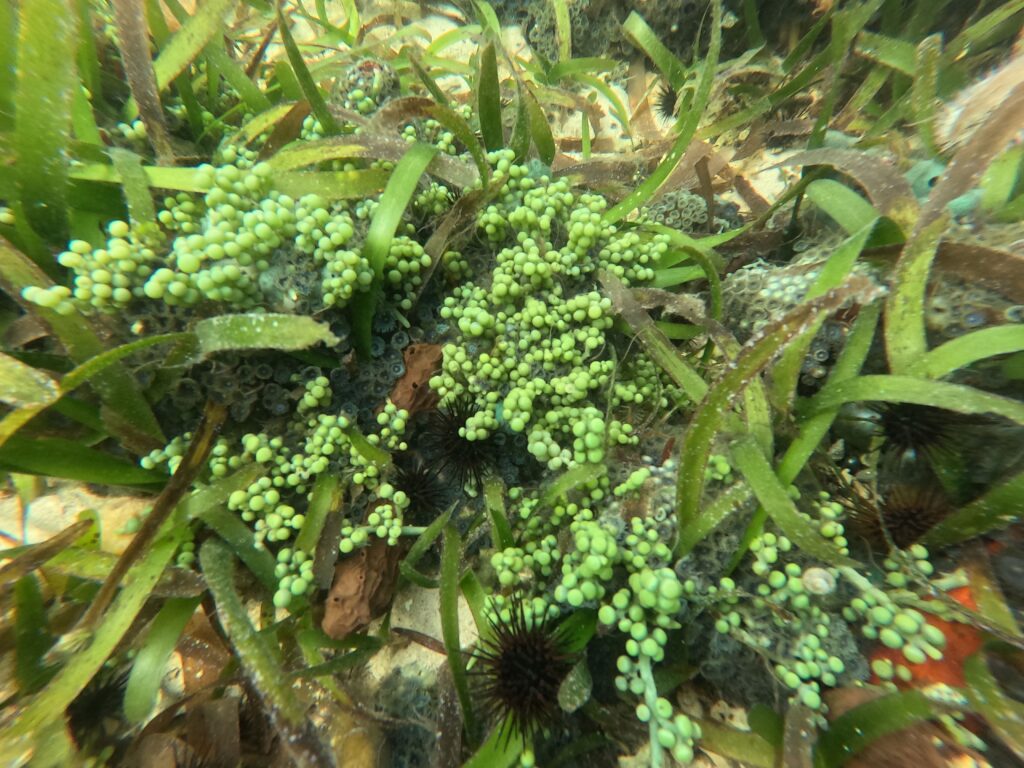
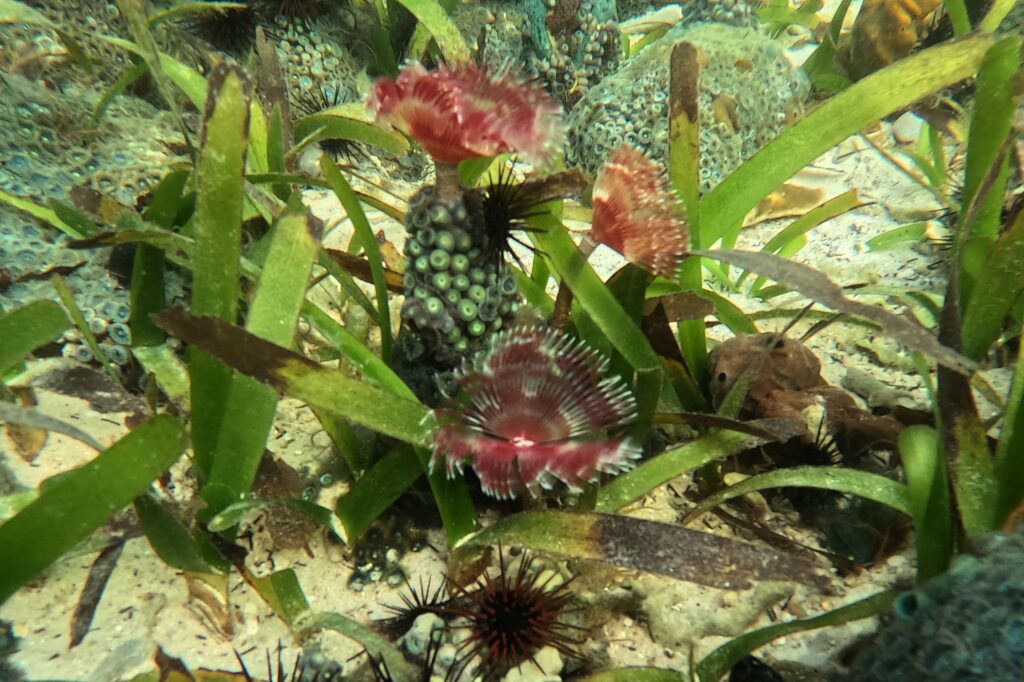
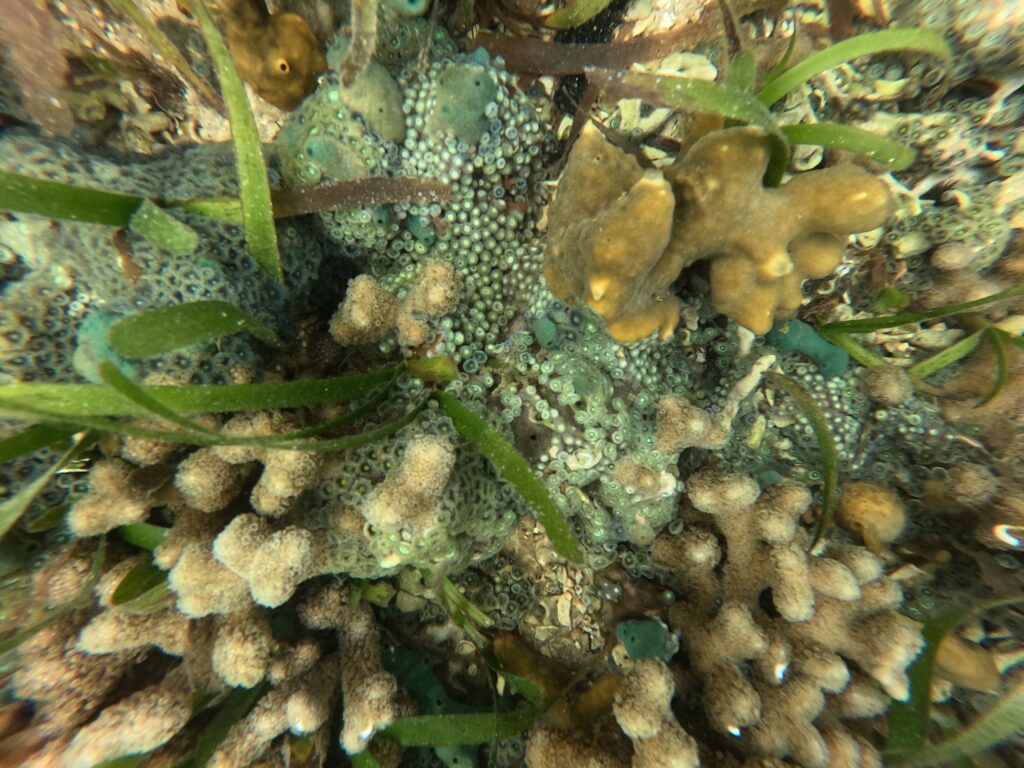
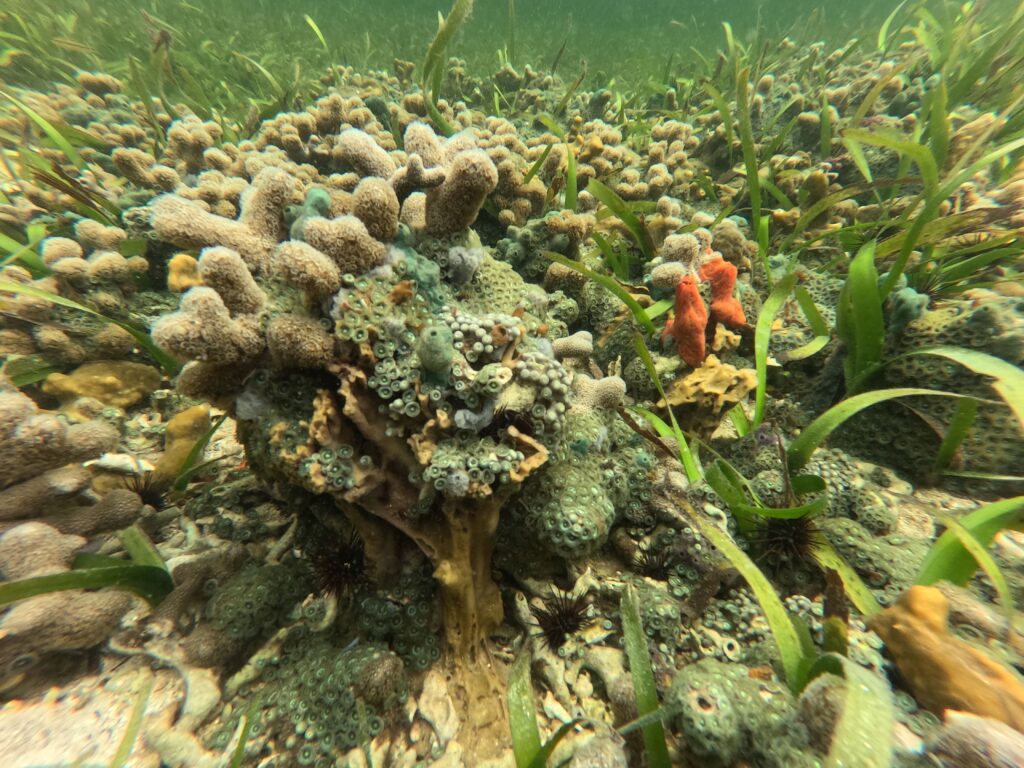
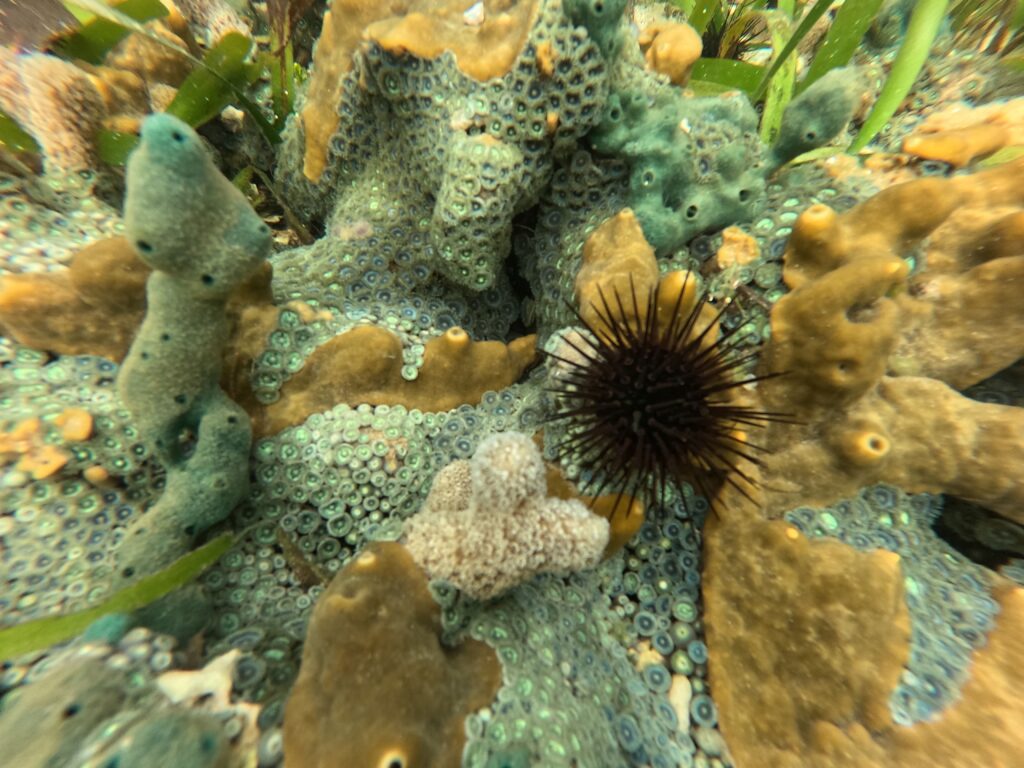
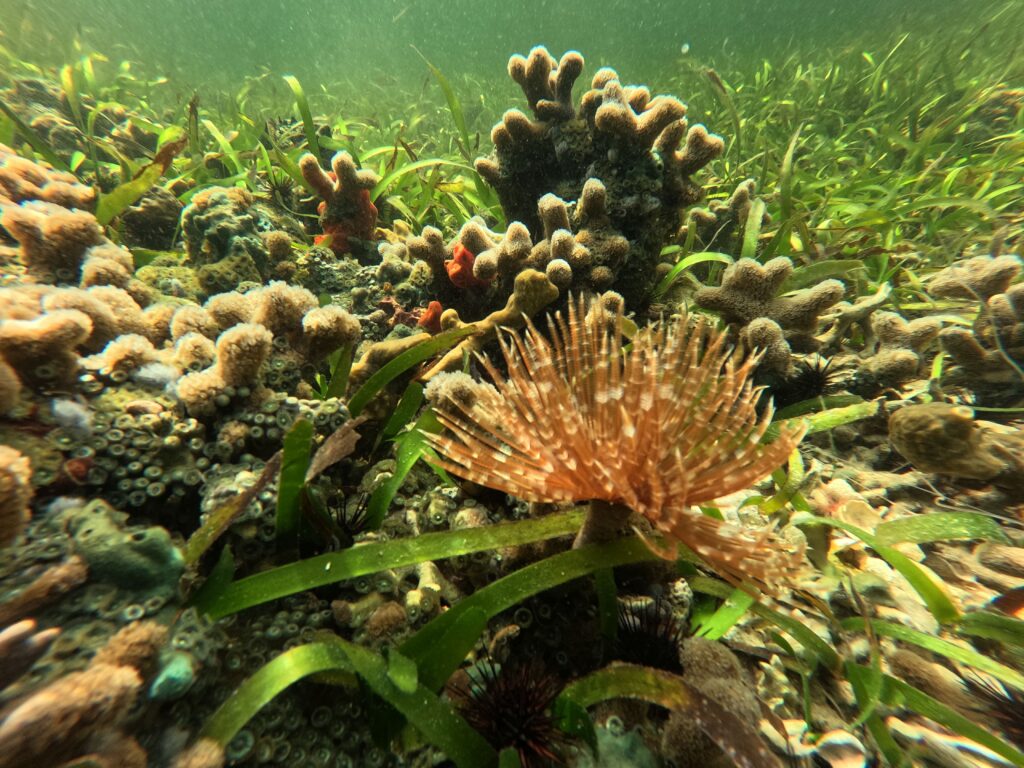
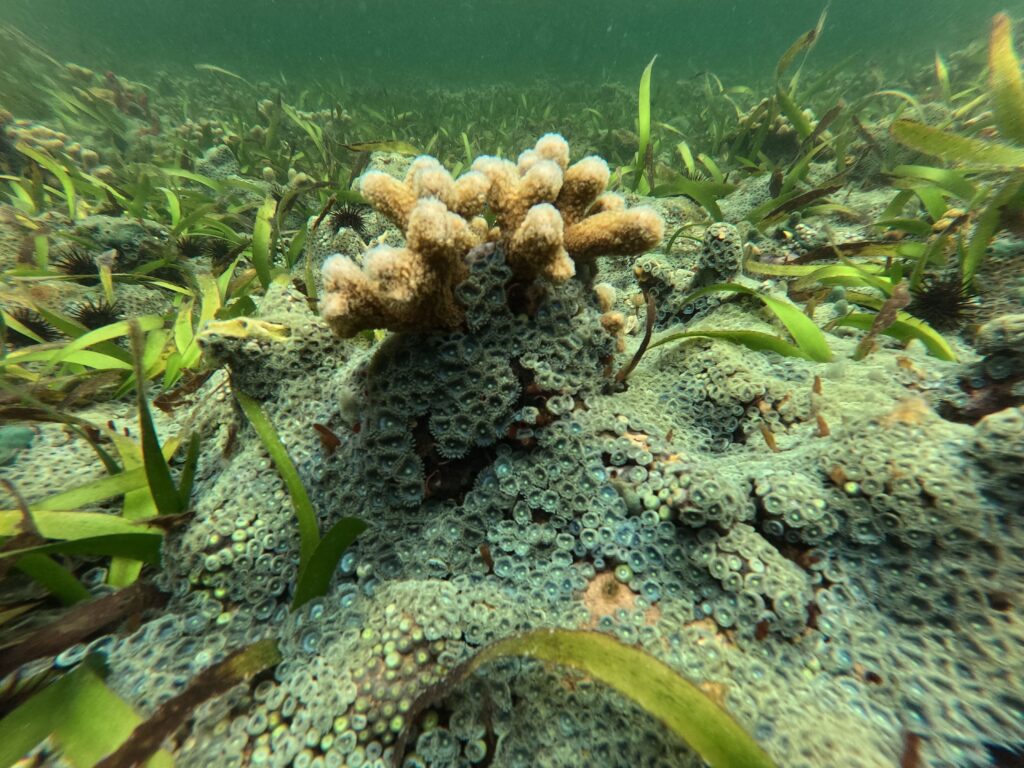
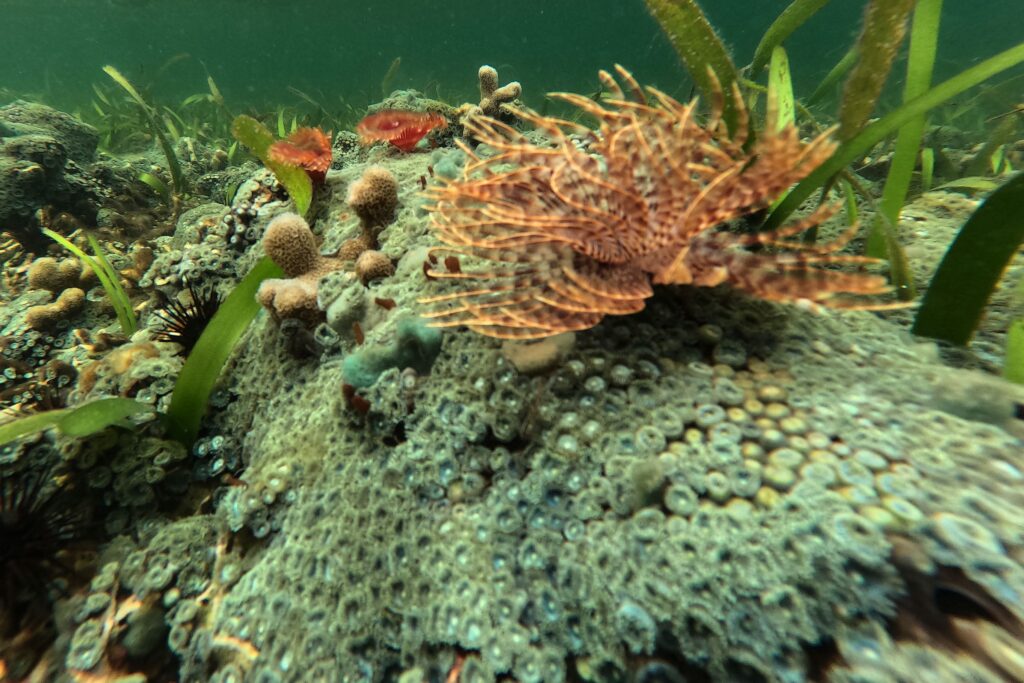
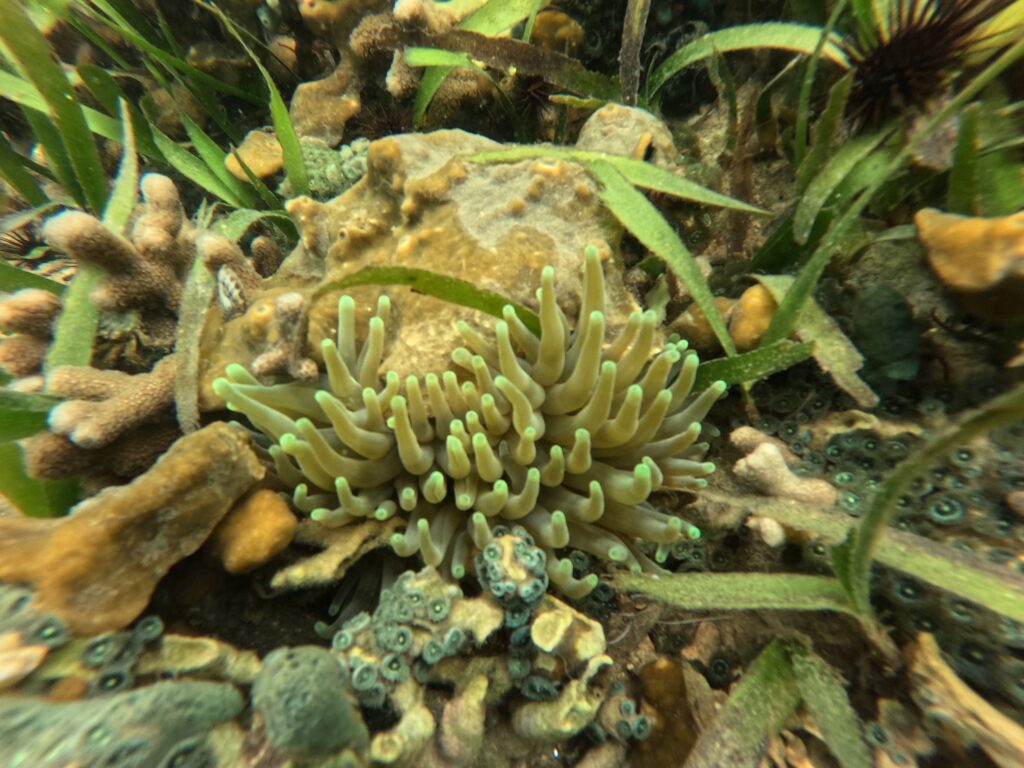
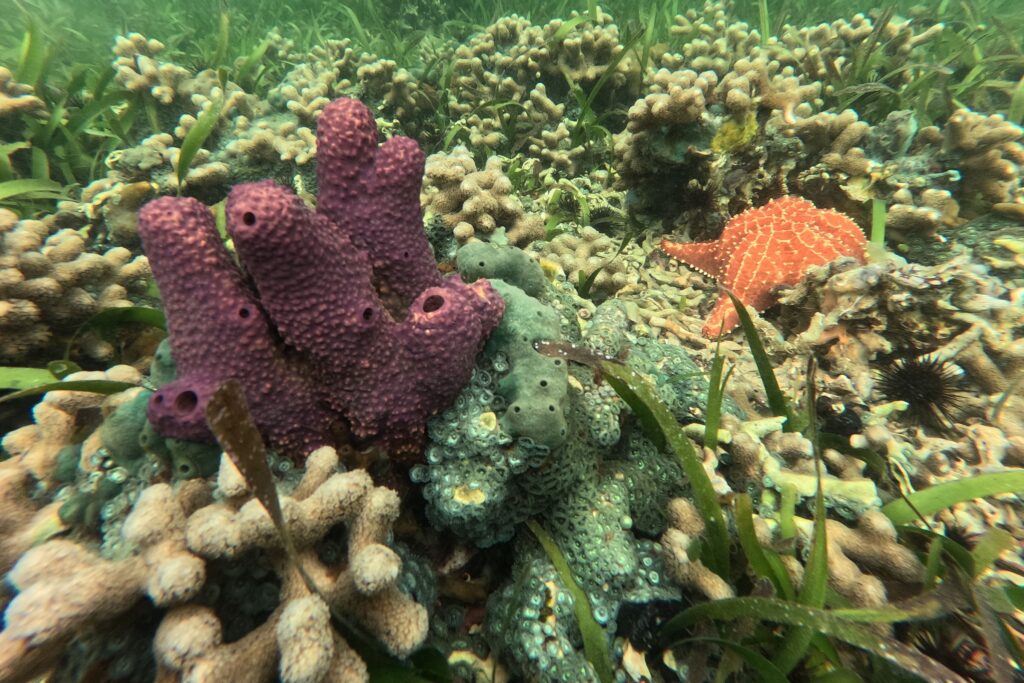
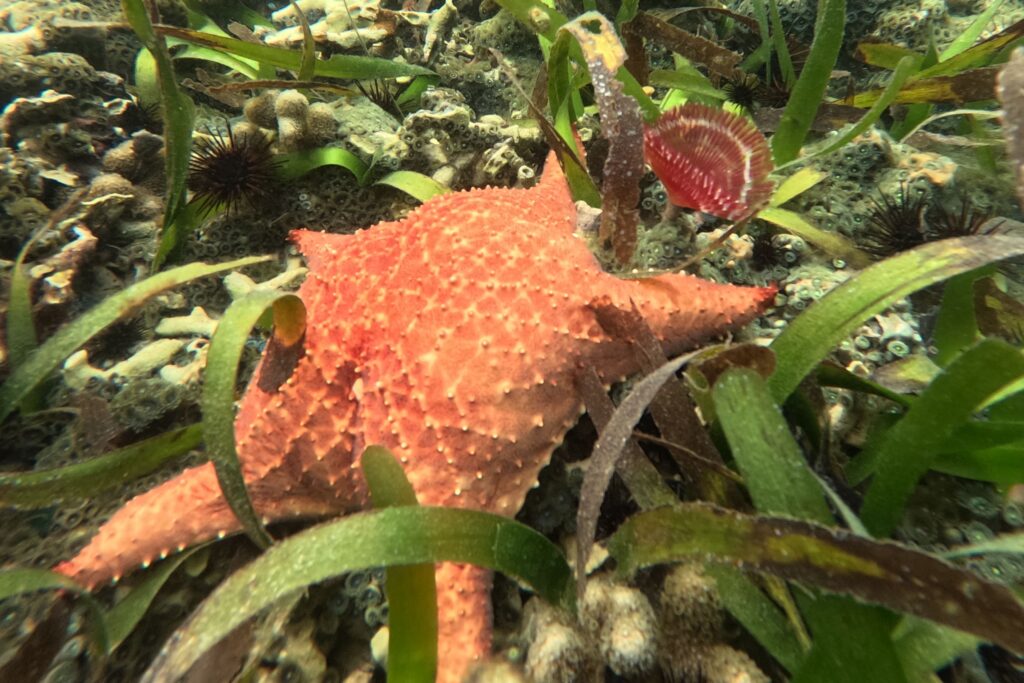
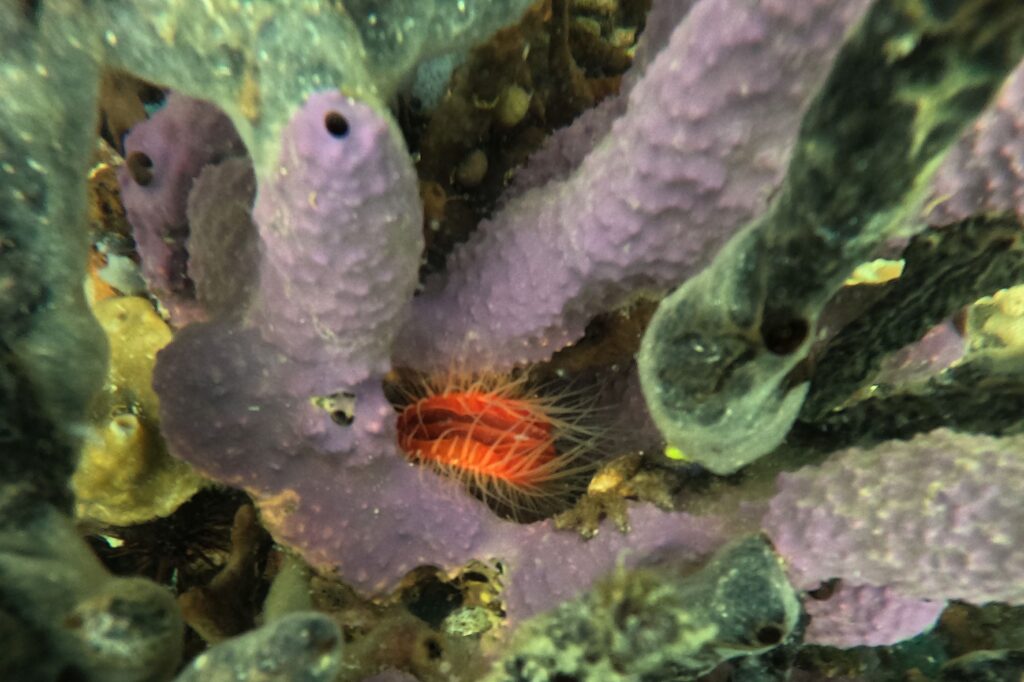
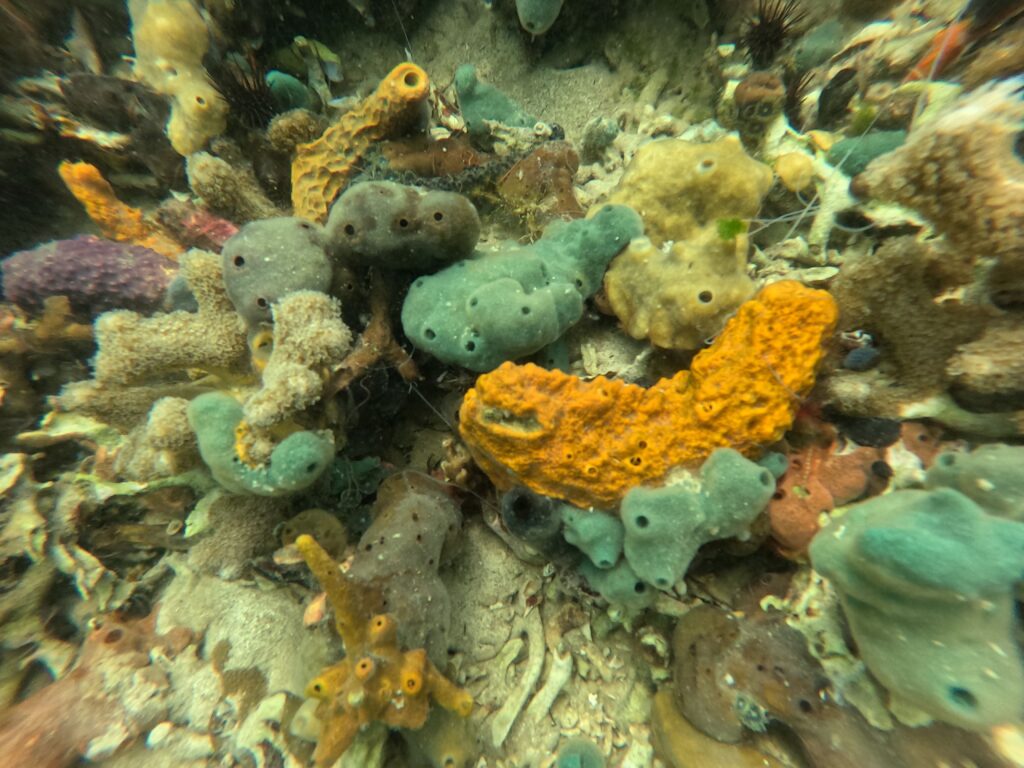
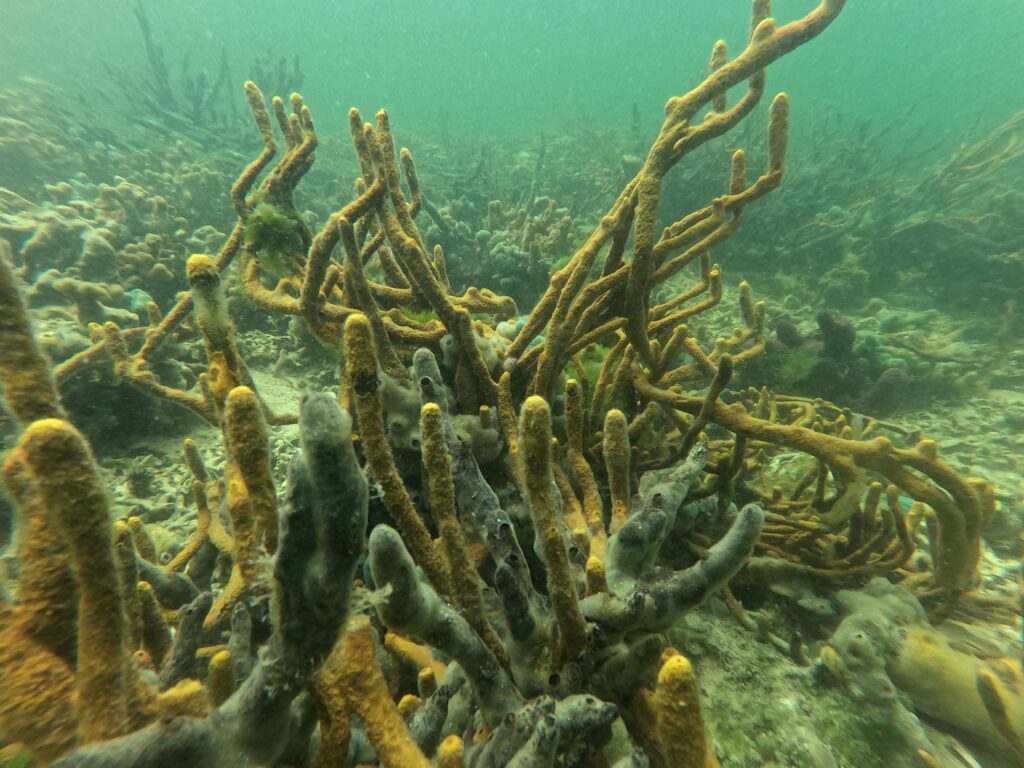
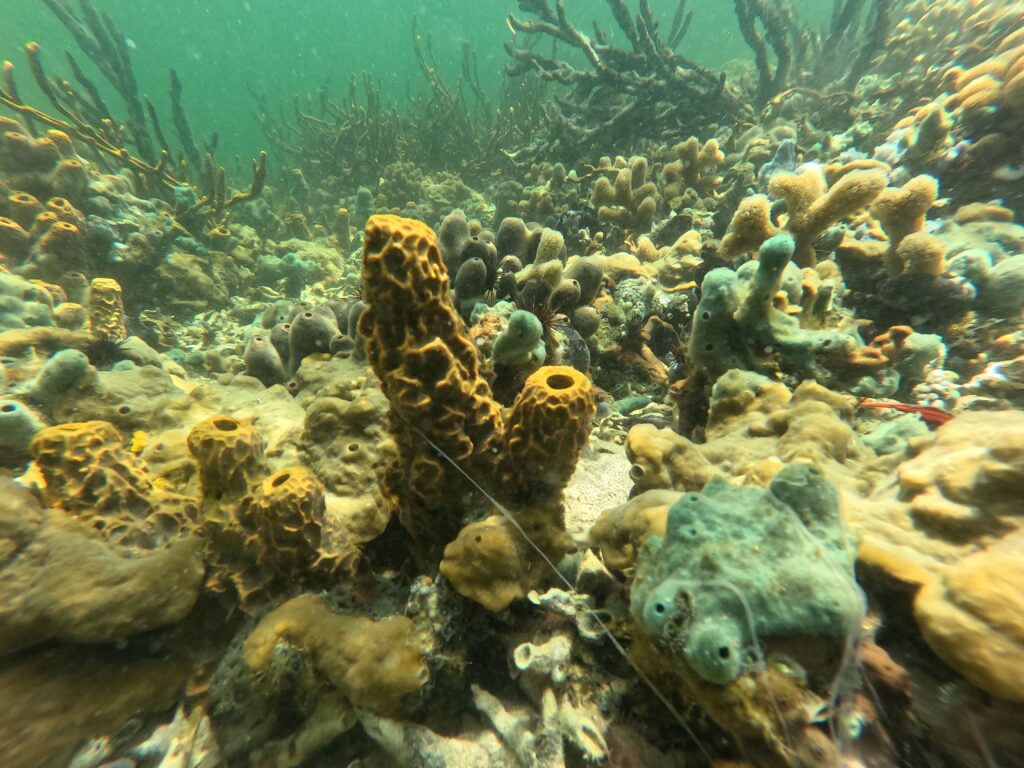
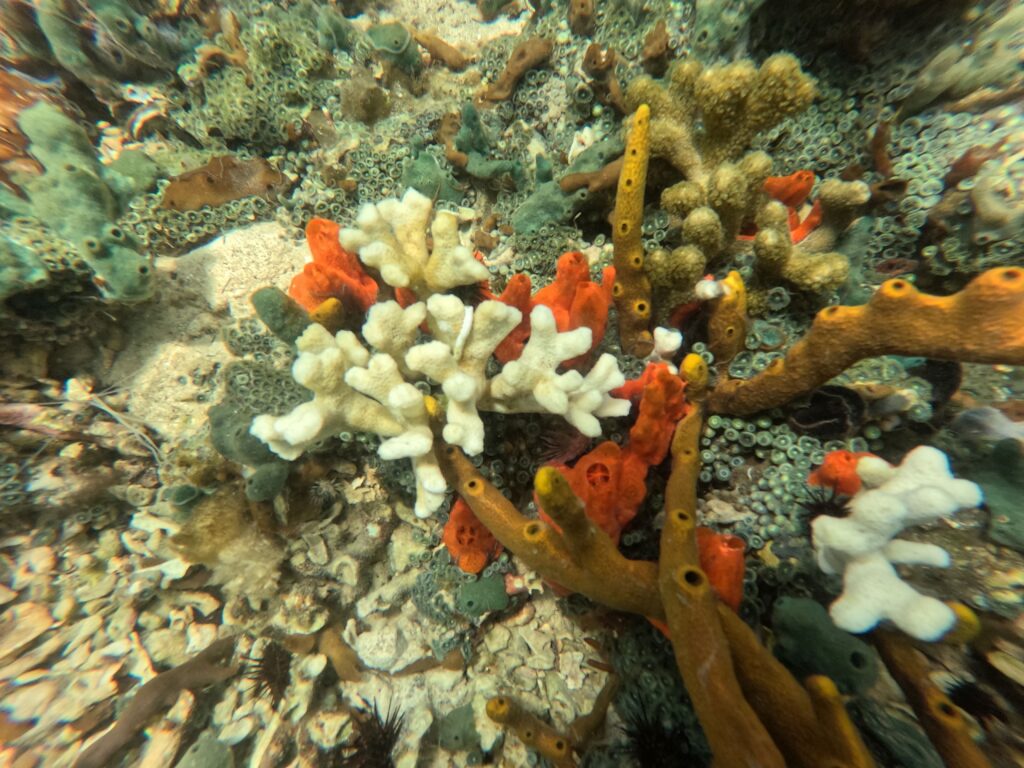
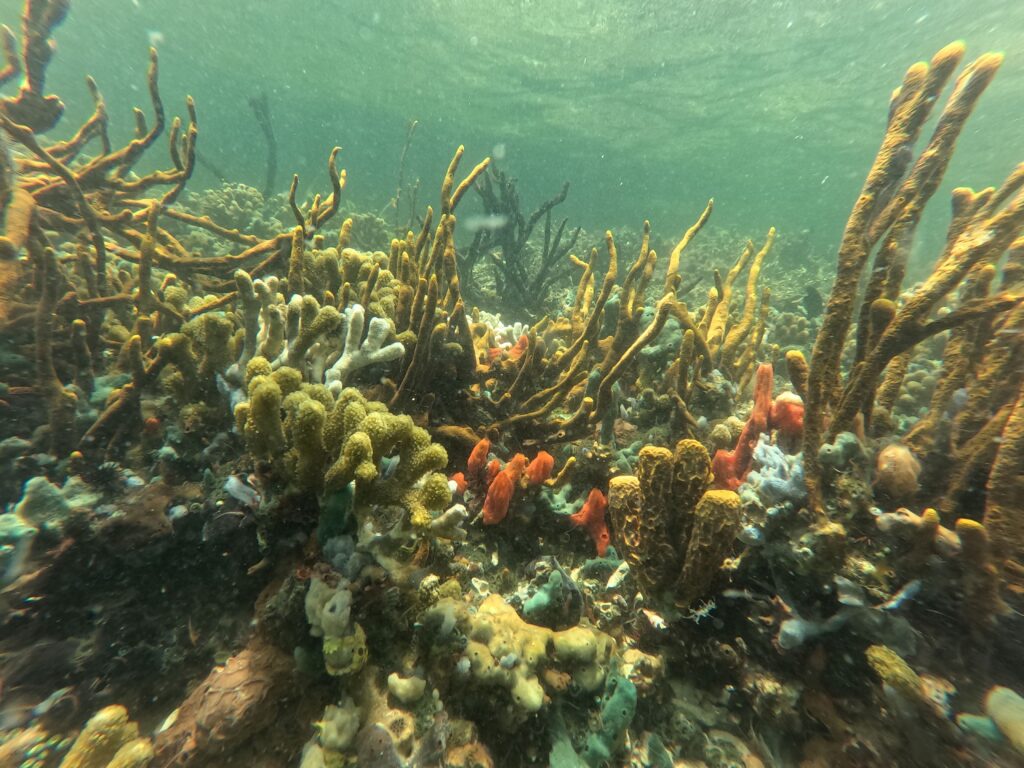
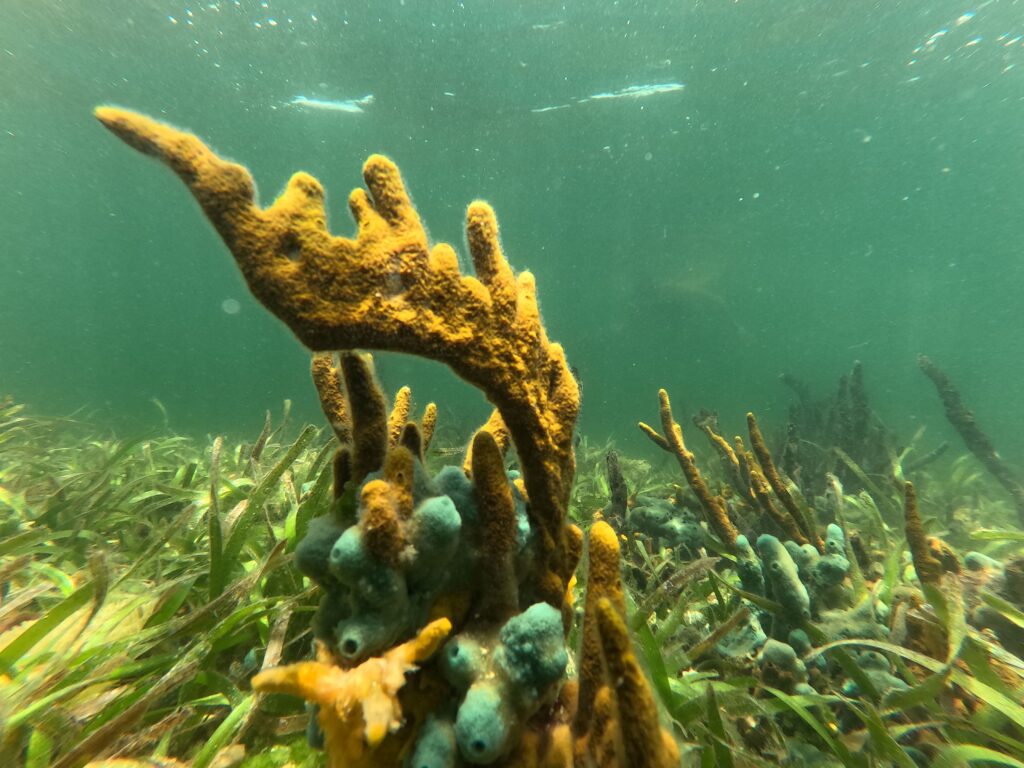
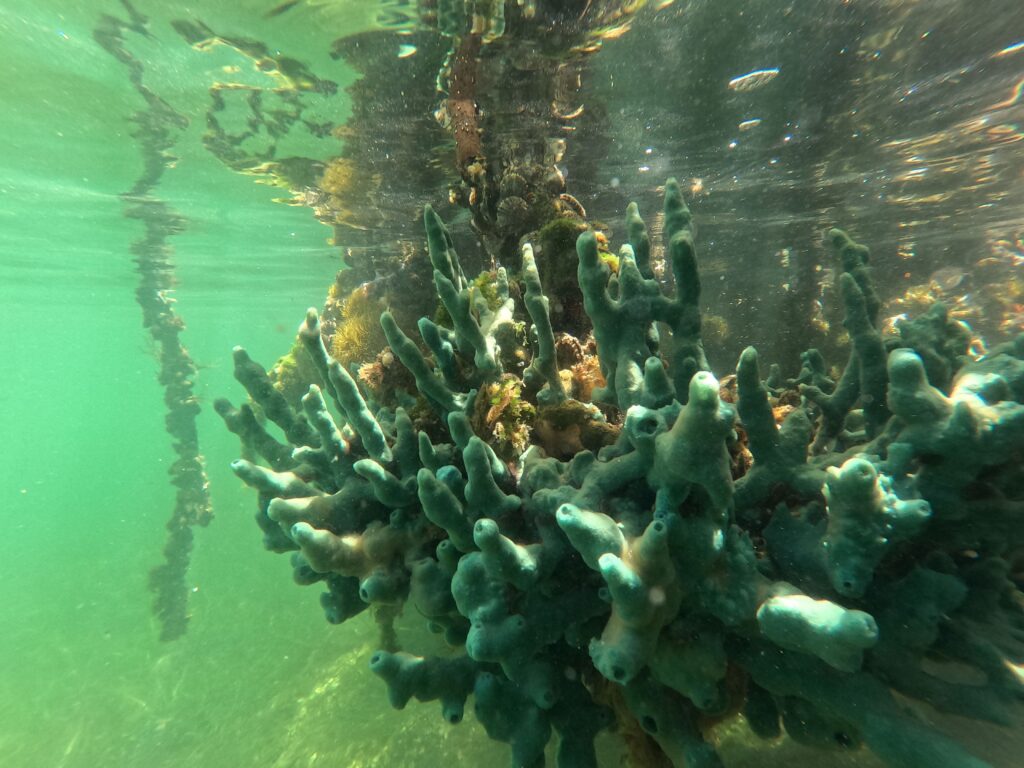
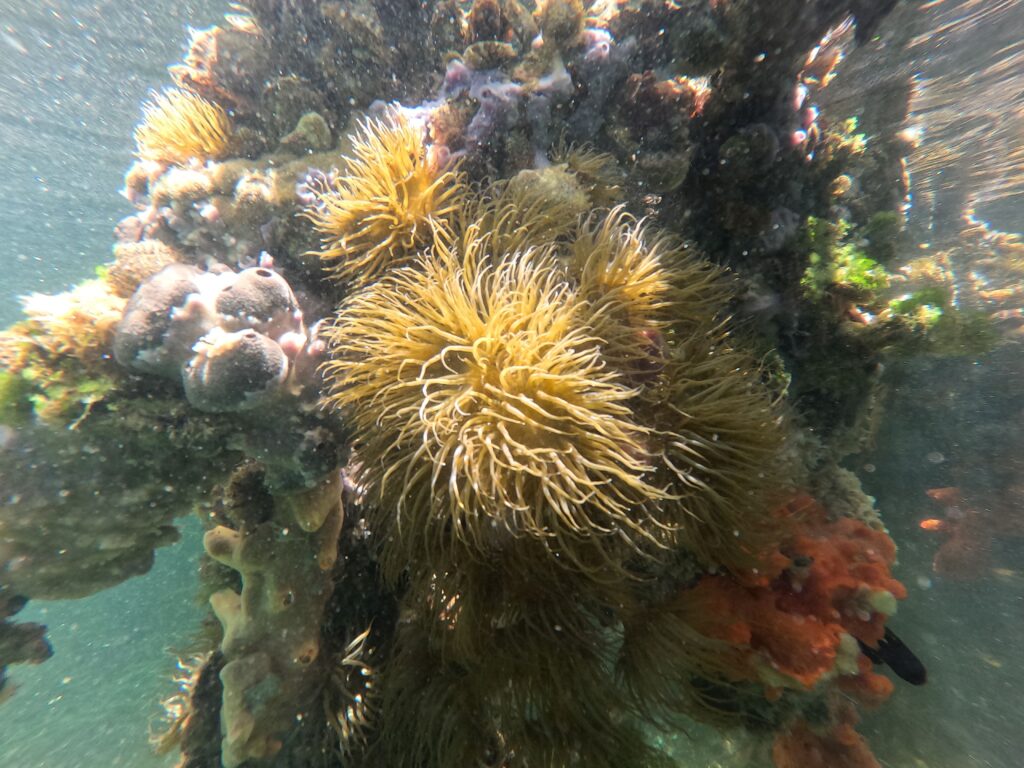
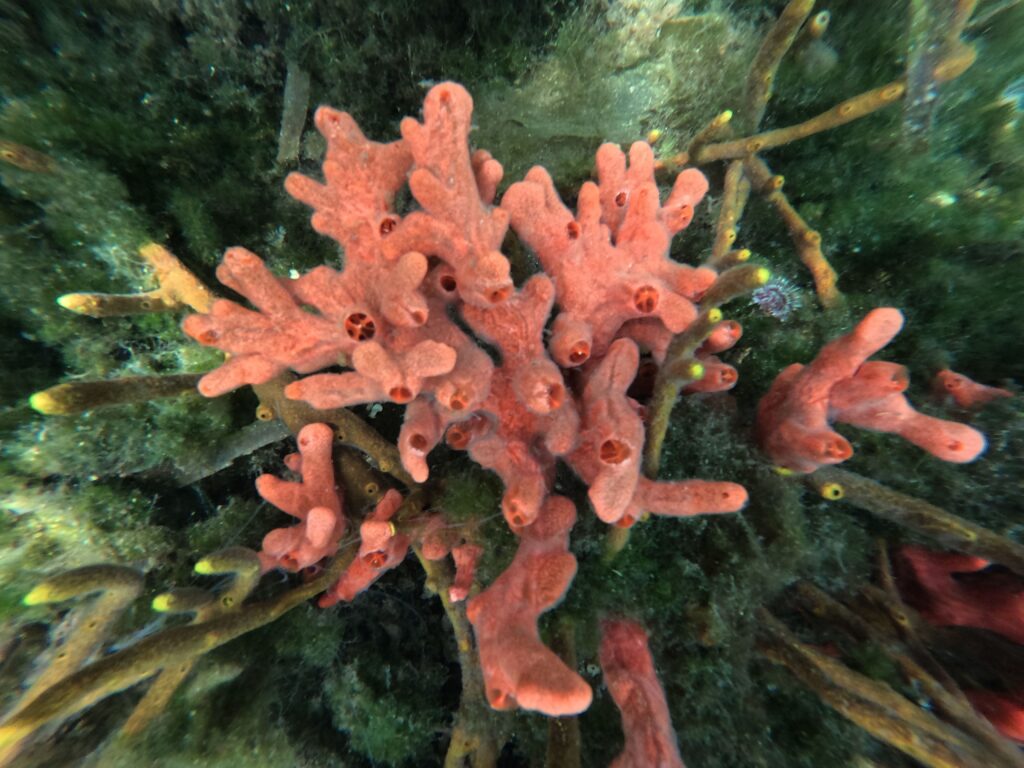
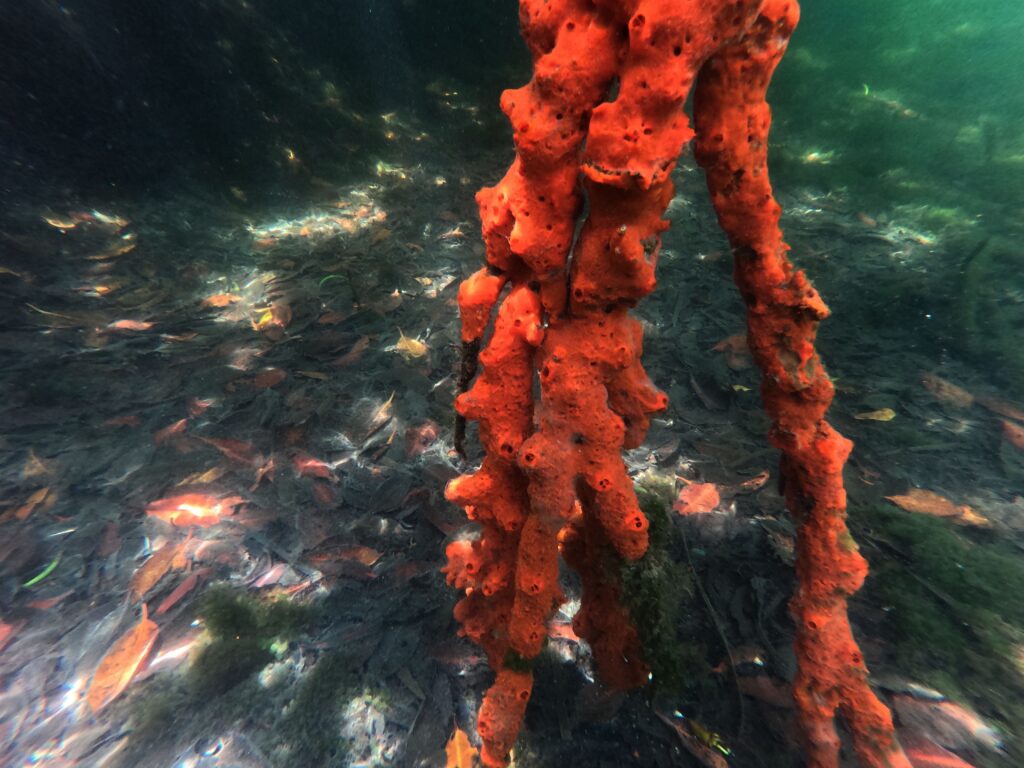
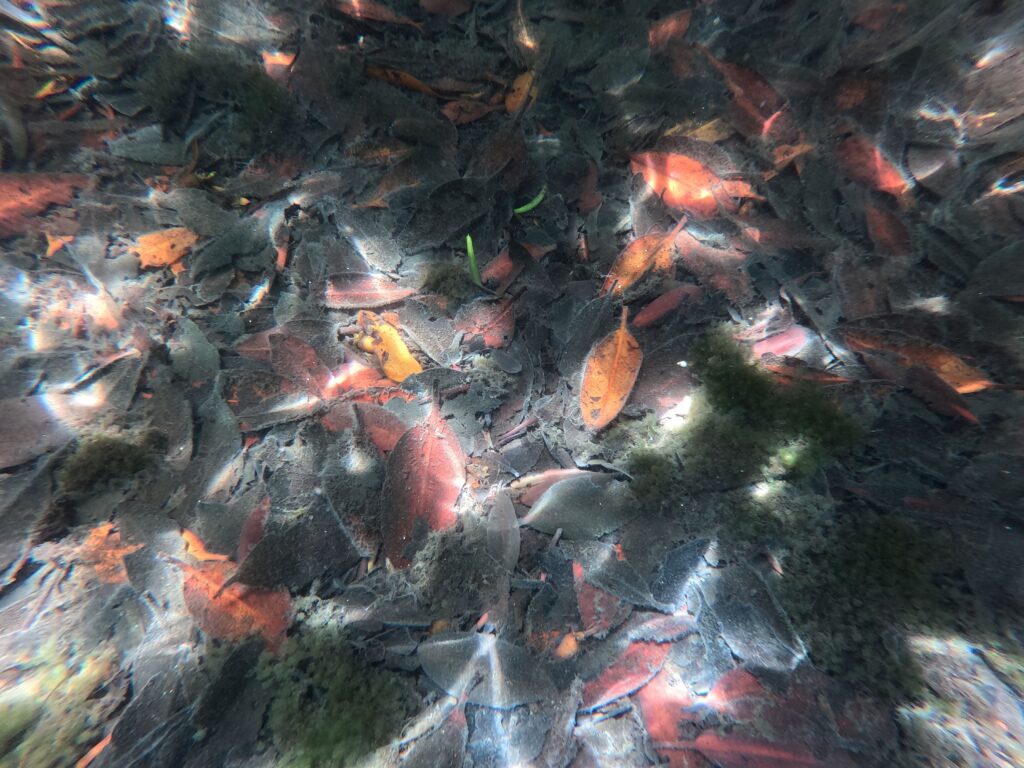
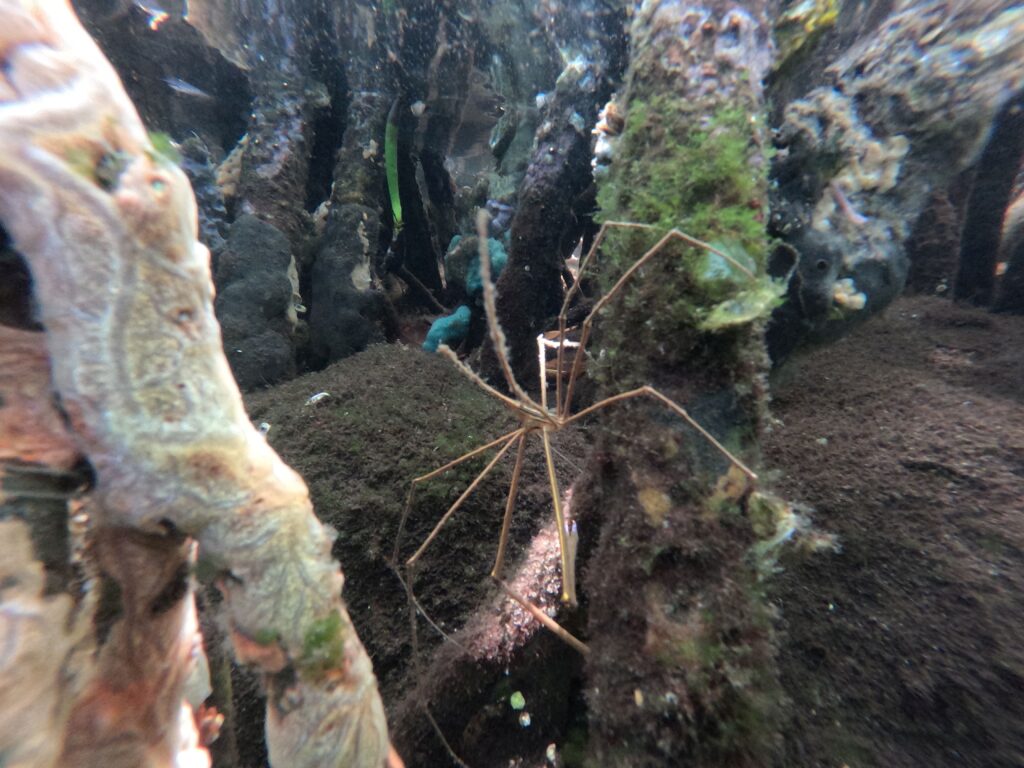
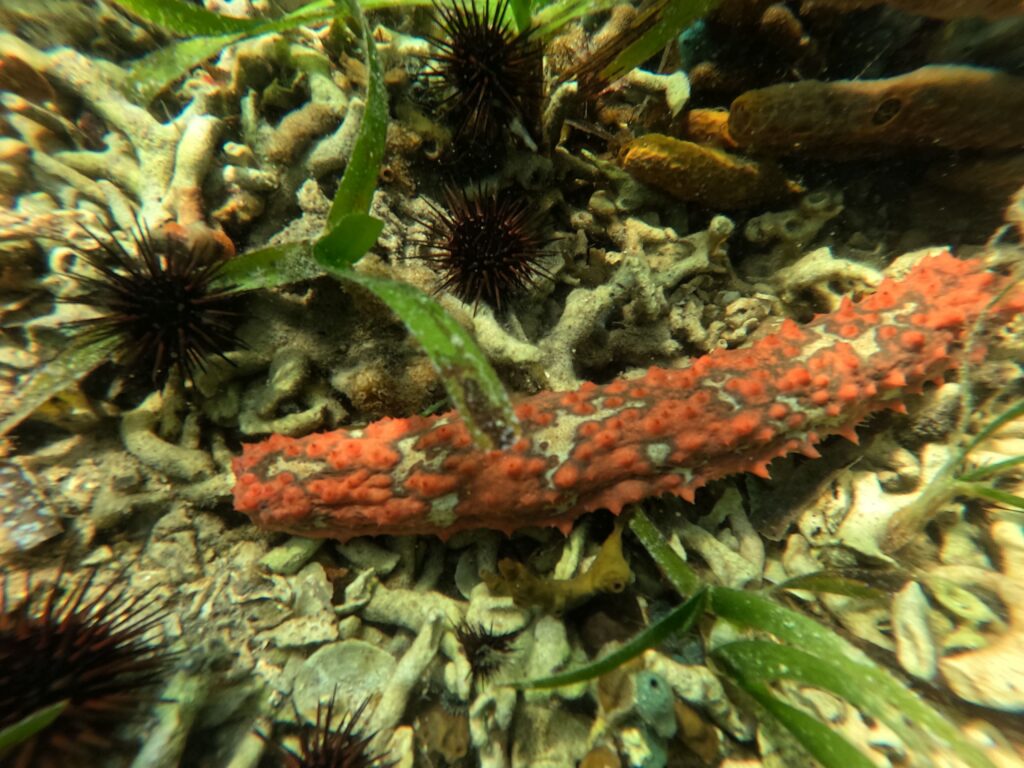
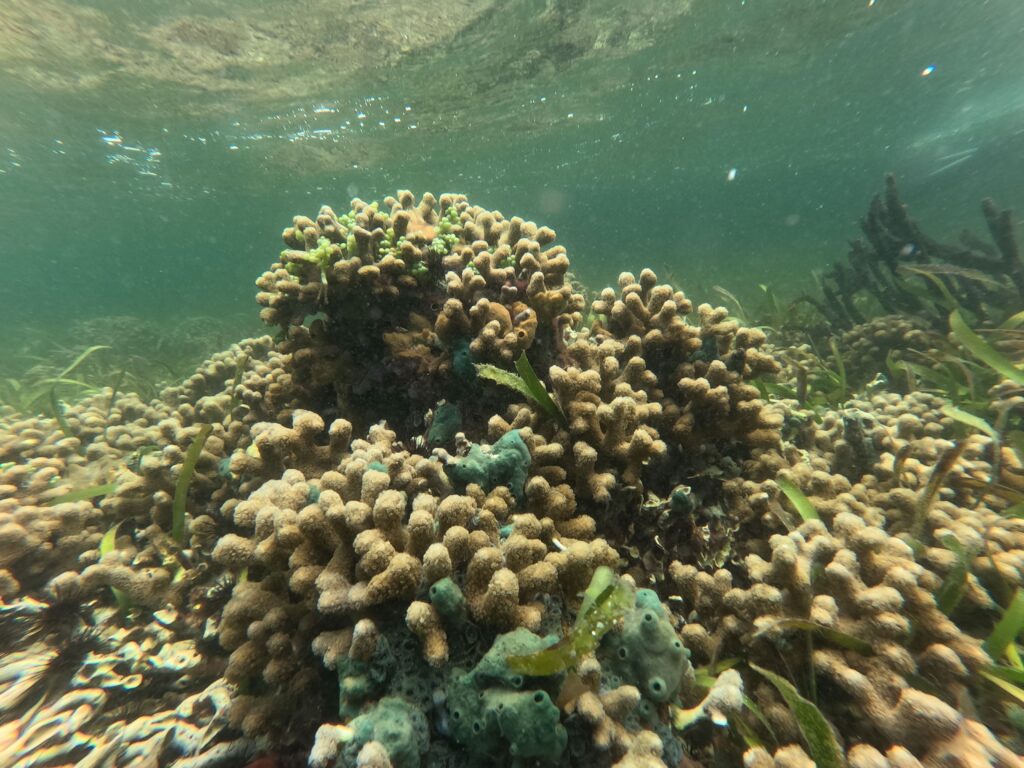
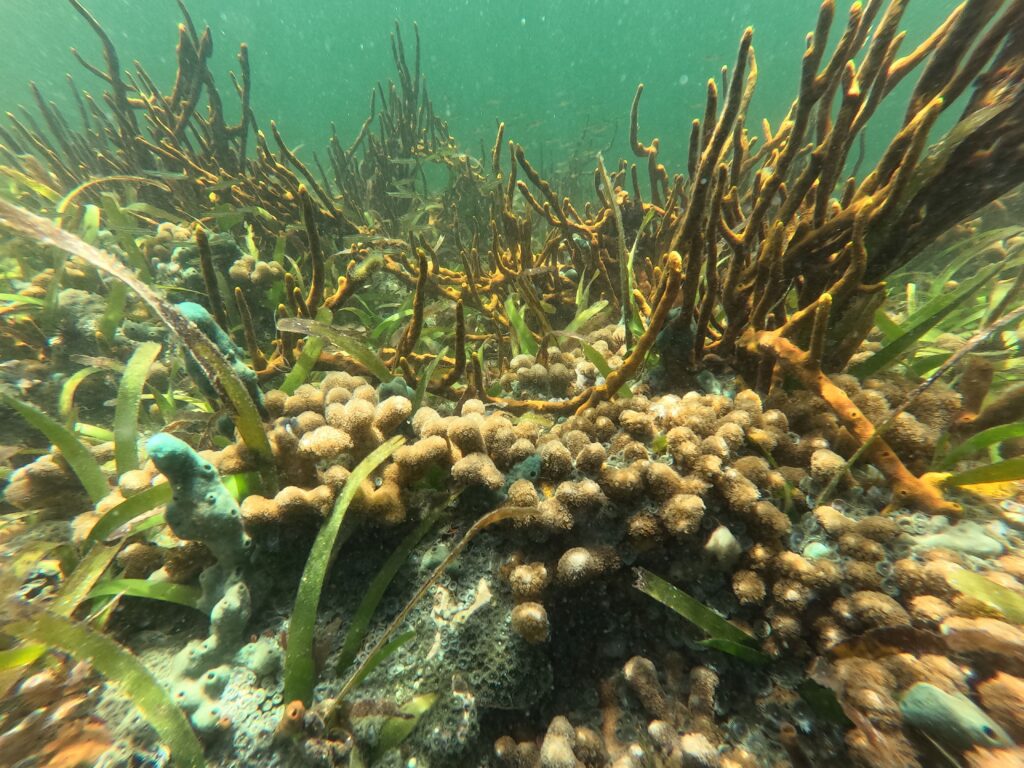
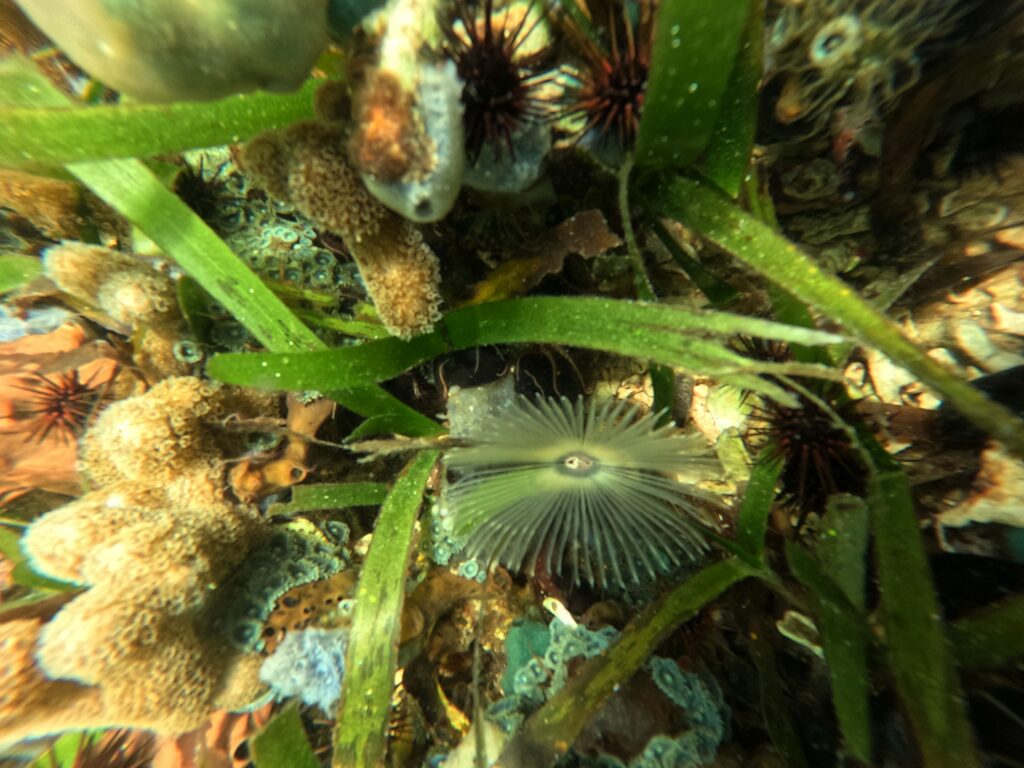
From the lush trails of Mia’s Wonderland, we followed her recommendation and sailed off to meet Ryan and Andrea, fellow cruisers who had dropped anchor—and roots—on a neighboring island. What we found completely took us by surprise.
Just two years ago, this adventurous couple left their lives in Washington State and sailed south, eventually settling in Dolphin Bay. There, they bought a small island—mostly mangroves—and embarked on a bold mission: to turn it into a mini-eco-resort with a bar and restaurant.
Now, for those unfamiliar with mangroves, let me set the scene: these are not your typical beachfront lots. A mangrove island is often just a soggy patch of land, dense with roots and mosquitoes, and occasionally underwater. I’ve tried to imagine “settling” on such terrain myself—and always concluded it was pure madness. But Ryan and Andrea? They saw opportunity where others would see mosquito bites.
We were warmly welcomed by Ryan, who was happy to show us around. Normally, he told us, their two kids (ages 9 and 11) give guests the grand tour, but Andrea and the children had just left for Costa Rica to renew their Panamanian visas. (No citizenship yet—red tape takes time.)
Despite the swampy beginnings, the transformation of the island was astonishing. Raised garden beds full of vegetables. A charming bar-restaurant with a sturdy pier. Pebble-covered walkways snaking through what was once impassable muck. One cabin for future guests already stands, waiting for finishing touches, and two more are in the plans. Meanwhile, Ryan and Andrea live aboard their 50-foot catamaran Low Expectations, moored just off their island paradise.
The bay itself has become a small archipelago of like-minded escapees from all corners of the world. A handful of other families live around the shores, forming a tight-knit off-grid community. They host weekly barbecues, drop by unannounced, or lend a hand when someone forgets, say, a crucial bag of chicken legs on the dock.
Which actually happened the day we arrived.
Ryan had made a supply run to town and returned sans poultry. He quickly fired off a desperate message to their local WhatsApp group: “Anyone in town—please save my chicken legs!” Miraculously, a couple arrived shortly after, legs in hand. Then two more couples appeared “just for a minute.” By nightfall, the chicken was gone, the wine was flowing, and the laughter echoed across the bay.
We came bearing gifts: a bottle of Ukrainian cognac and a Ukrainian flag, which Ryan proudly added to the growing collection of visiting yacht flags now hanging from the ceiling beams of the bar—just as sailors’ bars should be.
When we asked about snorkeling spots, Ryan waved vaguely toward the mangroves off his island’s cape. “There’s a shallow reef there,” he said. “Only half a meter deep. Nothing fancy.”
We were skeptical. Mangroves aren’t usually known for vibrant reefs. But curiosity won out—and we were glad it did.
What we found was breathtaking: a burst of underwater color, sponges in brilliant reds and yellows clinging to mangrove roots, darting fish weaving between them, and coral formations glowing beneath the waves. The visibility wasn’t perfect, but the experience felt like discovering a secret world—an underwater Wonderland.
It was the perfect ending to our Bocas del Toro adventure: unexpected, offbeat, and filled with inspiring people turning improbable dreams into reality.
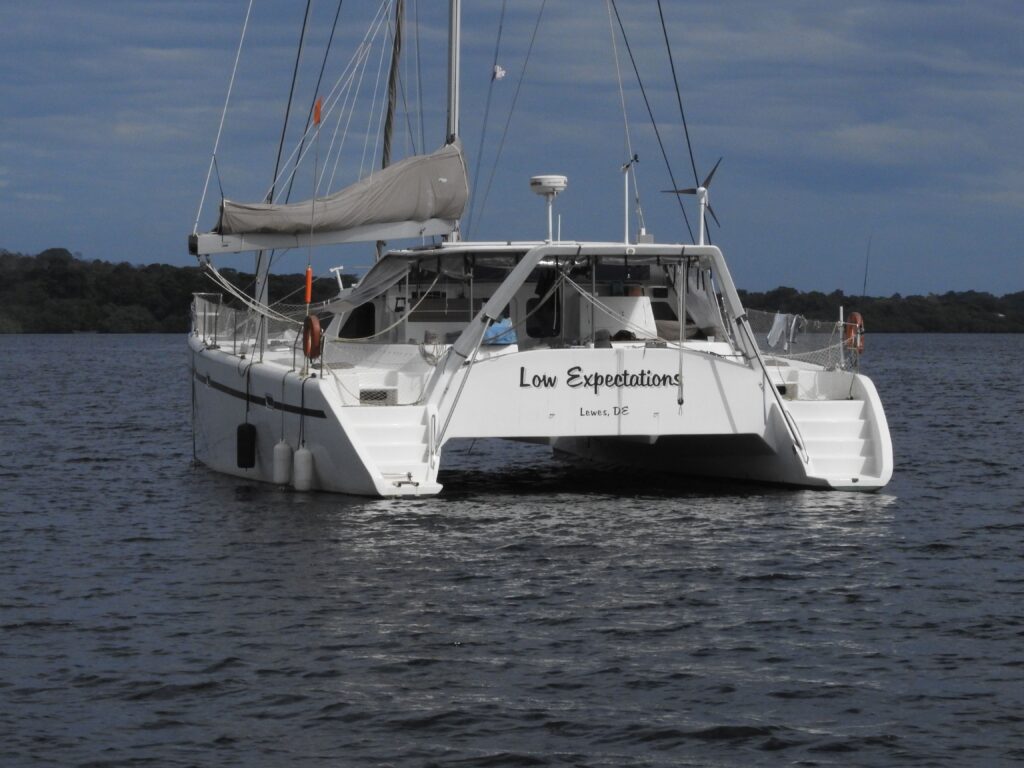
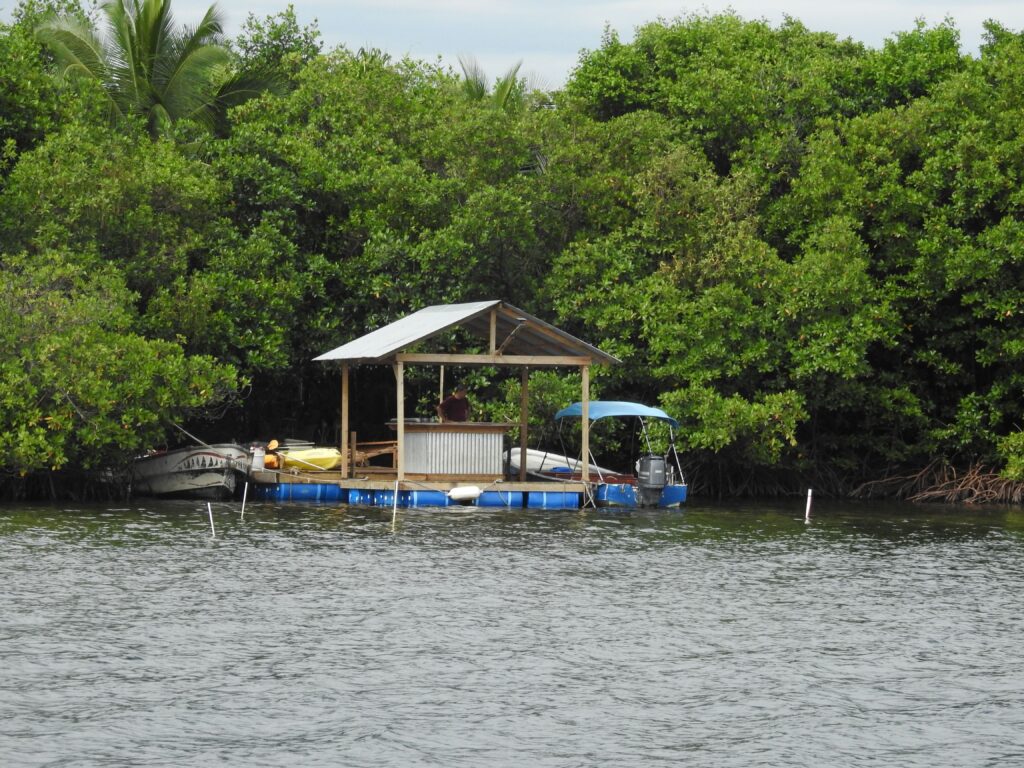
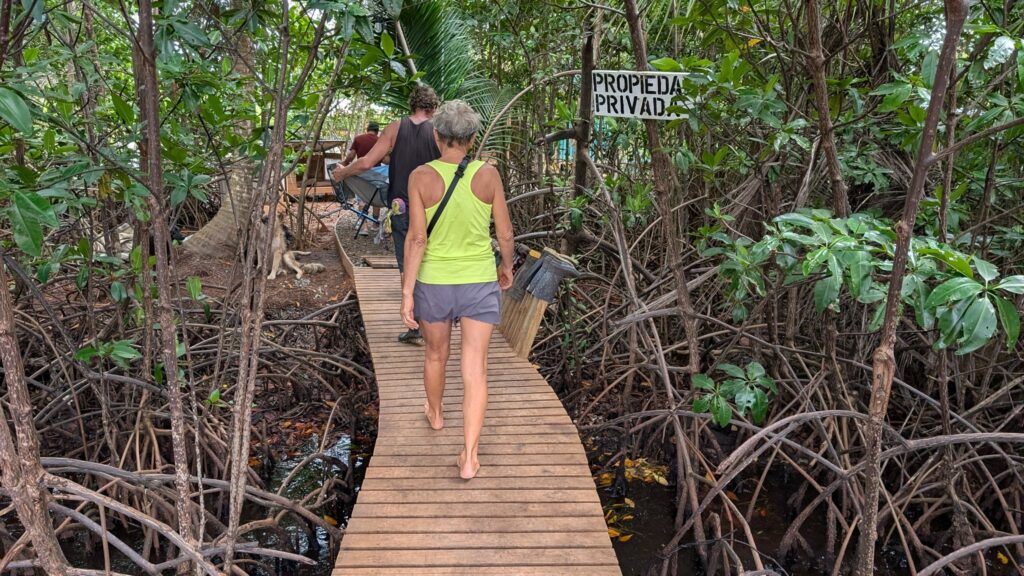

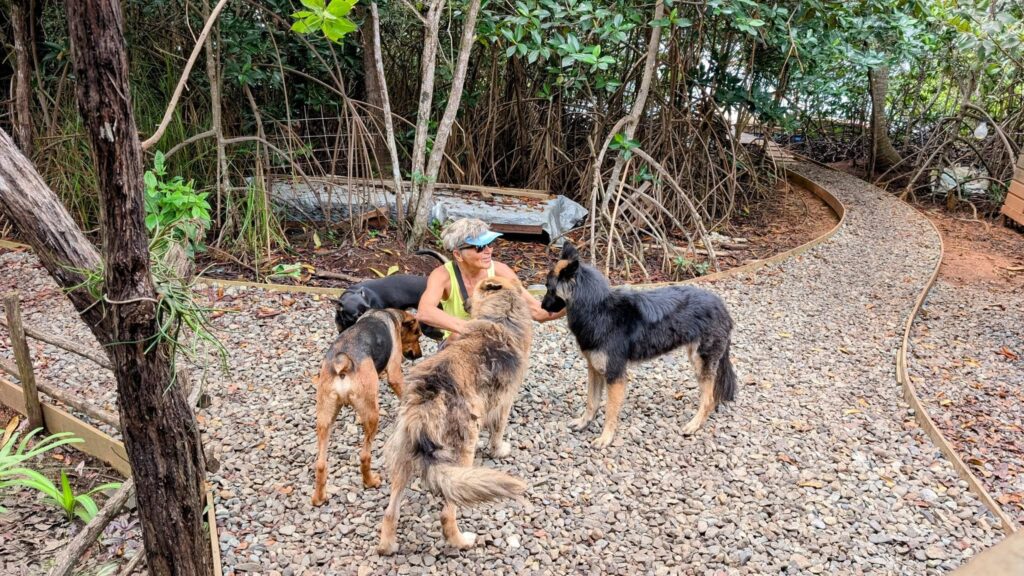
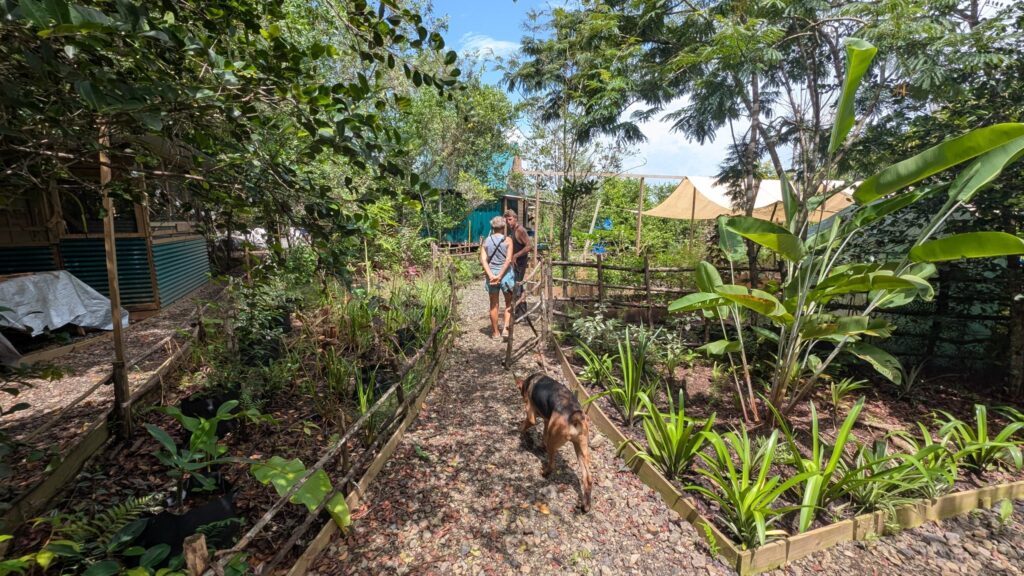
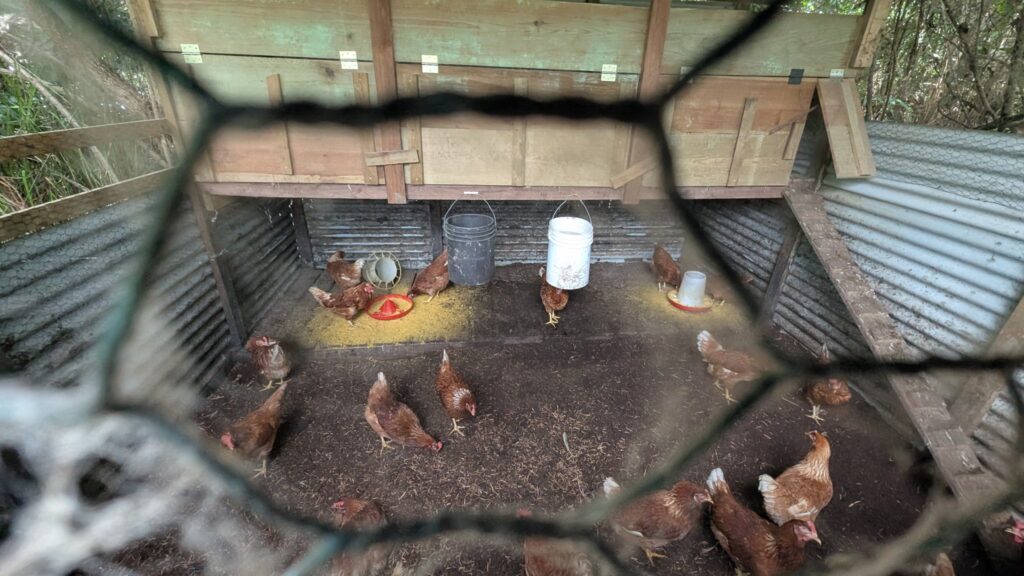
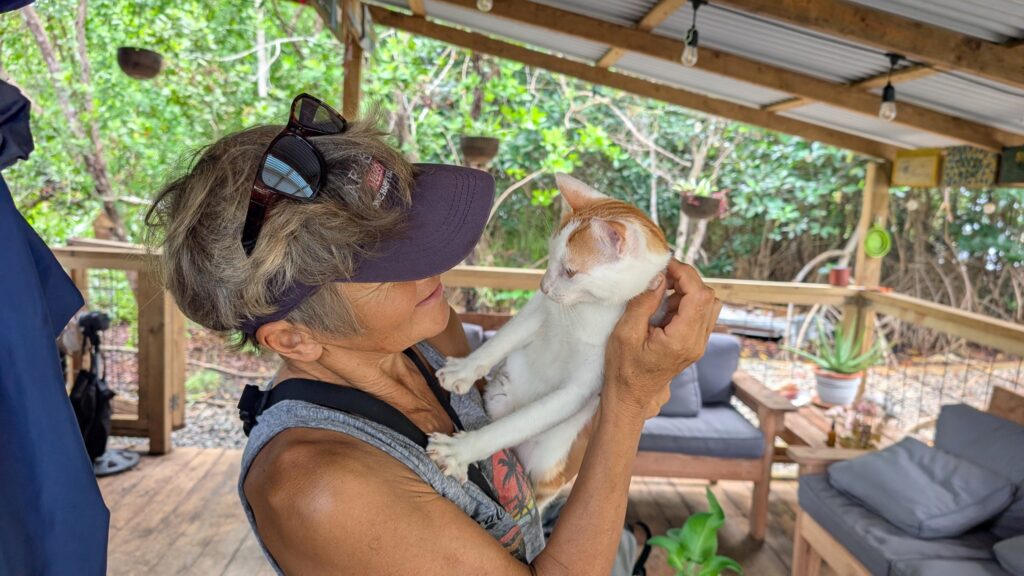
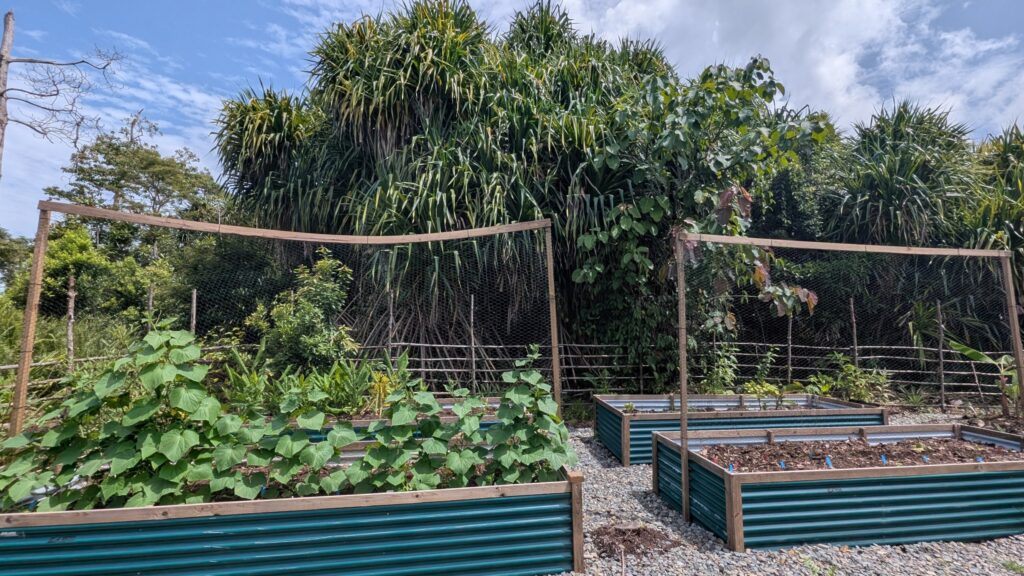
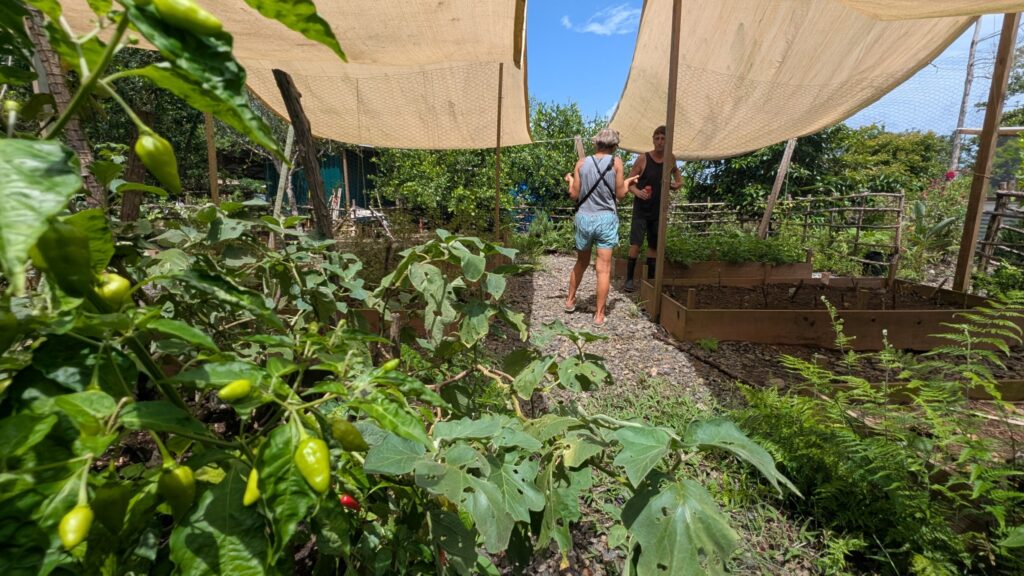
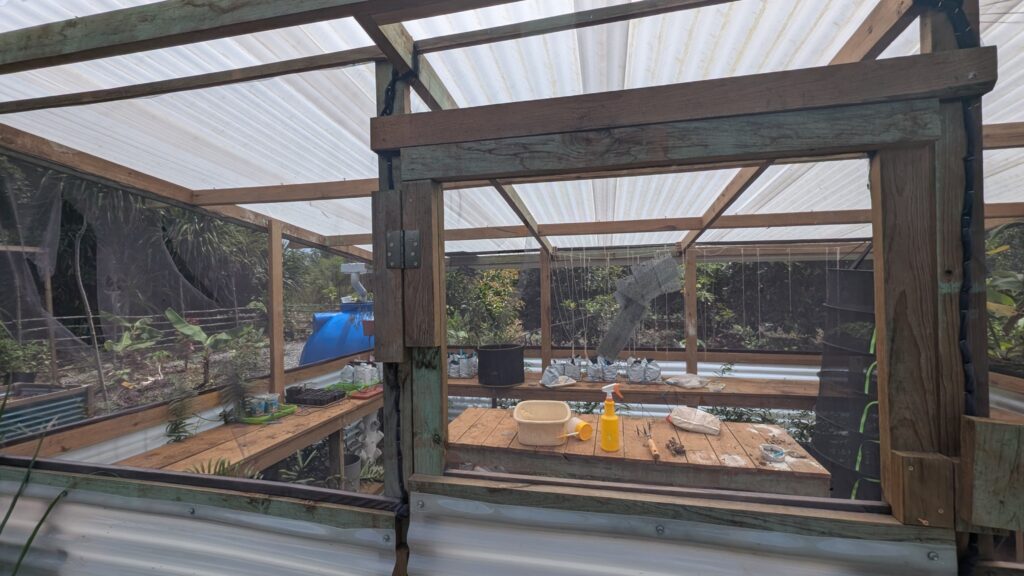
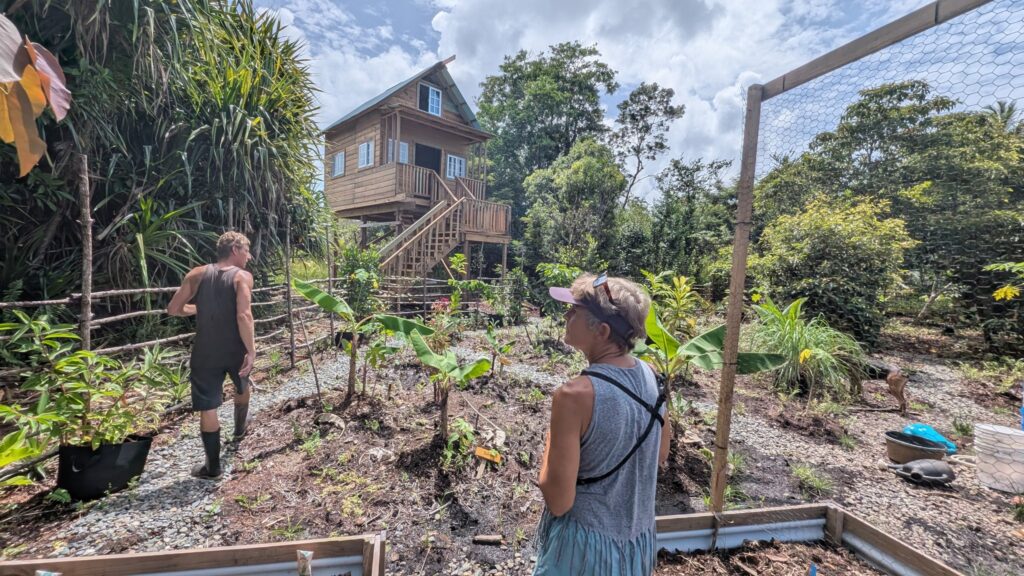
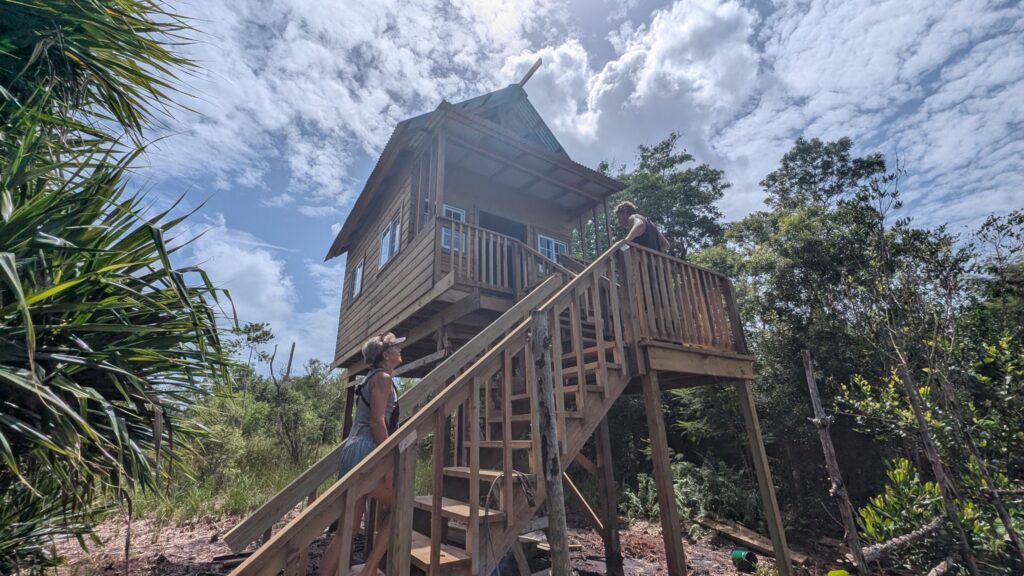
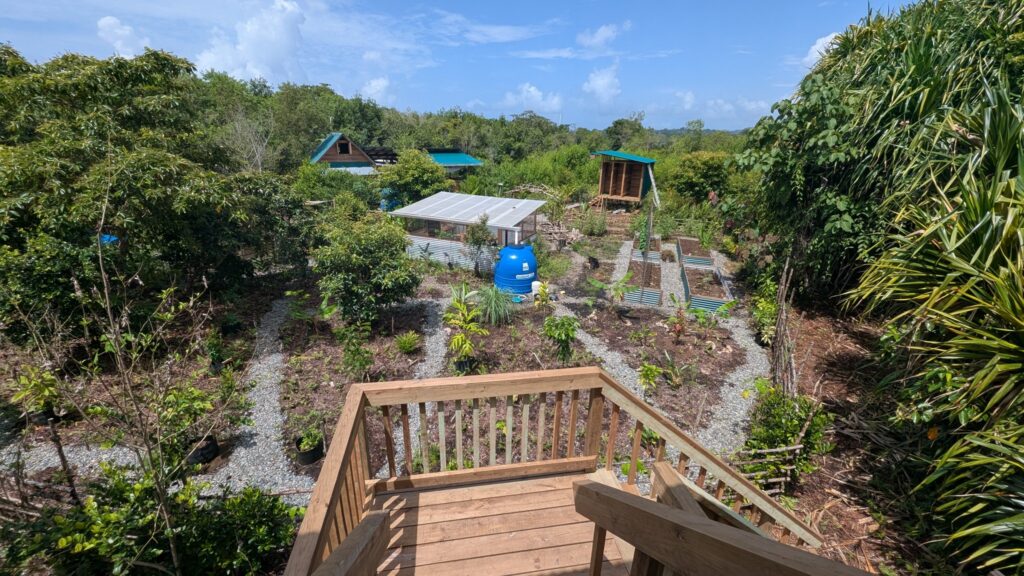
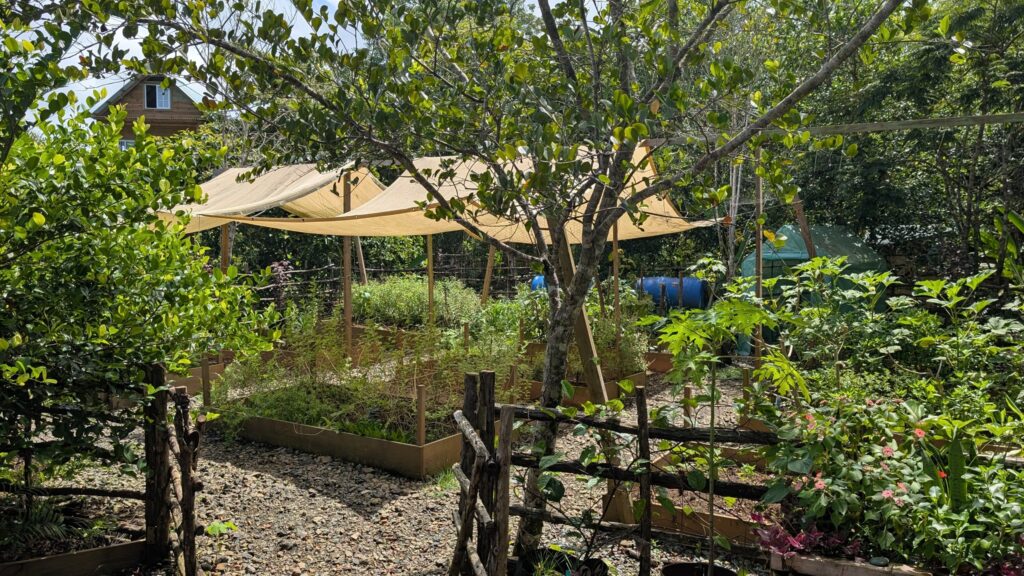
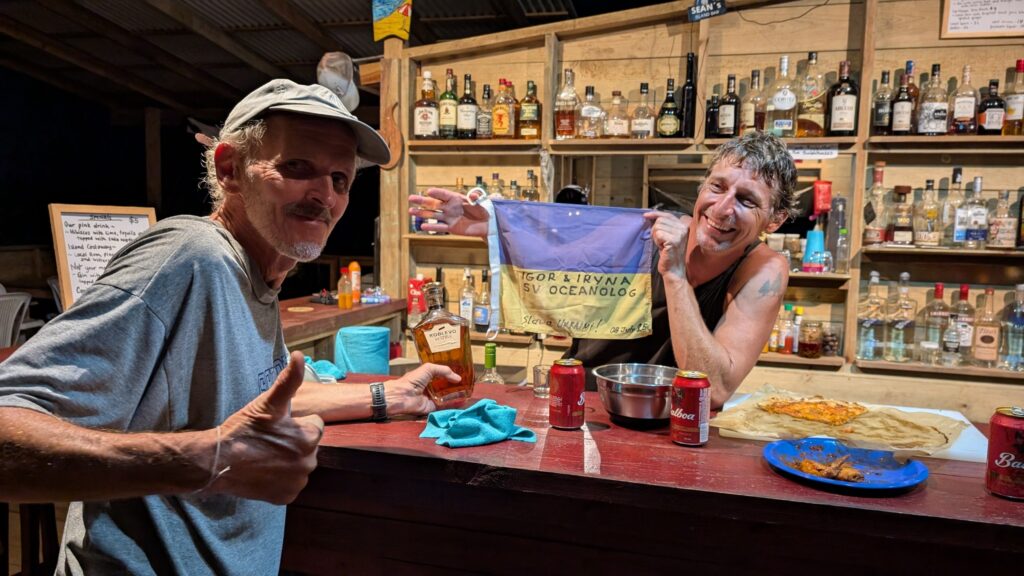
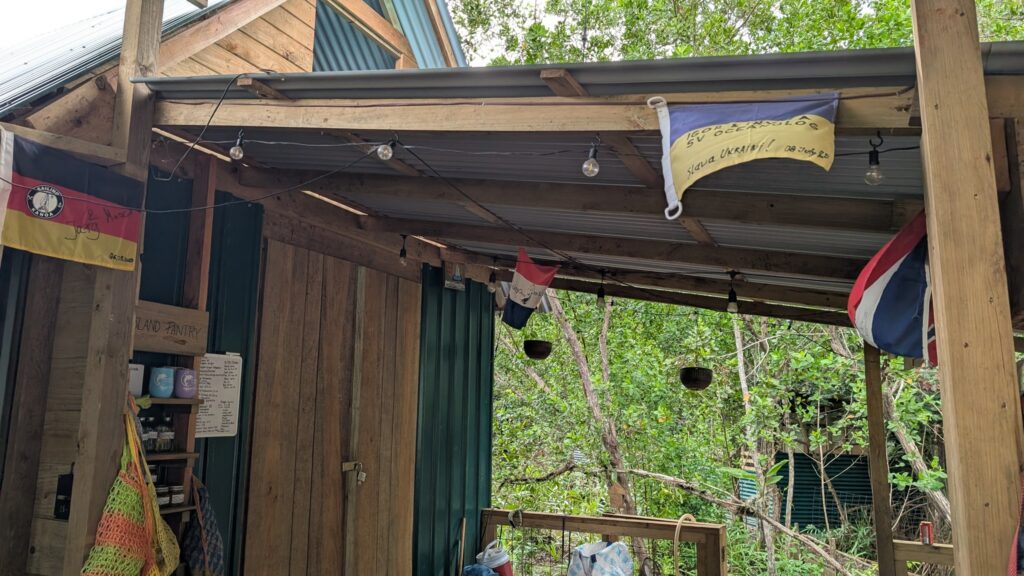
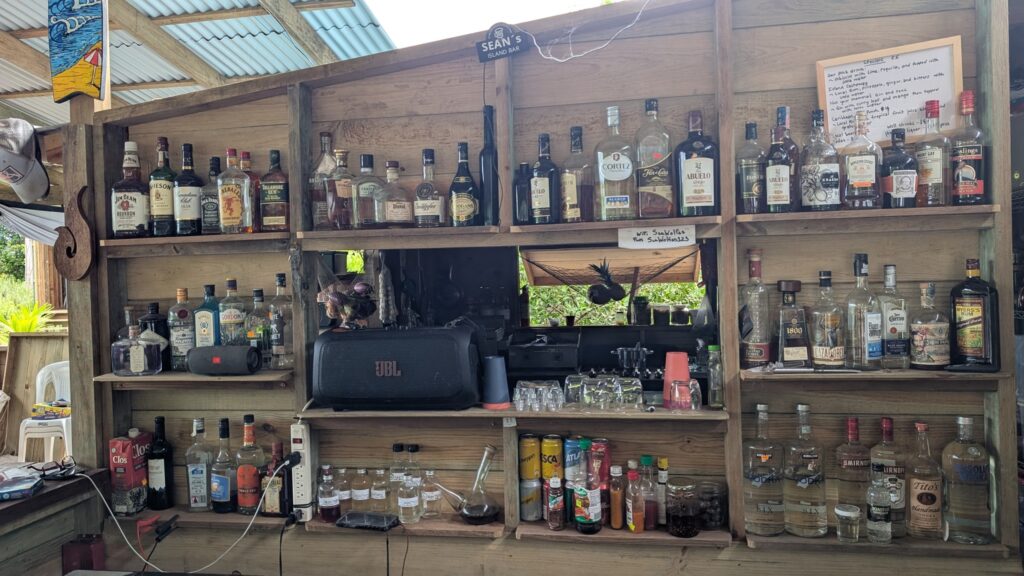
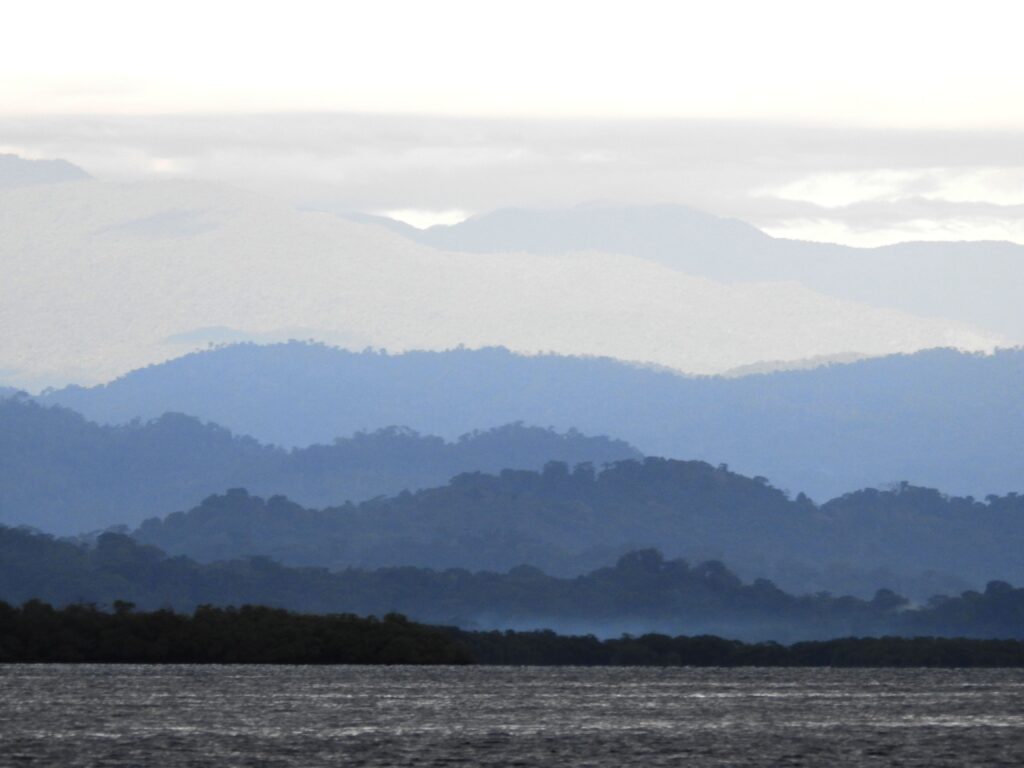
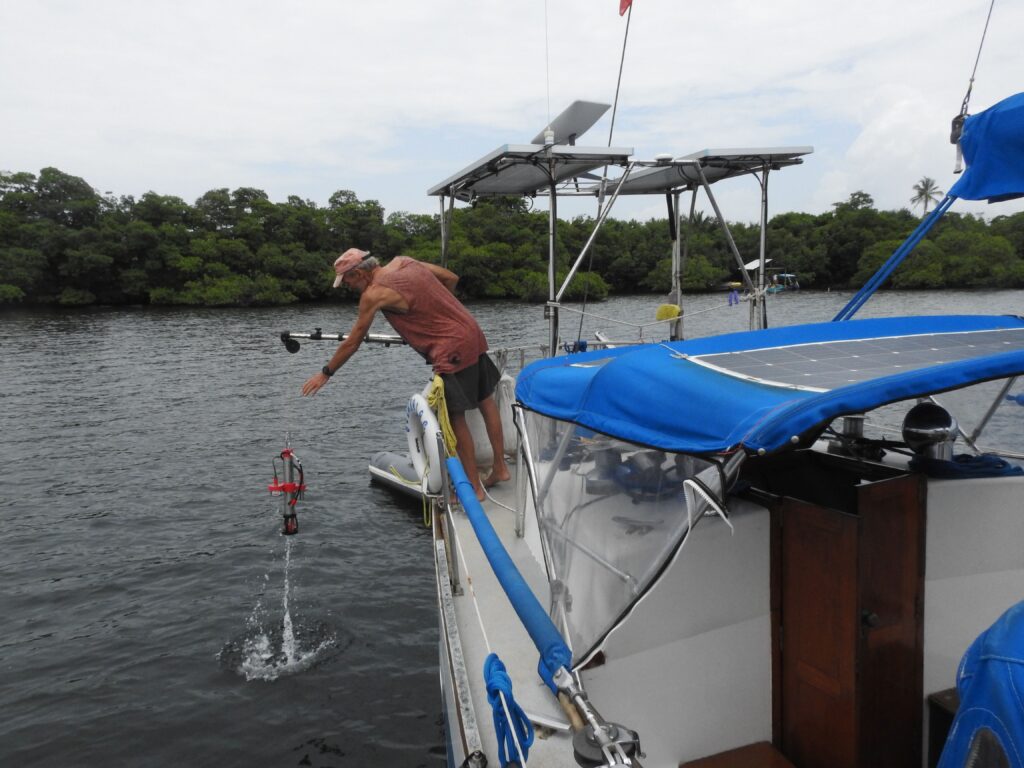

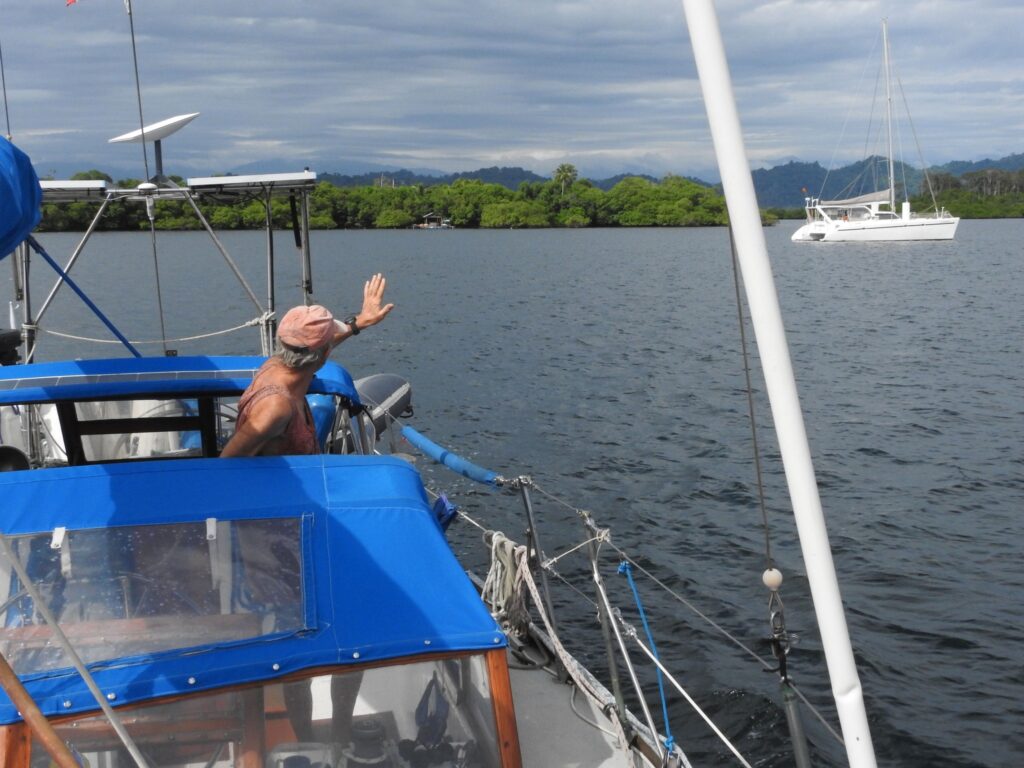
One of the most rewarding parts of sailing is the opportunity to meet fascinating people in extraordinary places. Bocas del Toro is no exception—this vibrant archipelago is home to a colorful community of expats who have built their dream homes amidst its lush landscapes.
Among them is Mia, a spirited South African woman who welcomed us with open arms. She moved here four years ago, settling into a villa nestled within 18 hectares of tropical forest. Her husband still works in South Africa, but Mia holds down the fort—alongside four energetic dogs—in what they affectionately call their own “Wonderland.”
From the very first moment we met Mia on the dock, we felt a wave of warmth and genuine hospitality. Her easy smile and joyful curiosity set the tone for our visit. Right there by the dock, we noticed a whimsical detail: a neat row of muddy boots and hiking poles, waiting like silent sentinels. It turns out that exploring Wonderland often means navigating squishy jungle trails, and these tools are essential for a joyful (and upright) adventure.
And so, off we went—boots on, poles in hand, spirits high. Because when Wonderland calls, you don’t say no.
